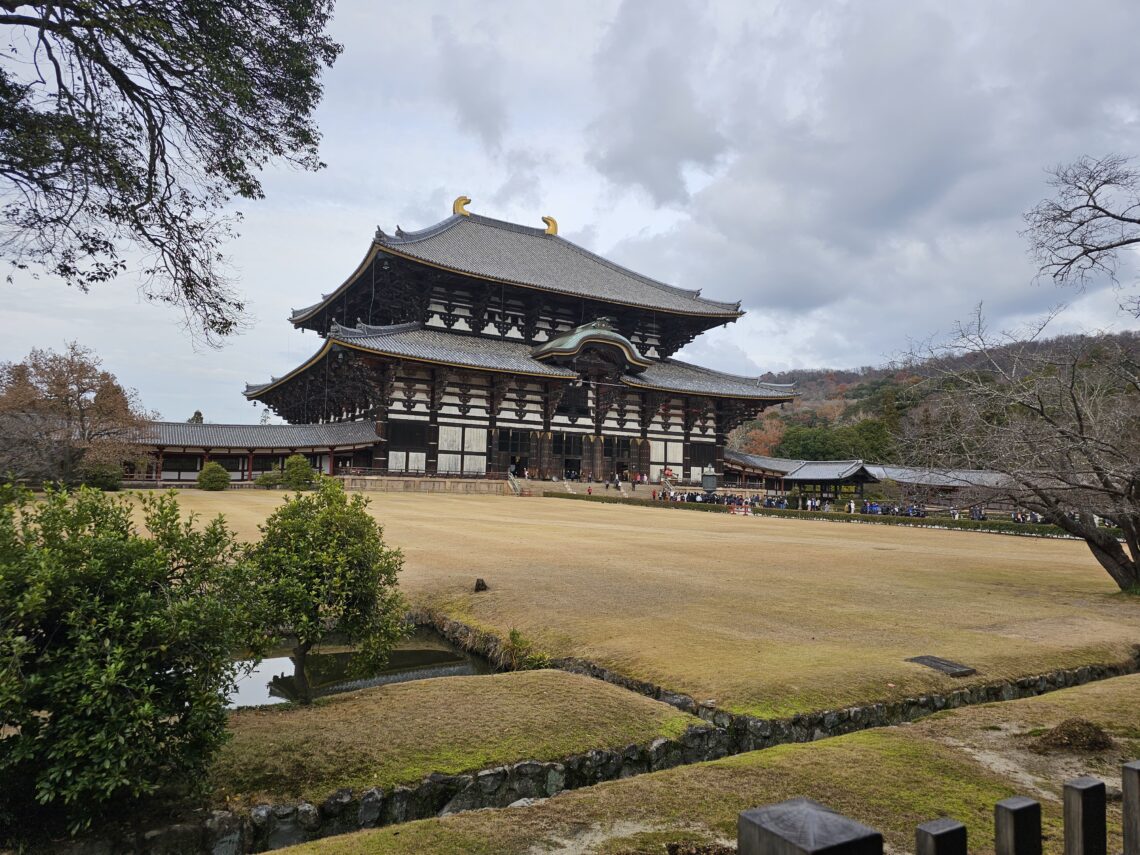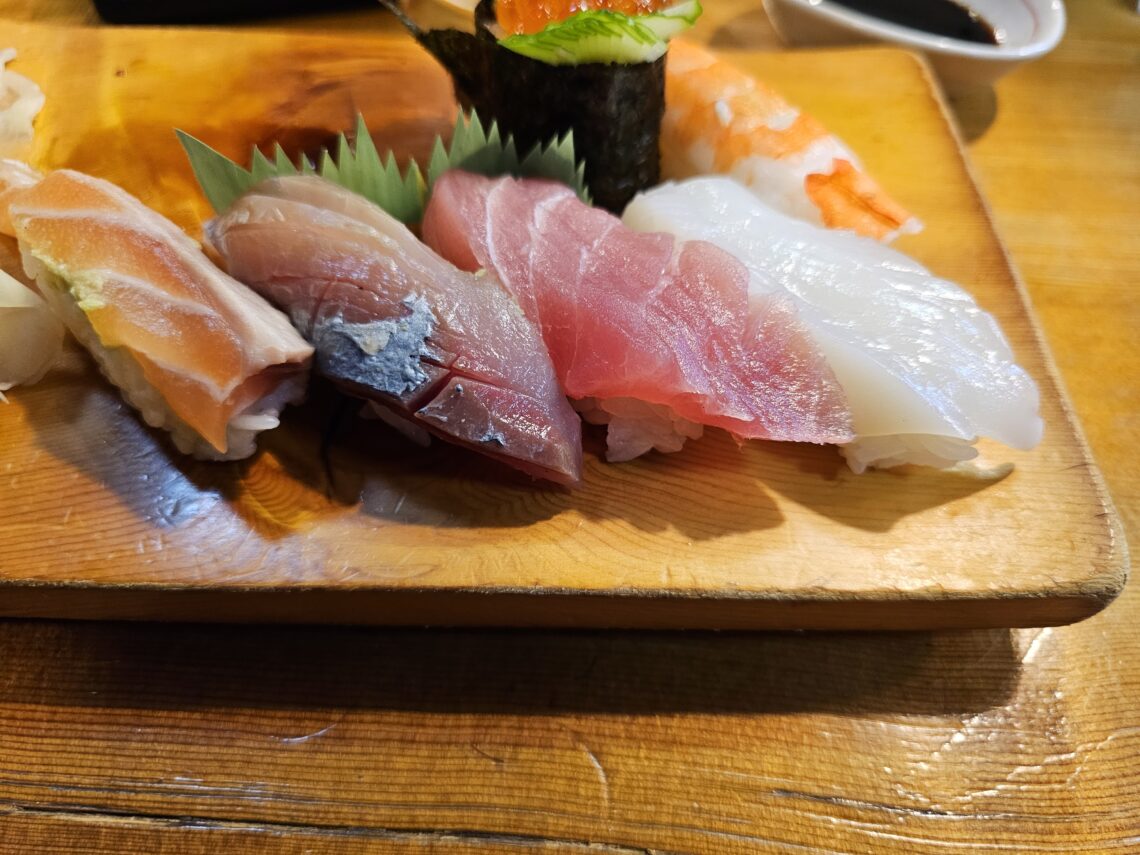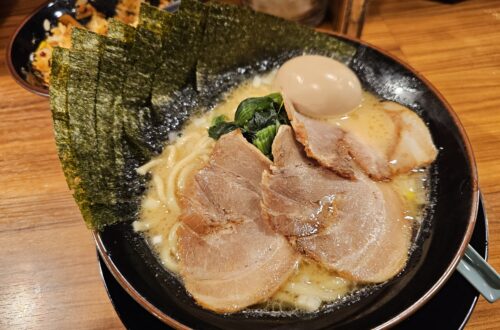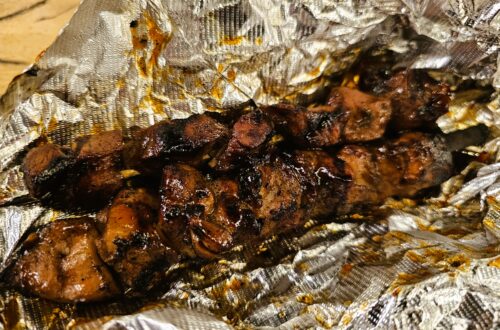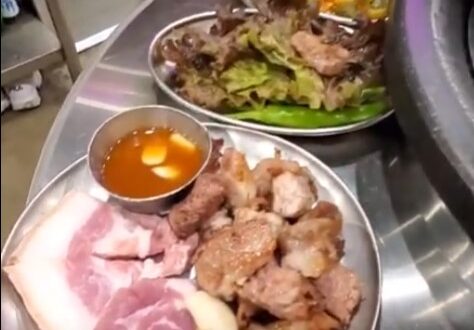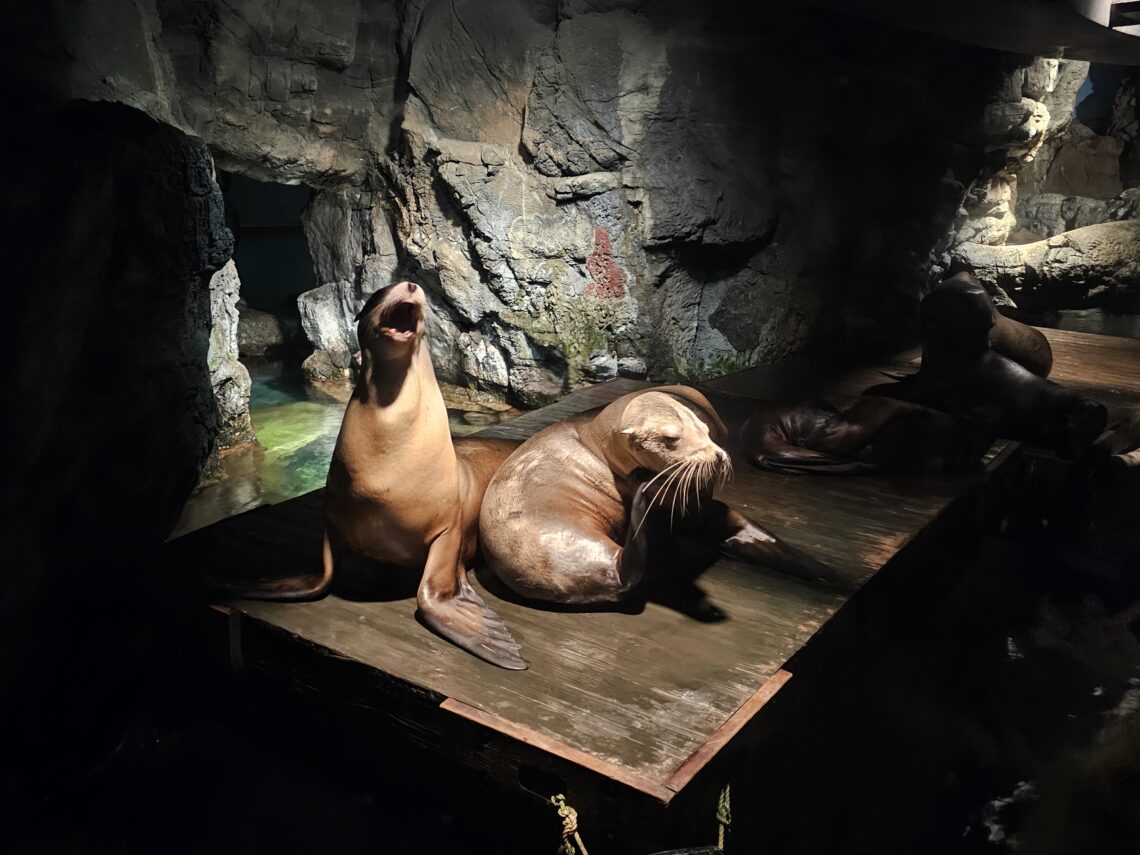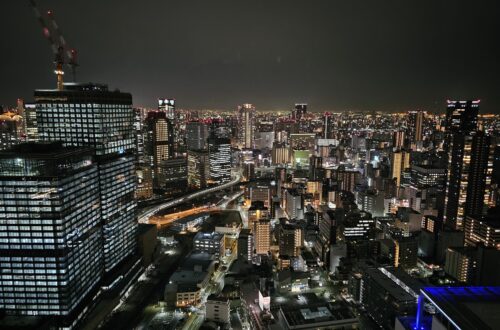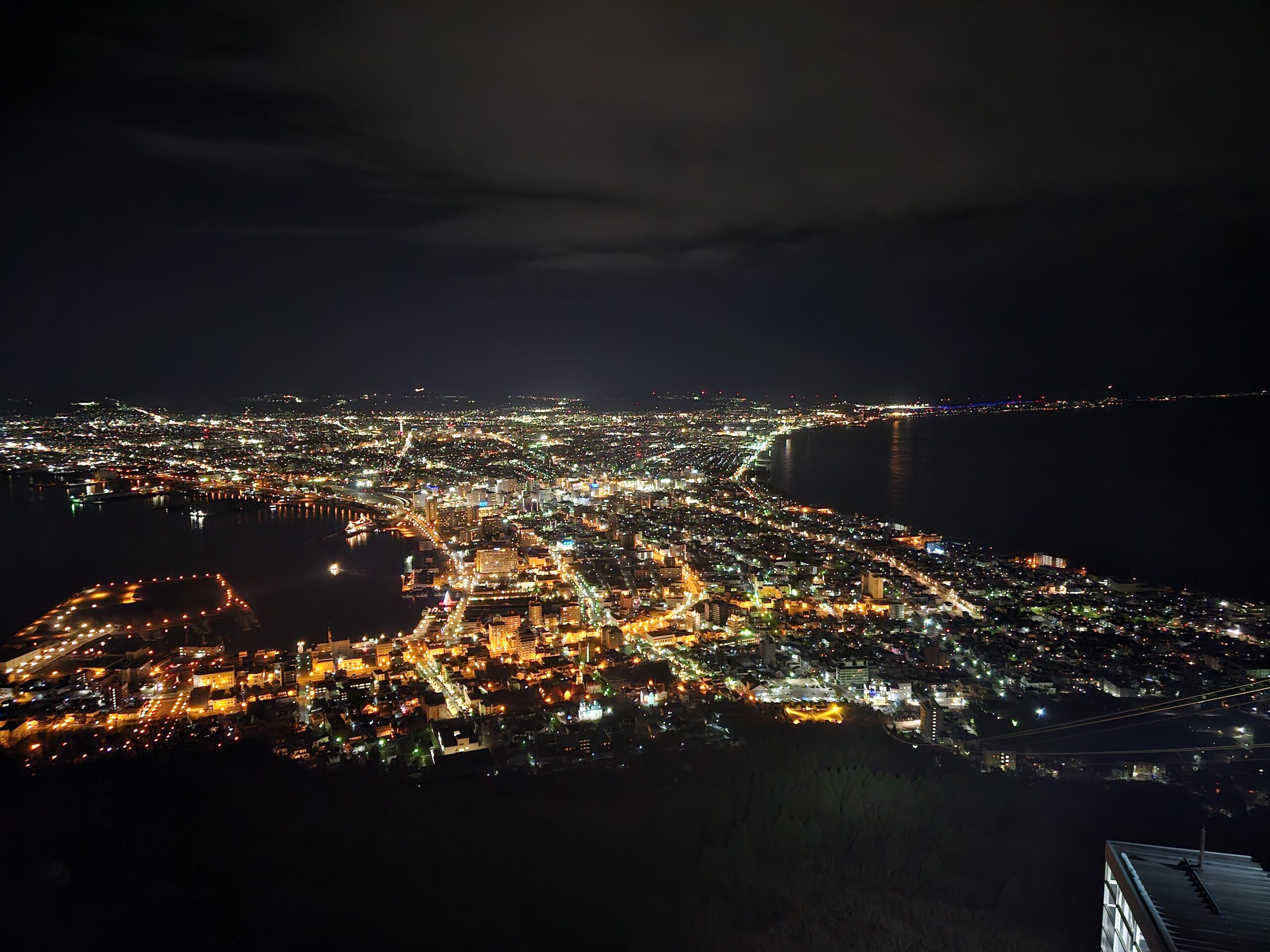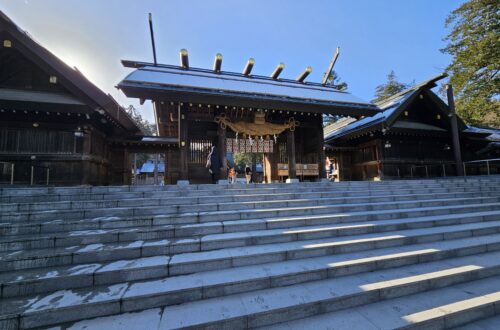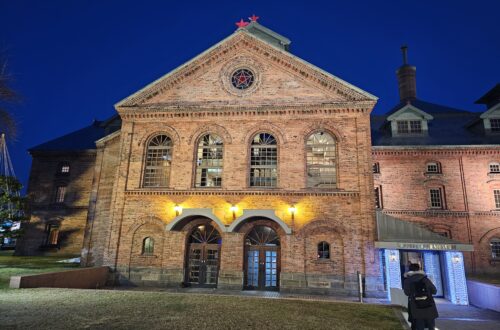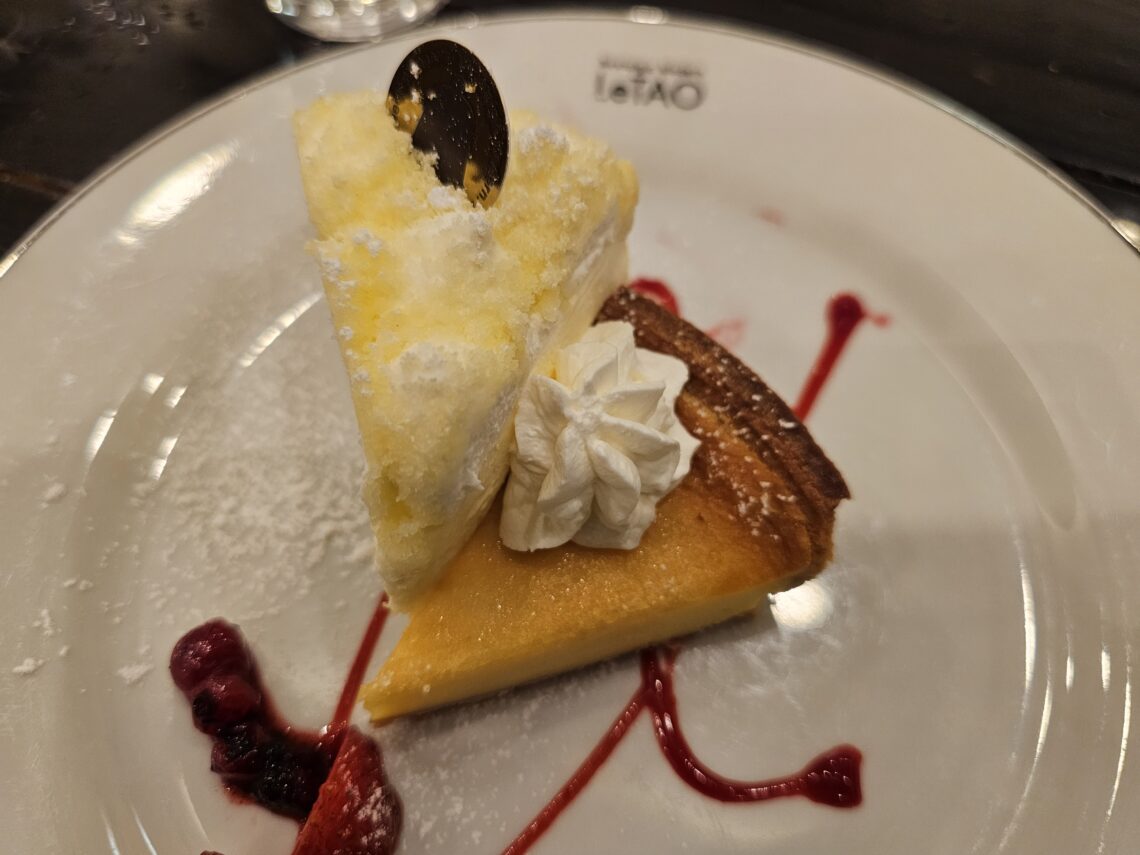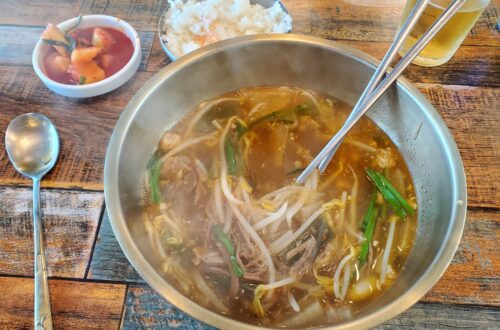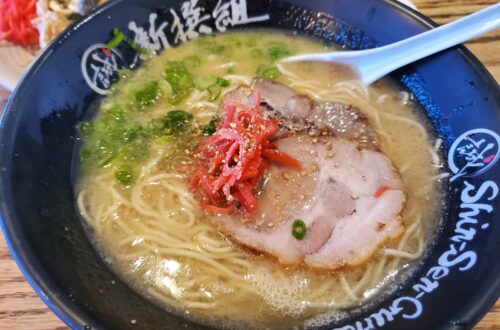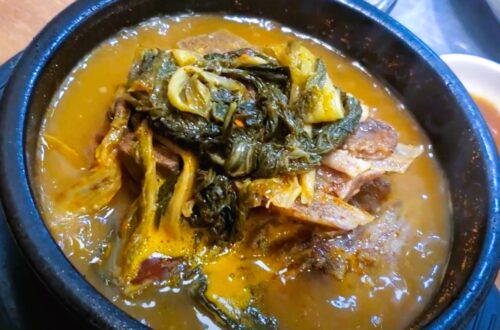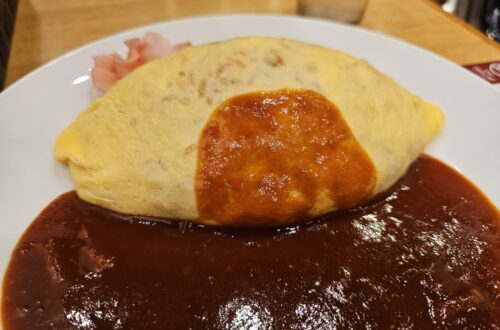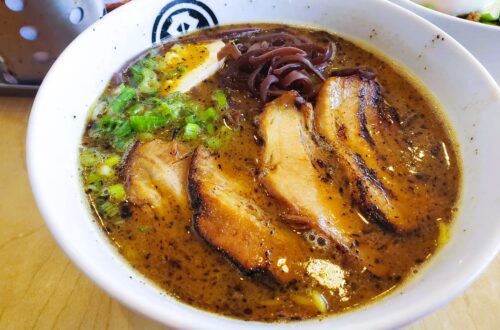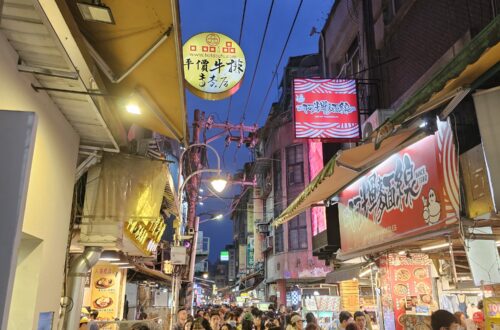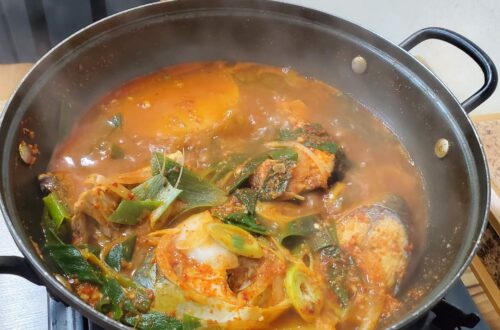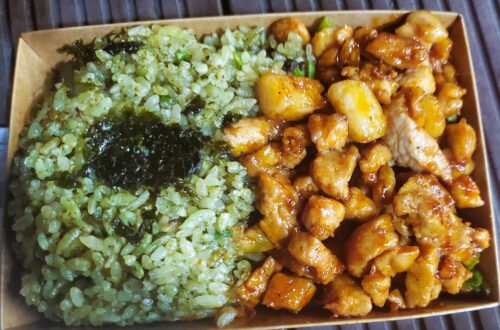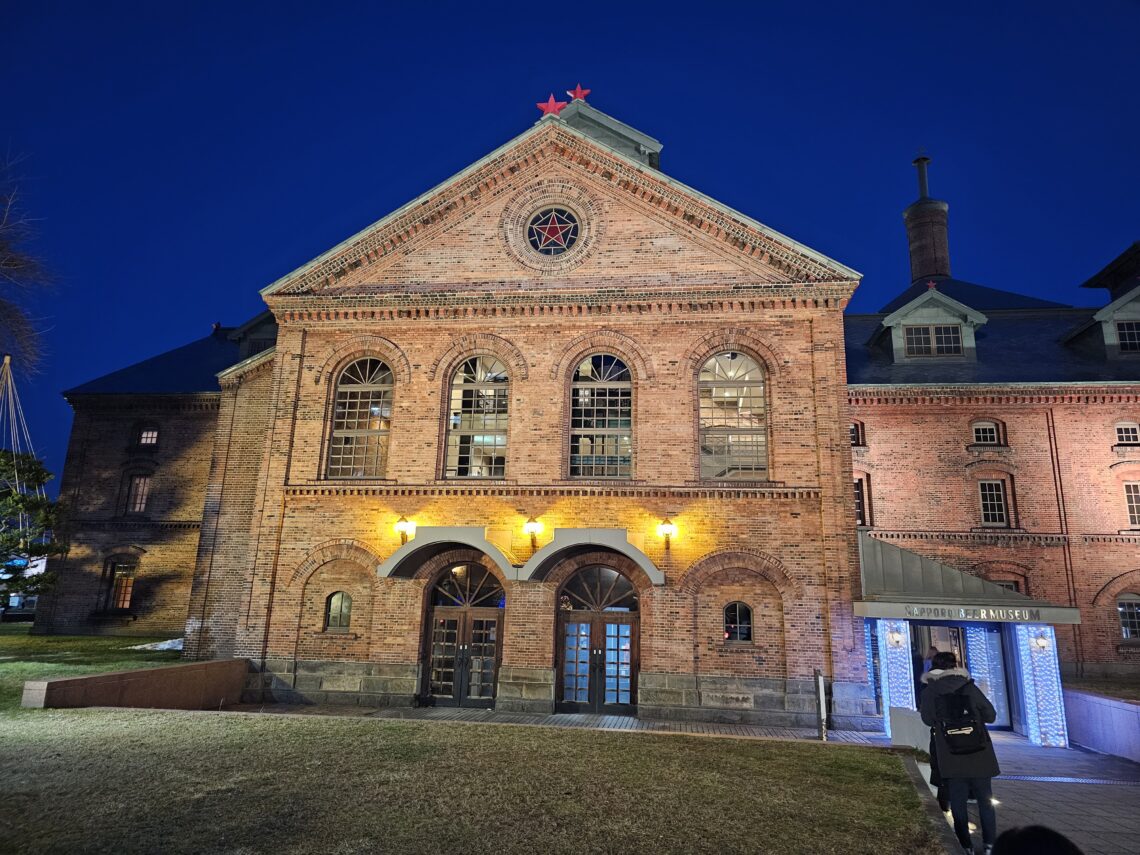-
This Observatory In Osaka Offers Breathtaking Views Of The City
There’s a plethora of things to see, eat, and do while in Osaka. One of the most popular attractions in the city is the Kuchu Teien Observatory in Osaka.
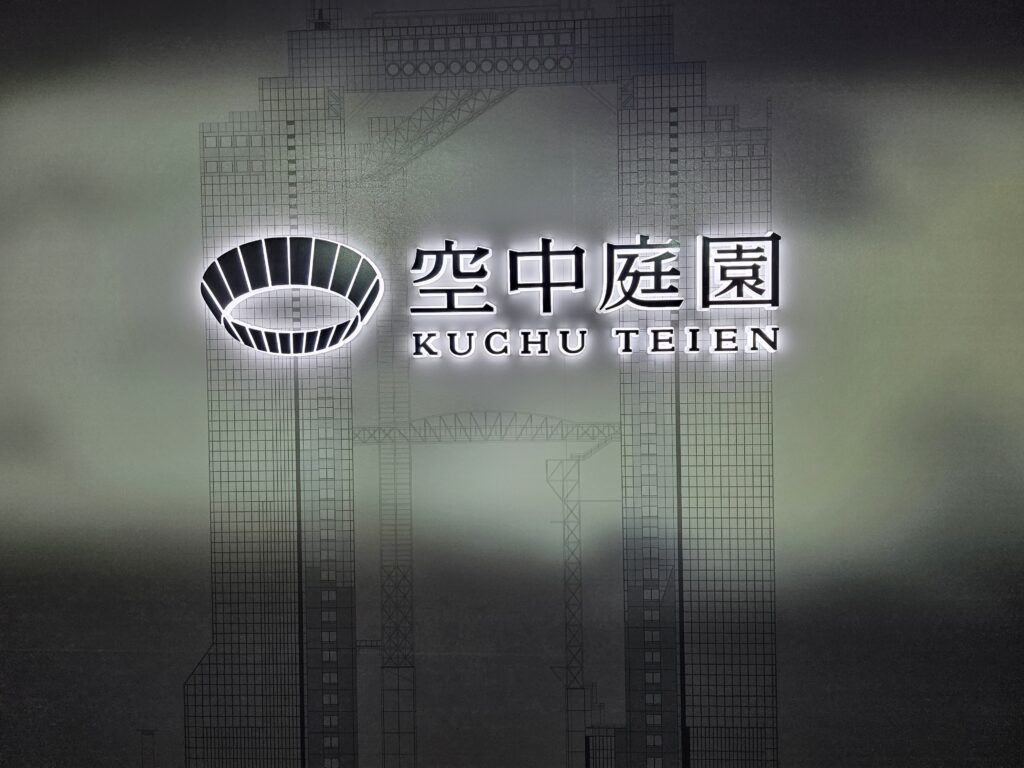
Kuchu Teien Observatory In Osaka
Located in the Umeda Sky Building, this observatory in Osaka provides a 360-degree view of Osaka from various floors in a 40-story high building.
Tickets cost 1,500 yen, ($9.50 USD). To enter Kuchu Teien you first enter on the 3rd floor where an elevator will take you all the way to the 35th floor.
From here you take an escalator from the 35th floor to 39th floor. If you’re not a fan of heights you probably don’t want to look to your left or right while on this escalator ride. Both sides of the escalator are enclosed in glass. As you go up you can see the city, it’s kind of like you’re floating in the air. It’s definitely a bit of an experience.
All the floors here are circular and provide 360-degree views of the city. The 39th floor is the first floor you can walk around in the observatory in Osaka. It contains a Gallery Shop, a Chinese Restaurant, and a Sky Lounge as well.
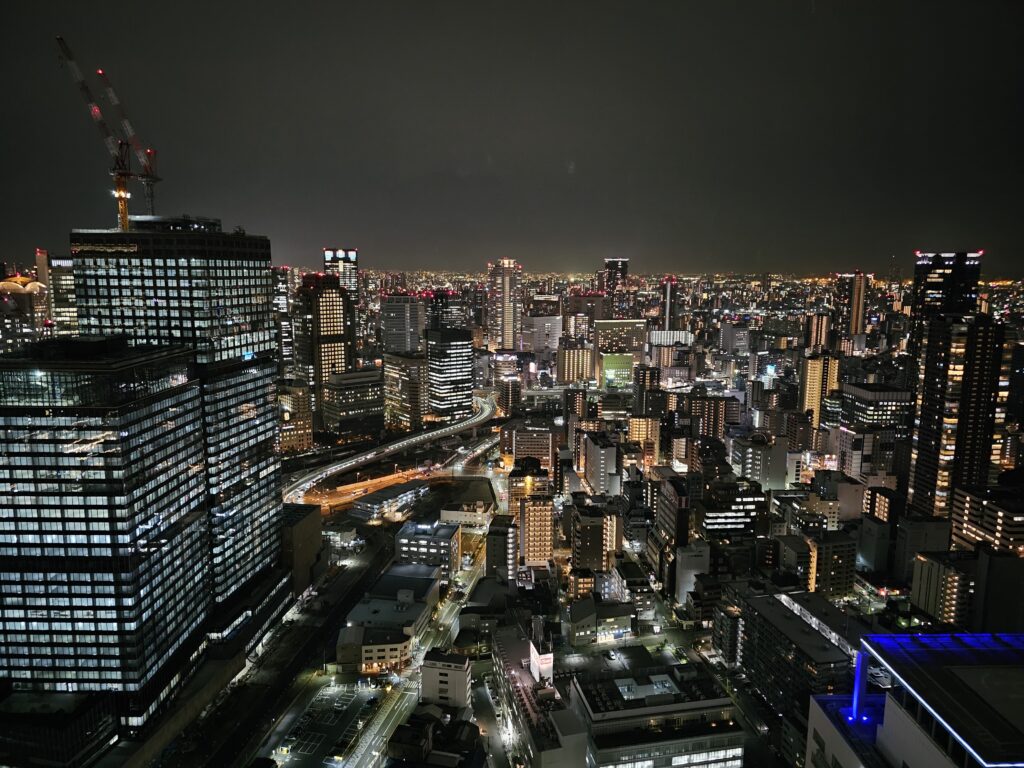
The 40th floor provides the same views as the 39th and has an additional Cafe where you can grab some food and a drink and take a seat to soak in the views of the city.
There’s also a couple of small exhibits on this floor that shows the history of the Umeda Sky Building and how it was constructed.
Once you spend some time on the 40th floor it’s time to head up to the rooftop. This is where the Skywalk is located. This is a circular walkway around the rooftop that provides the same types of views as the 39th and 40th floors but obviously without the windows!
I’m glad I went at night and was able to see the city fully lit up. The views are quite spectacular!
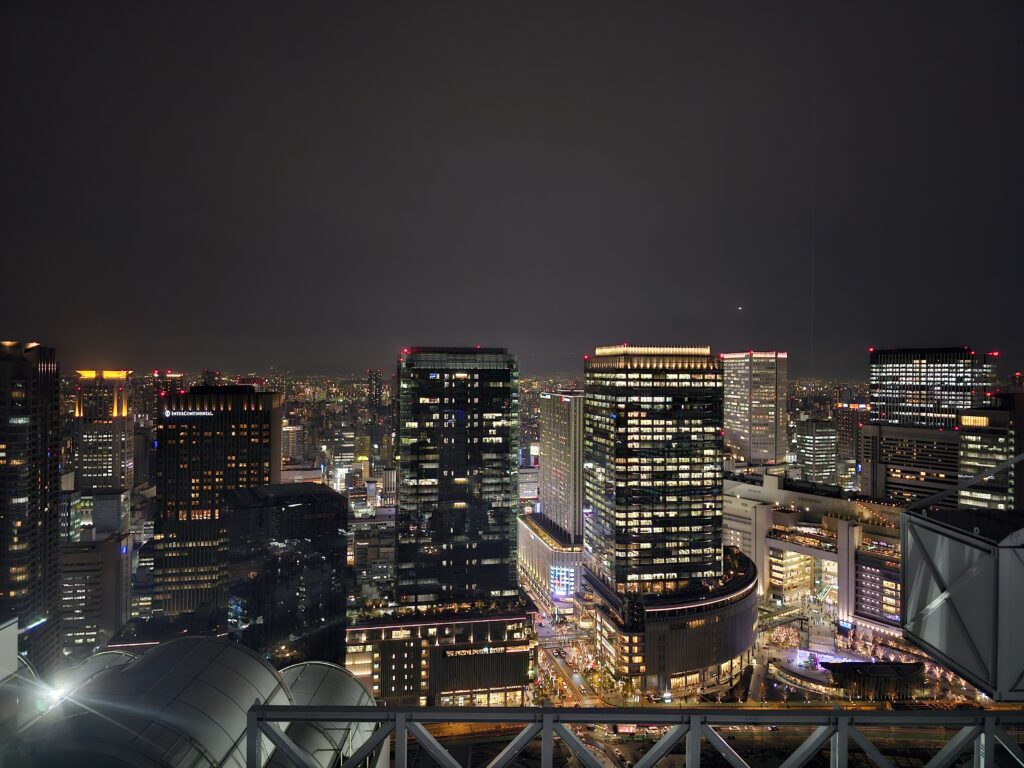
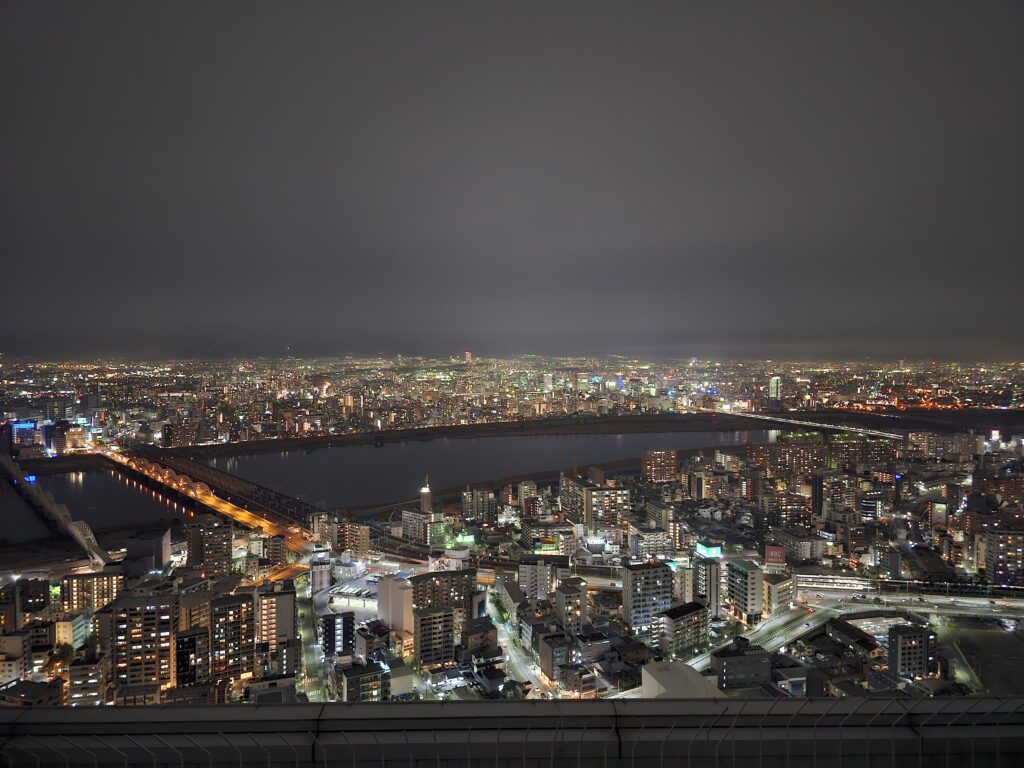
The rooftop also provides a great view of the middle of the building and how high up you really are. The design of this portion of the building is definitely quite interesting. Especially when you see the escalators which look like they’re floating in the air.

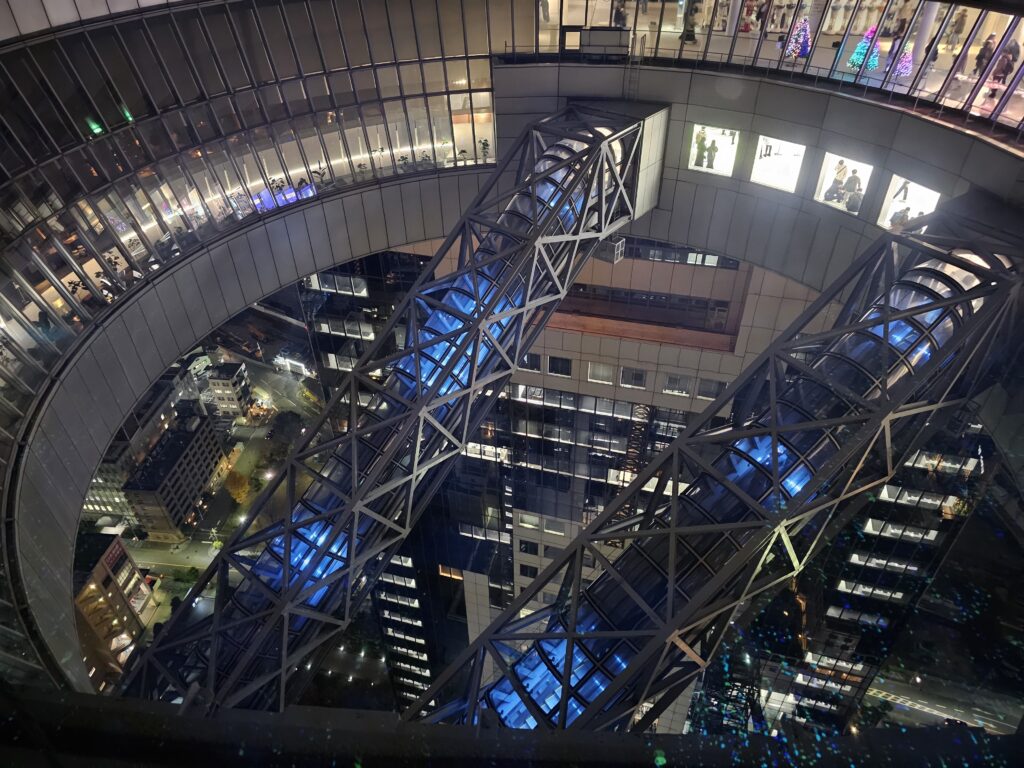
Is The Kuchu Teien Observatory In Osaka Worth Visiting?
If you’re a fan of observatory’s and views of city landscapes then you’ll definitely want to check out Kuchu Teien Observatory In Osaka. It’s a fun attraction (the escalator ride and feeling of floating about 35 floors up in the air is quite an experience) and the way the building is designed in itself is something worth gawking at. For about $10 USD this won’t break the bank either so it’s something that’s pretty fair in price. If heights aren’t your thing you may not enjoy this. The “floating” escalators may not jive well with you, nor the Skywalk. I’m not a fan of heights myself but found these elements of the attractions to be fine though.
-
Thinking Of Doing A Day Trip to Nara From Kyoto or Osaka? Here’s Some Suggestions!
Table of Contents
When thinking of Nara, one instantly gets that mental image of family or a friend that has made the trip to Nara and taken a classic selfie with multiple deer that are seemingly everywhere in the Deer Park. We’ve all seen the photos and it’s one of Nara’s biggest draws for good reason.
It’s likely the biggest reason why you’re planning on visiting. I know that was the biggest reason why I wanted to visit.
While the deer of Nara certainly live up to the hype (yes, they’re as adorable in person as in your friends photos!), Nara does have much more to offer and see as well.
Nara is a very old city and was once Japan’s capital. It’s home to some of the country’s oldest and largest temples, including the famous Todaiji Temple, making a day trip to Nara a perfect opportunity to explore it’s many offerings.
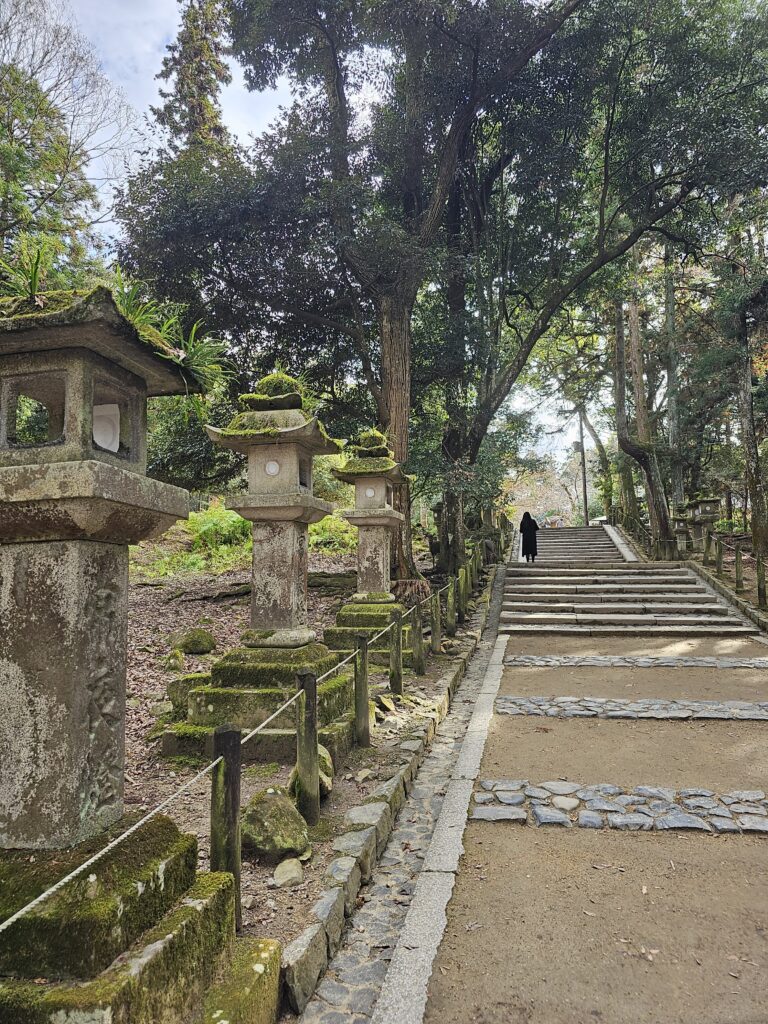
A Day Trip to Nara From Kyoto or Osaka
Nara is a very popular day trip from the neighboring Kyoto and Osaka. It’s a little less than an hr train ride from Kyoto (from Kyoto Station) and a little over an hour from Osaka as well (from Osaka Station).
The distance makes it a perfect day trip from either of the neighboring mega cities. Nara Station is also in a great location. You can walk directly from Nara Station to Sanjo Dori Street to all the major sites and Deer Park. It will definitely be a lot of walking but it’s certainly doable.
Sanjo Dori Street
When exiting Nara Station if you turn left and walk up the first major street you come across that will be Sanjo Dori Street. Most likely many people from Nara Station will be taking this route as well so you can just follow the crowd.
Walking down this street will take you directly into Nara Park which is where you can spend the whole day essentially. The street itself has many different souvenir shops and other stores and places to grab some food. With it being so close to Nara Station it’s a great place to stop off and get some souvenirs on your way back to the station at the end of the day,.
A very popular shop is Nakatanidou. Nakatanidou is famous for its live mochi making displays and its fresh mochi.


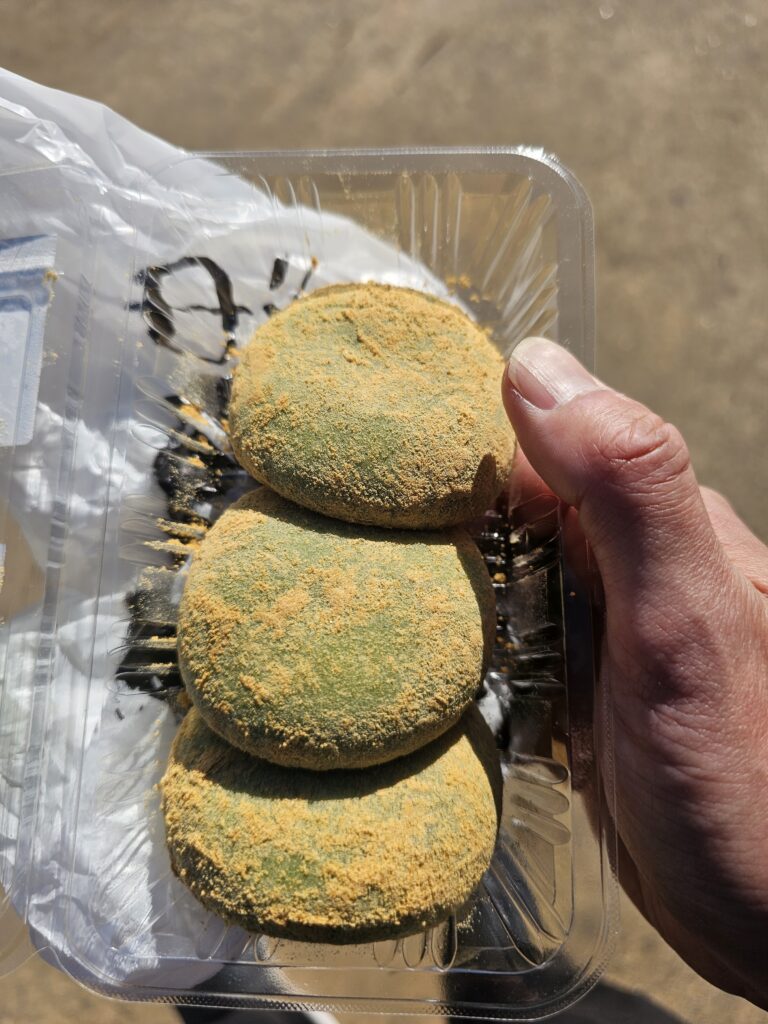
You can grab a three pack of these freshly made mochi for 540 yen, $3.81 USD. The mochi is unbelievably fresh. Soft, chewy, and filled with red bean paste, these are a perfect snack prior to entering Nara Park.
Nara Park
After enjoying some fresh mochi you can walk a little further down Sanjo Dori Street to enter Nara Park.
The park is massive, measuring over 660 hectares. This is where you’ll find all of the roaming deer and Nara’s most famous temples. Even devoting an entire day here you won’t be able to see everything, it’s just too large. But visiting all the main temples while enjoying the wild deer is certainly achievable during a day trip to Nara!
Kofukuji Temple Grounds
If entering the park through Sanjo Dori Street, Kofukuji Temple grounds is the first temple you’ll come across. There’s quite a few structures located here and the area is quite big. The five story pagoda – Kofuku-ji Gojunoto – is easily visible and towers over the other Kofukuji structures. The main temple is the Central Golden Hall.
The grounds are free to roam but The Central Golden Hall, the Eastern Golden Hall and Kofukuji’s National Treasure Museum require an entrance fee. I walked around a little bit but didn’t devote a ton of time here. If stretched for time a quick walk through with a few photos will suffice. You can always spend more time here on the way back from your day in the park as well!
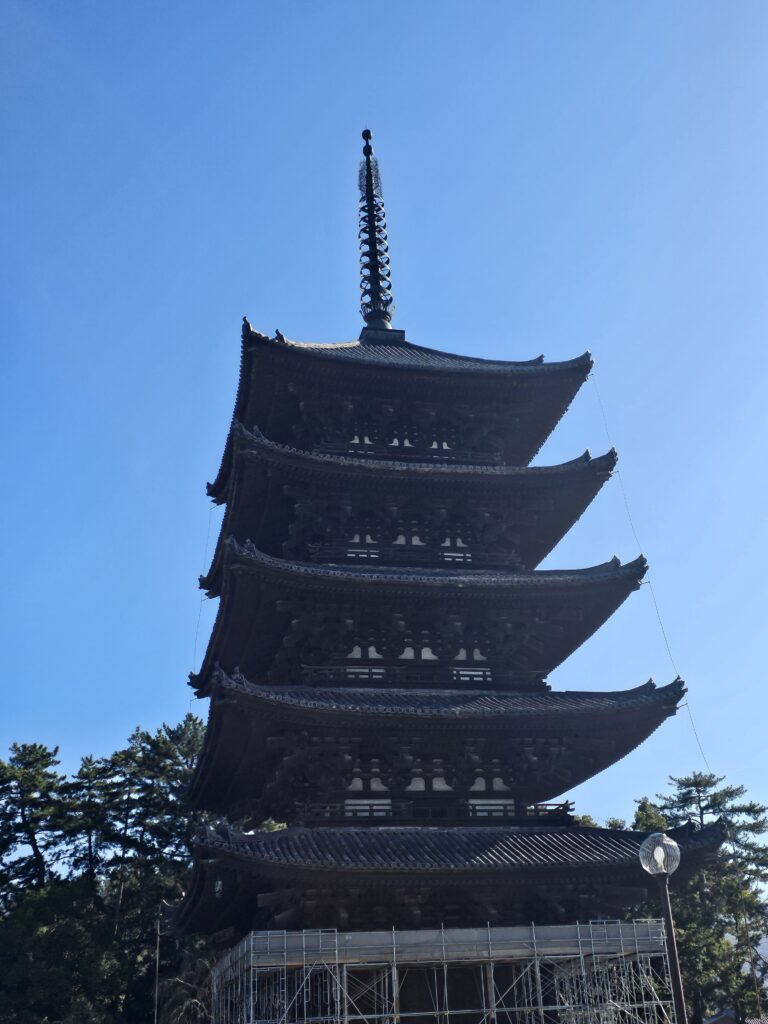
Kofuku-ji Gojunoto 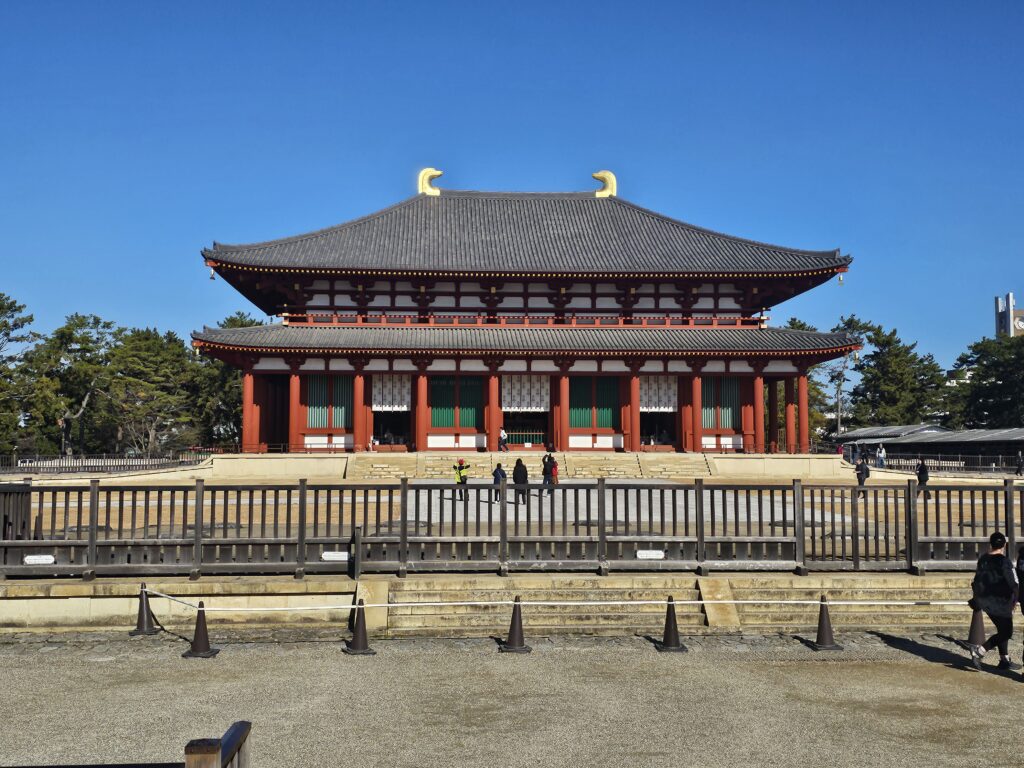
Central Golden Hall Inside Nara Park
Once you get deeper into the park, you realize just how large it is. It’s a huge wide open park with deer roaming everywhere. And the deer are EVERYWHERE. It’s easy to see these deer and think they’re domesticated, they are definitely well behaved.
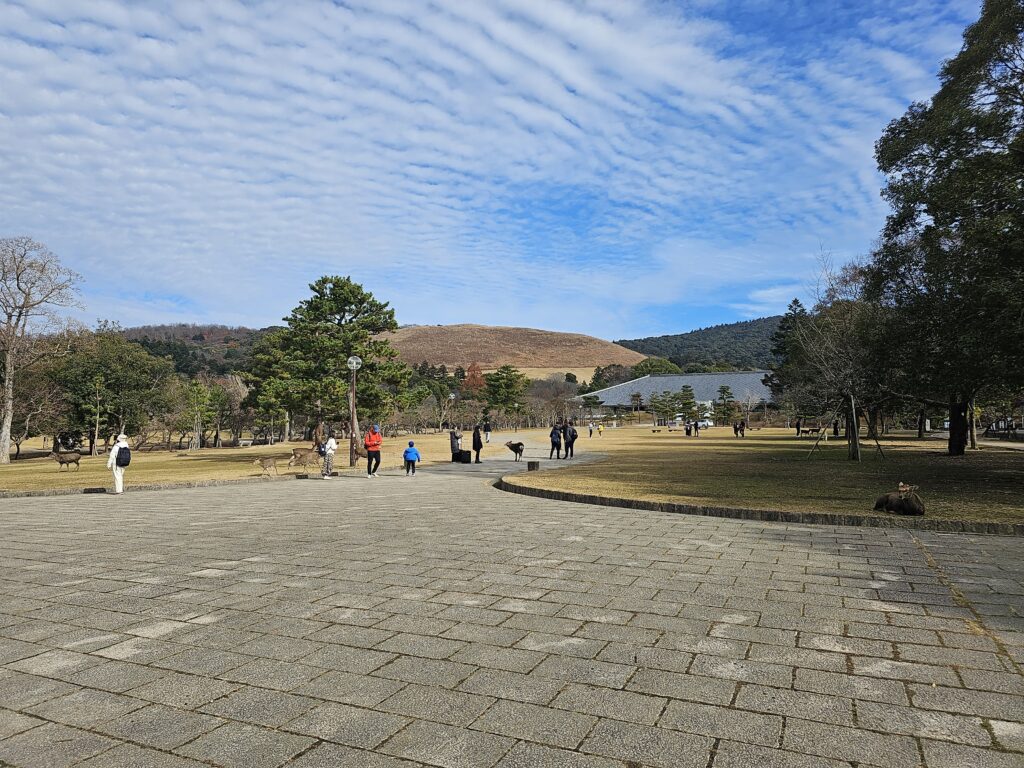
You’ll find clusters of deer chilling near entrances to the park, which is where you’ll find vendors selling rice cakes (200 yen, $1.27) that you can feed the deer. It’s important to keep in mind that they aren’t domesticated and to treat them as such. They will certainly start crowding you once they realize you have rice cakes so best get that camera ready!
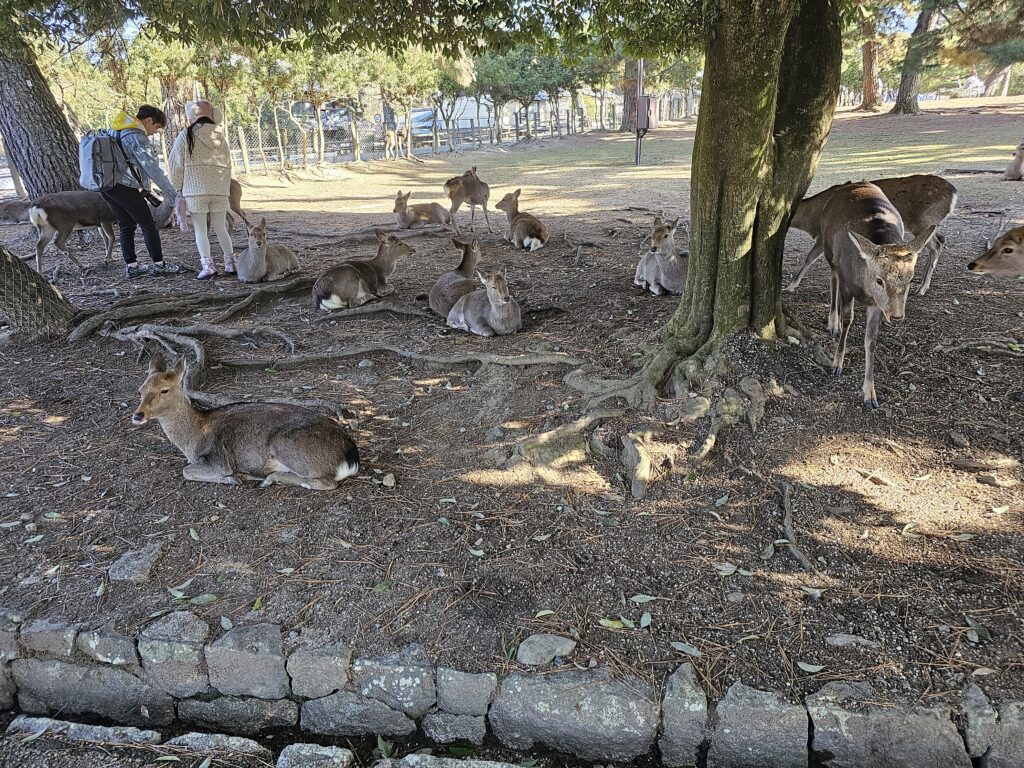
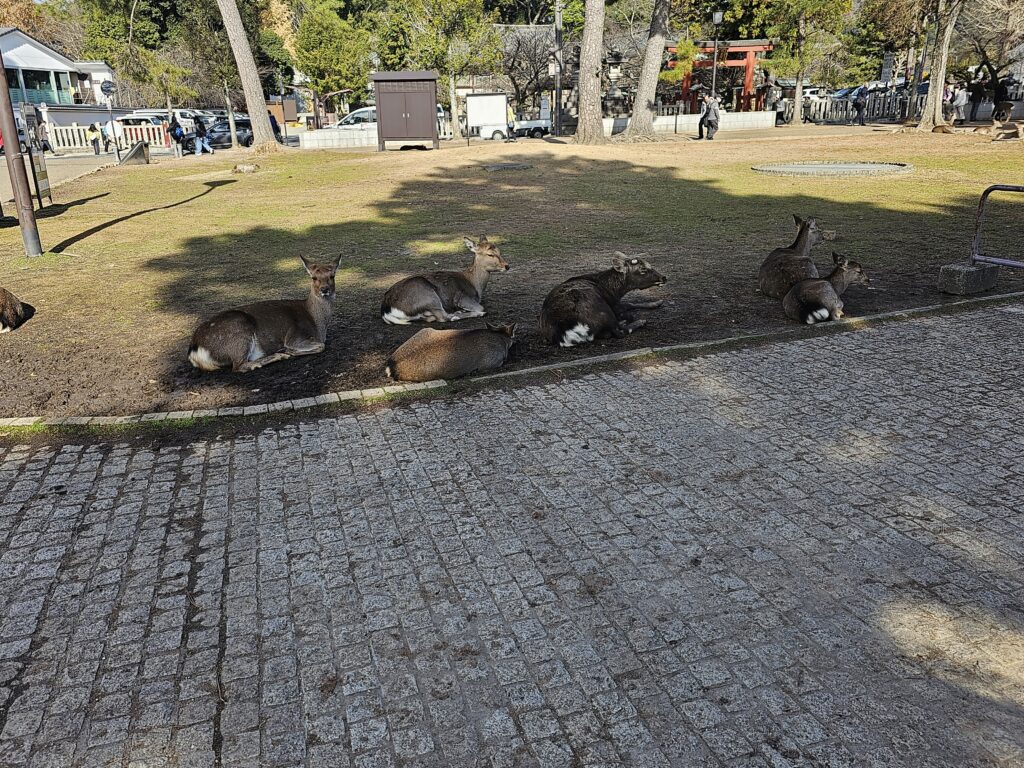
It’s definitely a fun experience to walk through the park with so many deer around. I thought they would be contained to one portion of the park but they are literally everywhere so it’s a truly unique experience.
Isuien Garden and Neiraku Museum
The Isuien Garden and Neiraku Museum are located near the Todai-Ji temple grounds and are about a 10-15 minute walk from the Kofukuji Temple Grounds. There’s an entrance fee for this (1200 yen, $7.63 USD). There are two traditional Japanese gardens located here and a small museum.
If you need a break from temples and deer this is a nice spot to bask in some peace and tranquility while appreciating the well-kempt gardens. I always love Japanese gardens due to how serene and beautiful they are and Isuien Garden certainly lives up to those traits. The garden and museum are both quite small so it will not take much time to walk through both.

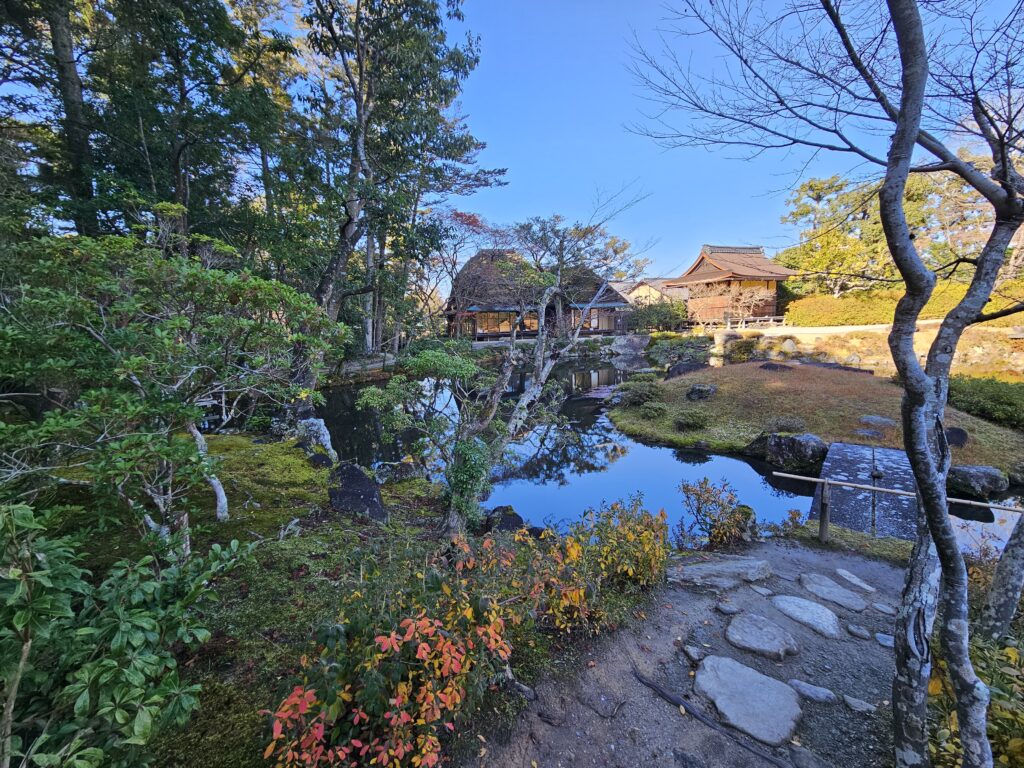
Todai-Ji Temple
The most famous and popular destination of Nara is Todai-Ji Temple (600 yen, $3.81 USD, entrance fee). It’s a UNESCO World Heritage site designated as one of the historic monuments of Ancient Nara. This is a must see during a day trip to Nara.
Constructed in 752, the temple was once one of the Seven Great Temples and wielded great power and influence. Todaiji’s main hall, the Daibutsuden, is one of the world’s largest wooden buildings standing at 57 meters in length.
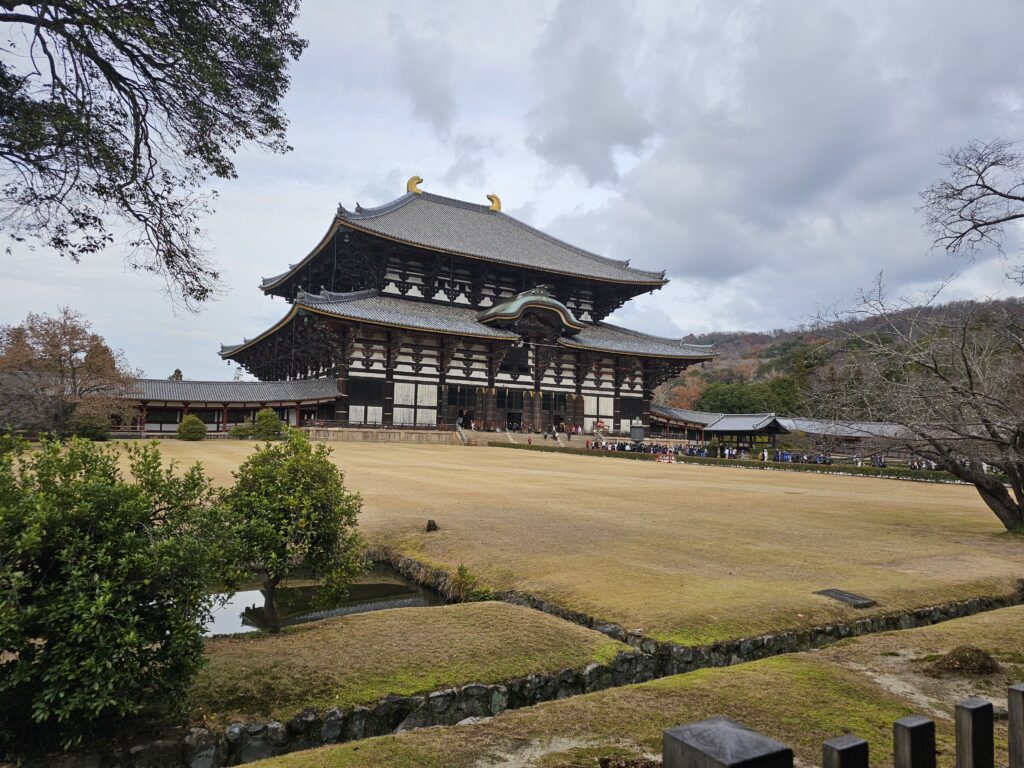
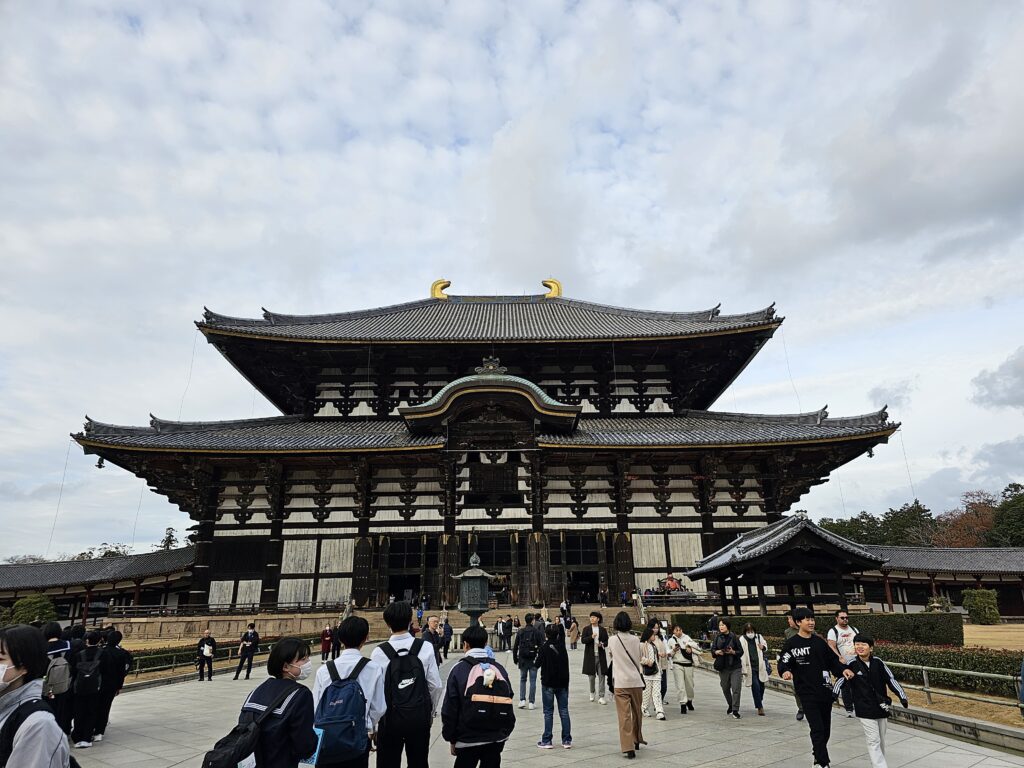
Prior to sustaining fire damage which required the temple to be rebuilt in 1709, the orginal temple once stood at 88 meters in length, so it was actually 30% larger. The building is an impressively massive wooden building as it currently stands, so one can only imagine what it once looked like hundreds of years ago in it’s original size.
Daibutsuden means Big Budda Hall and housed within the main hall is a 15 ft seated Buddha. This enormous bronze statue was created in 752 and is the centerpiece of the temple. It’s the first thing you encounter once entering the temple and is certainly a sight to behold. There are other fantastic statues within the temple as well. Overall, this is a really cool temple, just due to the sheer size, the huge Buddha statue and the other statues within it.
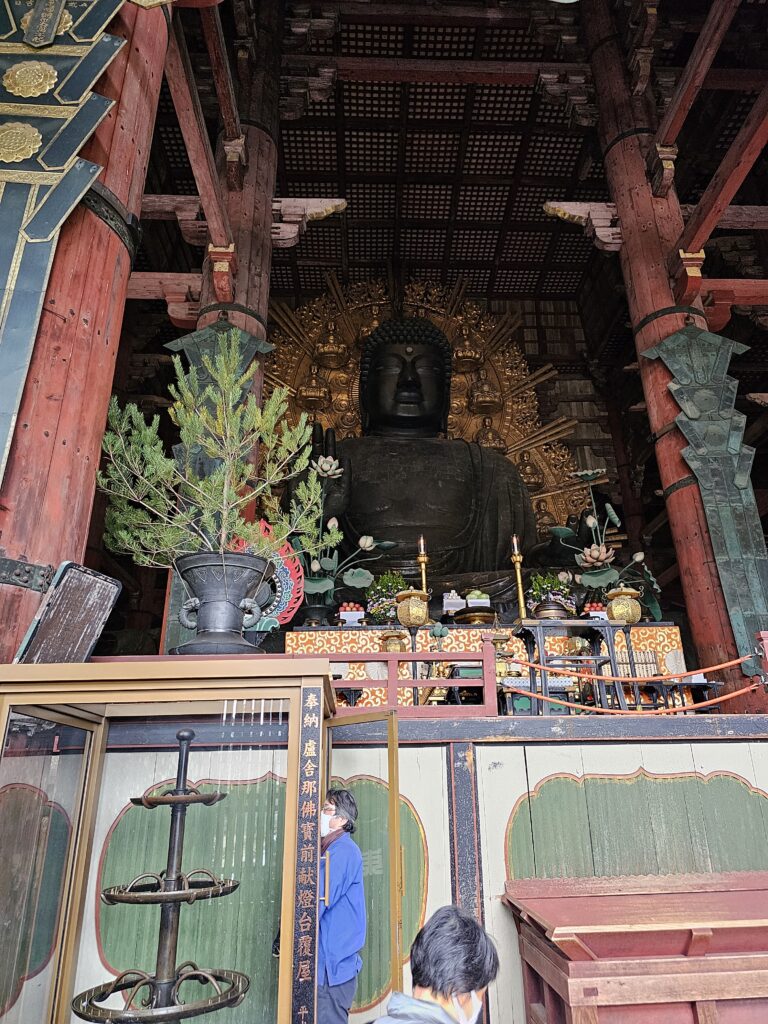
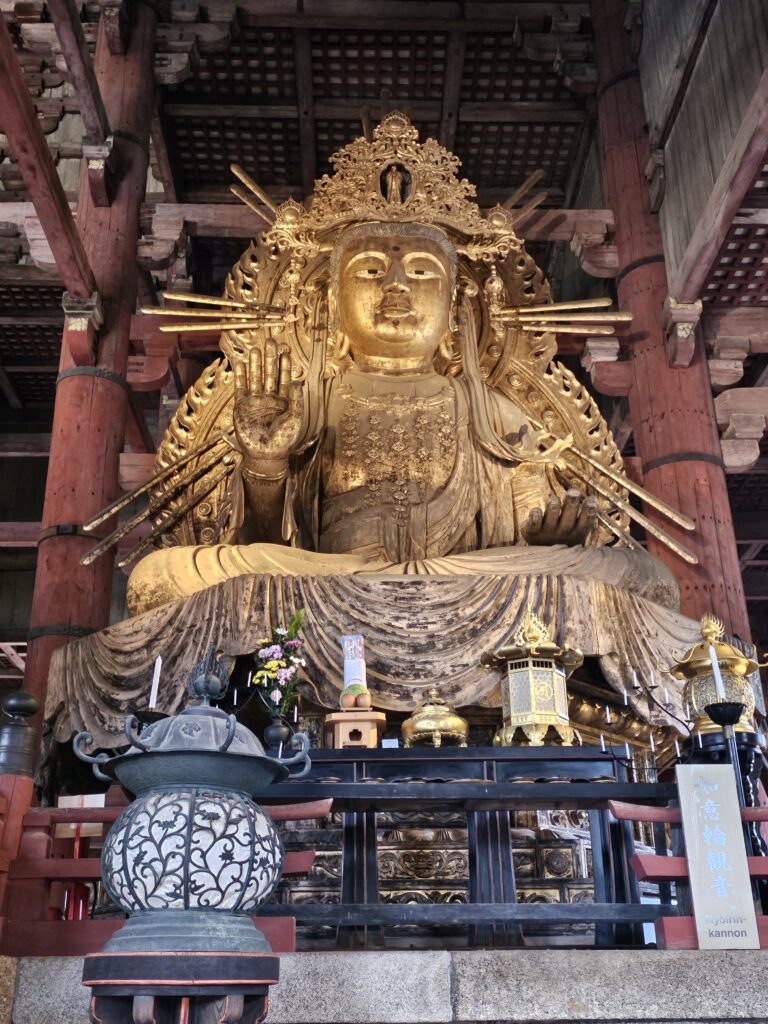
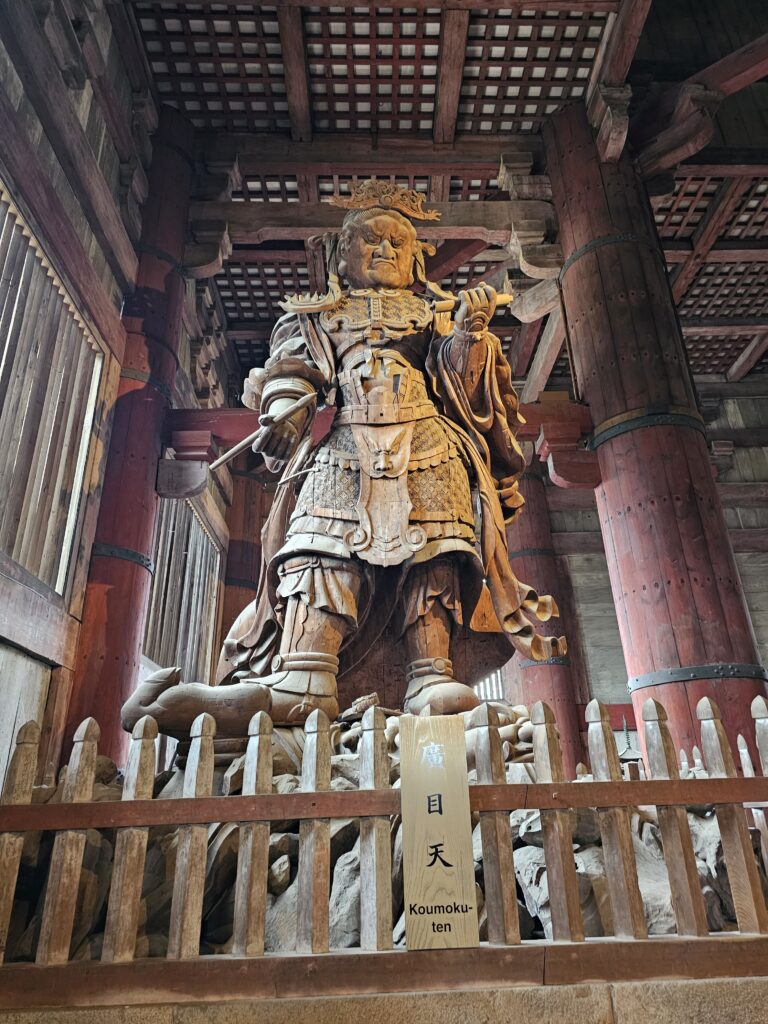
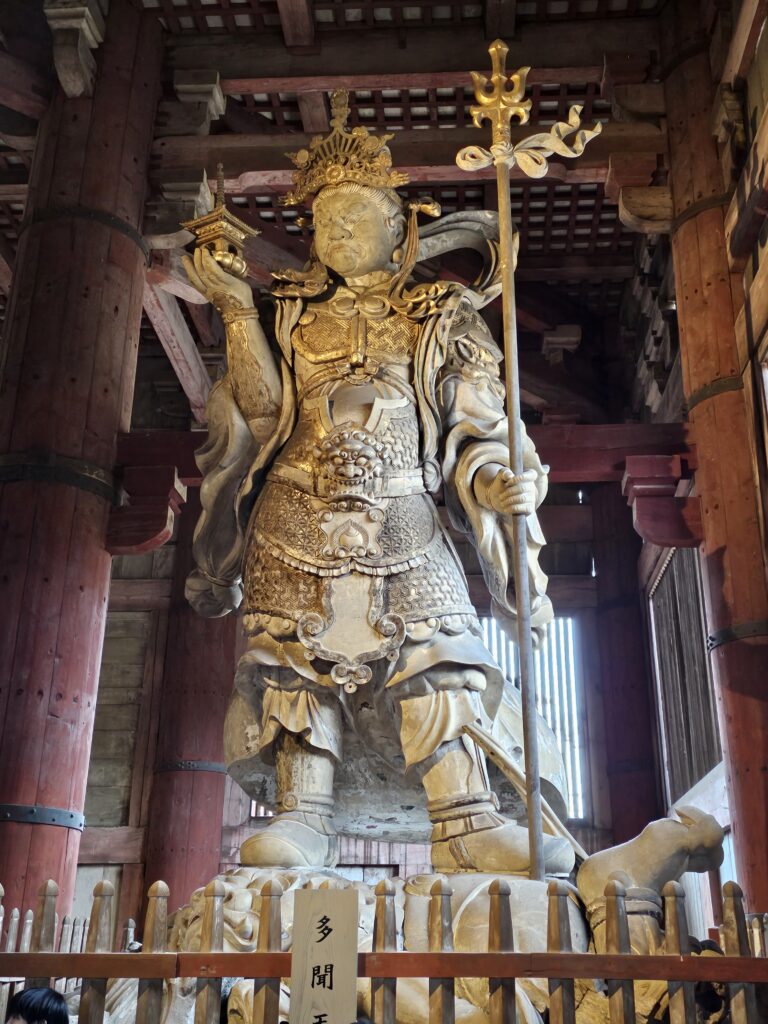
The Todai-Ji area encompasses much more than just the temple. In and around the grounds are several other temples which you can walk to. Some of which may require an entrance fee.
My favorite of these nearby temples was Todaiji Nigatsudo (February Hall). This temple was free and provided a great view of the surrounding area.
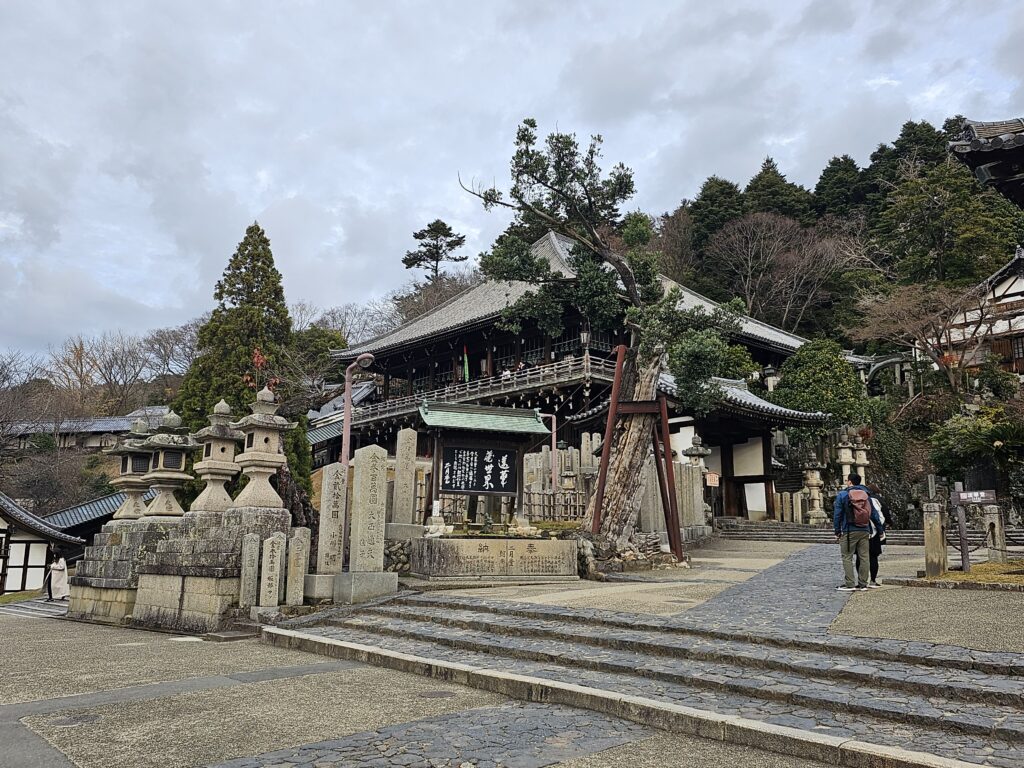
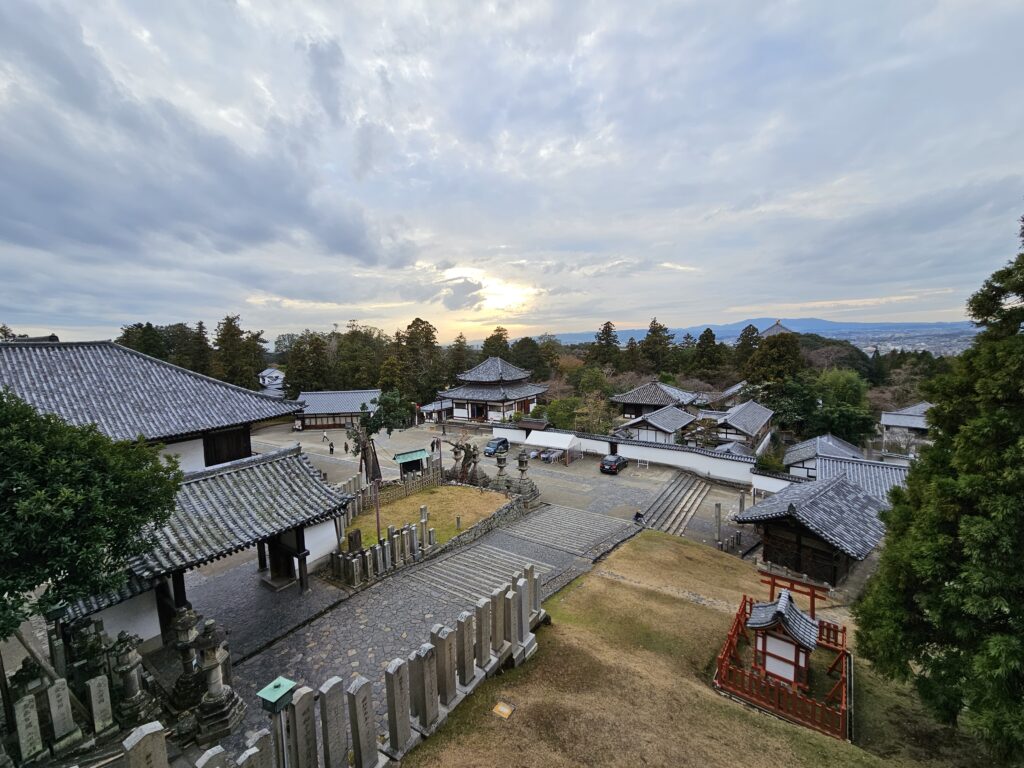
Kasuga Taisha
Another UNESCO World Heritage Site, Kasuga Taisha is Nara’s most famous and sacred shrines. This is another major attraction which should be near the top of a day trip to Nara.
Built in 768, the shrine has been re-built several times over the centuries. It enshrines many gods and deities and the grounds here are quite spectacular and tranquil.
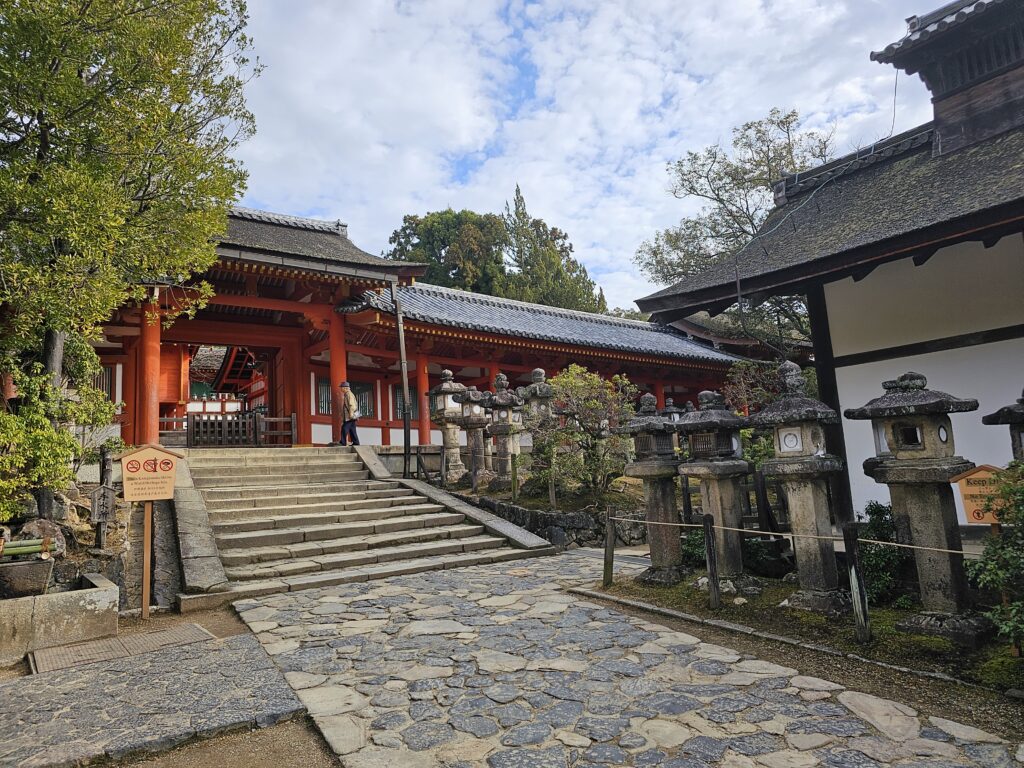
The majority of the area is free to roam around. If you want a look at the shrine’s inner buildings within the offering hall, that will require a fee.
Famous for its lanterns, Kasuga Taisha is home to hundreds of bronze lanterns that can be found hanging from the buildings. There are around 2000 stone lanterns that line the many paths on the grounds as well.
The lanterns are only lit twice a year during two Lantern Festivals, one in early February and one in mid August. One can only imagine what a sight that would be to behold.
Kasuga Taisha is deeper into Nara Park than Todai-Ji Temple and you can easily spend a couple of hours walking around these ground. Deer roam freely in this area as well and are believed to be sacred messengers of the Shinto gods which inhabit the shrine.

Mizuya Chaya
Located near Kasuga Taisha is a cozy little udon restaurant called Mizuya Chaya. This is located right in the park and is a quaint little place with a thatched roof. When I went here there were a lot of people sitting across the road and sketching the building, it’s quite popular.
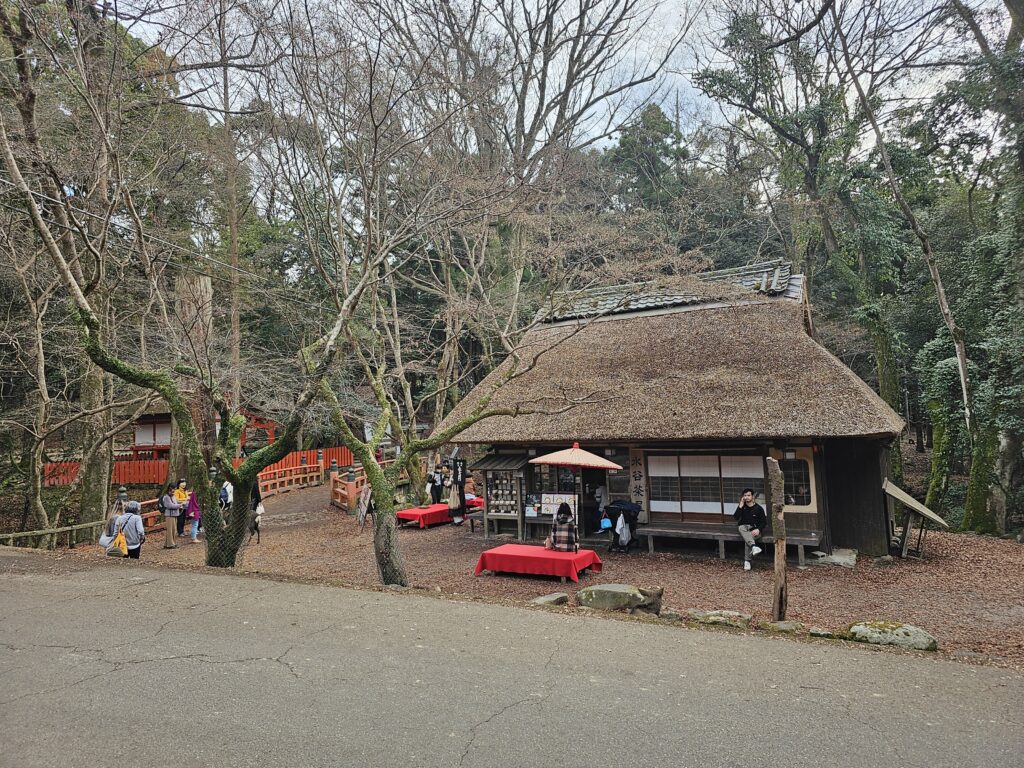
They specialize in udon here and have a few options. Menus are in English so it’s easy to figure out what you want.
I went with the edible wild plants udon (850 yen, $5.39 USD) and also got an iced coffee ( 450 yen, $2.85 yen). The broth had a nice, salty umami taste to it. The noodles were extremely fresh. Great al dente texture, soft and chewy. They were really good! The veggies included green beans, mushrooms, and bamboo. The veggies provided additional textrue and went great with the broth and fresh noodles. This is a perfect stop if you’re heading to or from Kasuga Taisha around lunch time and it’s very affordable!


Enjoy Your Time In Nara
There’s so much to see in Nara Park. Even though I was there for an entire day, I barely scratched the surface. It truly is massive. Fortunately, the major attractions are fairly close to one another and you can walk to them from Nara Station. It will be a heavy day of walking though. There are buses that you can take to the major attractions though if you prefer.
Some of the most enjoyable moments for me were finding pockets in the vast park where there weren’t many people milling around. These are great moments where you can really take in the beauty of the park and appreciate the moment.
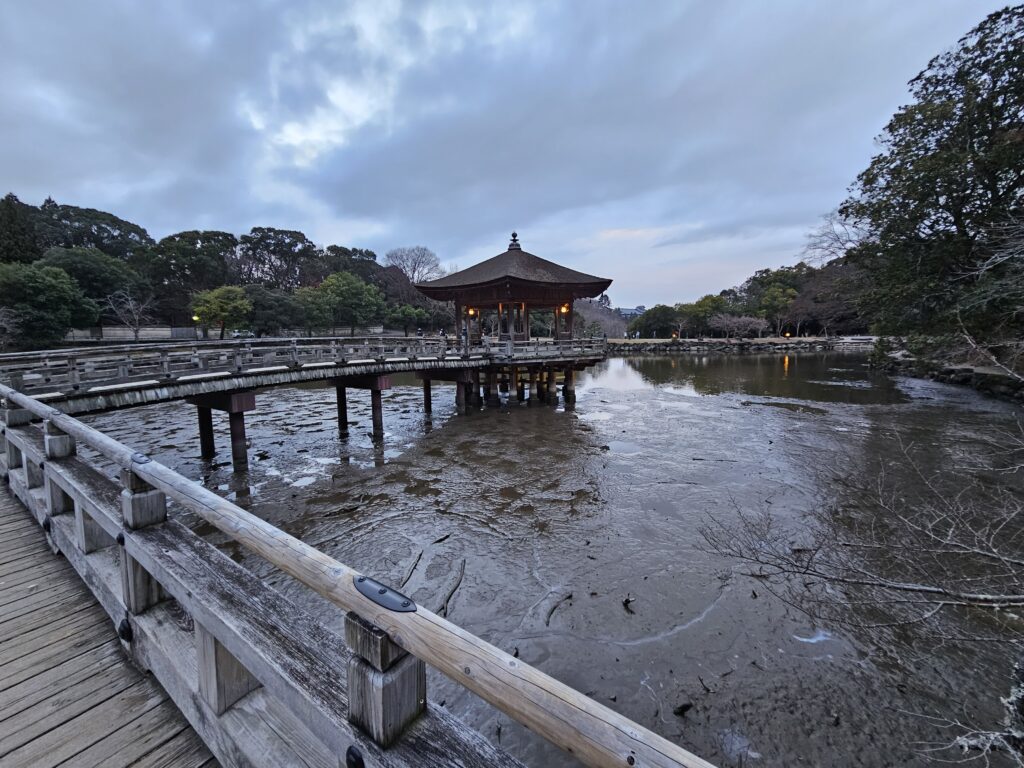

Finally, you have to admire these deer. I mean look how polite they are, they even stand outside of shops, lol.
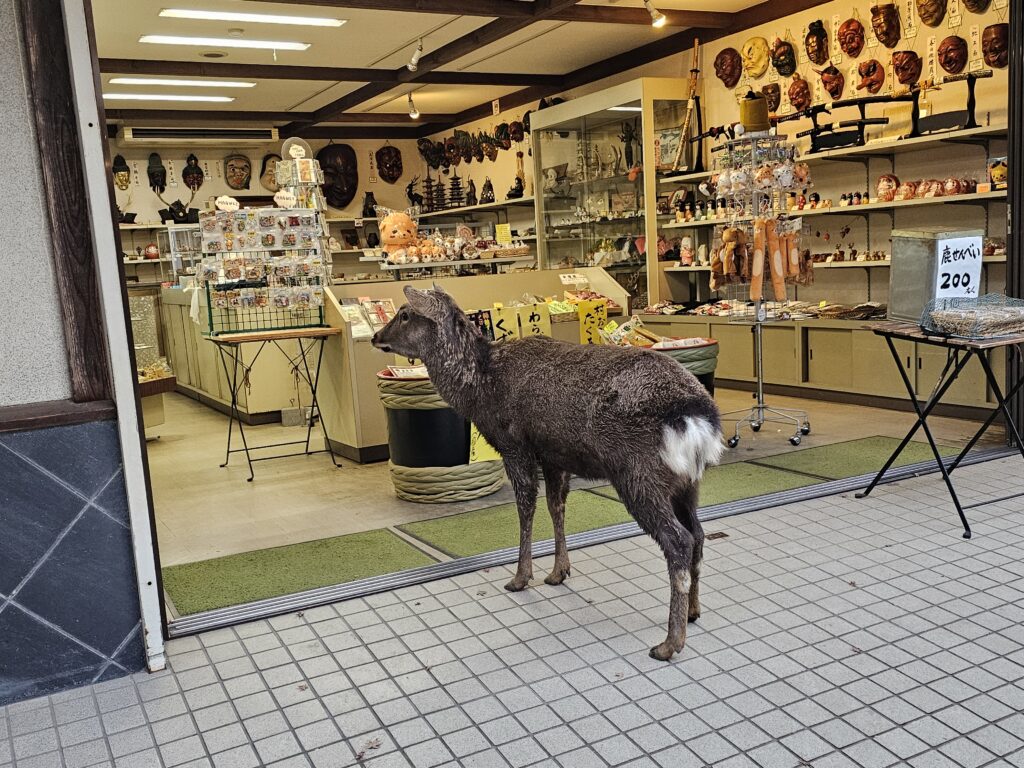
-
Hole In The Wall Senryo Sushi in Osaka Provides Authentic Experience
The tiny Senryo Sushi in Osaka is a sushi restaurant located off a main street near the Osaka Aquarium Kaiyukan. After walking around and enjoying the aquarium why not enjoy some sushi in a quaint local sushi joint?
Table of Contents
Senryo Sushi in Osaka
After visiting Osaka Aquarium Kaiyukan in the evening and walking around enjoying the sights there, I was definitely quite hungry and looking forward to finding something to eat in the area. I managed to find Senryo Sushi which had an excellent 4.5 star rating (out of 5) on Google and decided to give it a try.
This is tucked away off the main street and you could easily miss it. It’s a very small restaurant consisting of a sushi bar with about 12 -15 seats. There’s one sushi chef. It seems like a husband / wife duo that run the place. It’s definitely a neighborhood type of restaurant that’s been there for a while, which I loved. It’s a very cozy, warm atmosphere. They do not speak any English here and only cash is accepted.
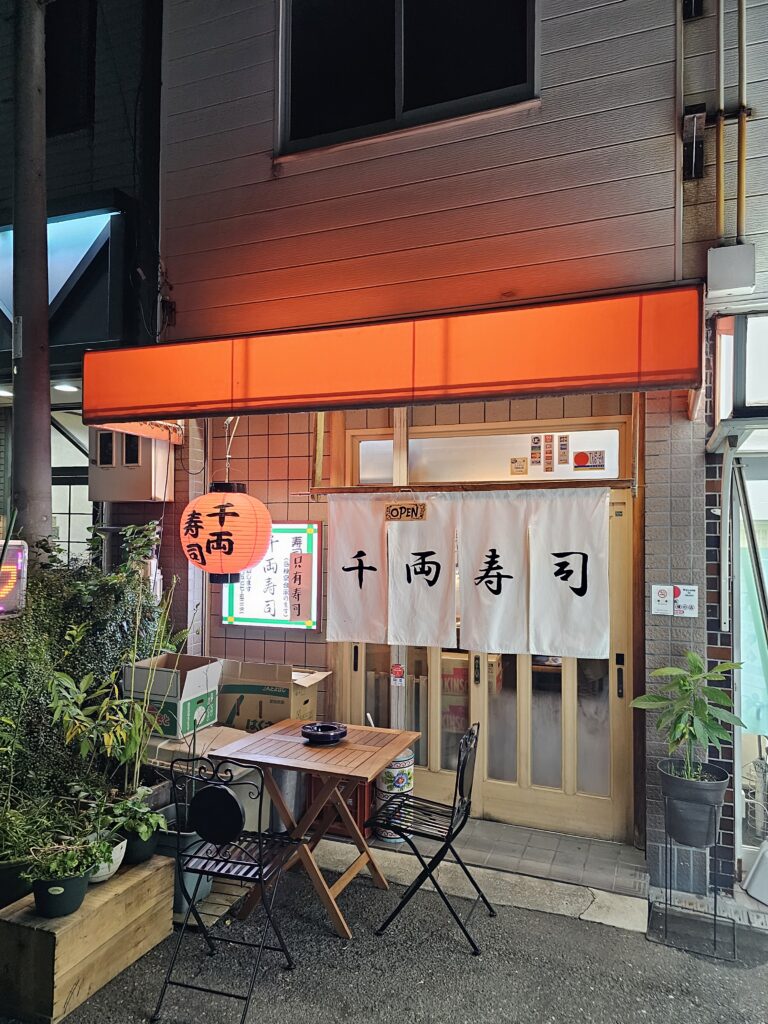
The Sushi
Senryo Sushi in Osaka does have an English menu with preset sushi sets, which is certainly helpful, but the menu is quite small which limits what you can try. I did order off it but in hindsight wish I had gone the Google Translate route to open up more options on the main menu.
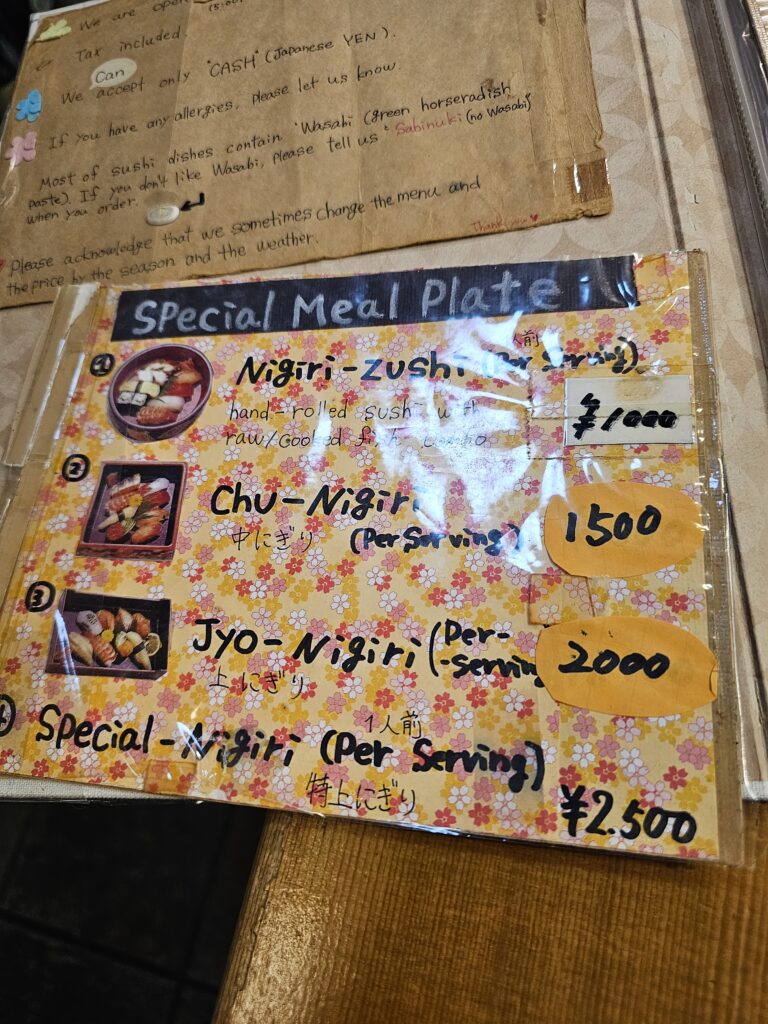
I went with the Chu-Nigiri sushi set (1500 yen, $9.56). Definitely a good deal for the price! Eight pieces of excellent looking sushi for under $10? Sign me up. The presentation of sushi at Senryo Sushi in Osaka is impressive as well. Everything looks so meticulously placed and put together. I had zero idea of what most of the sushi was to be honest outside of the shrimp, unagi, tuna, and salmon roe, but was more than happy to give it all a try.
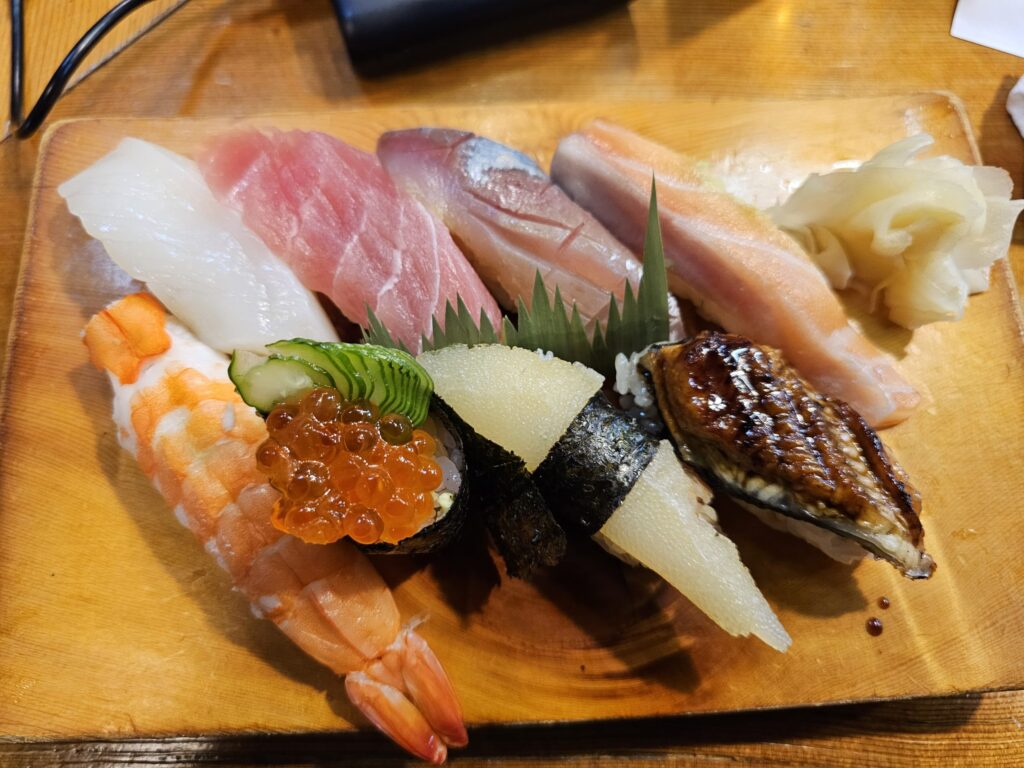
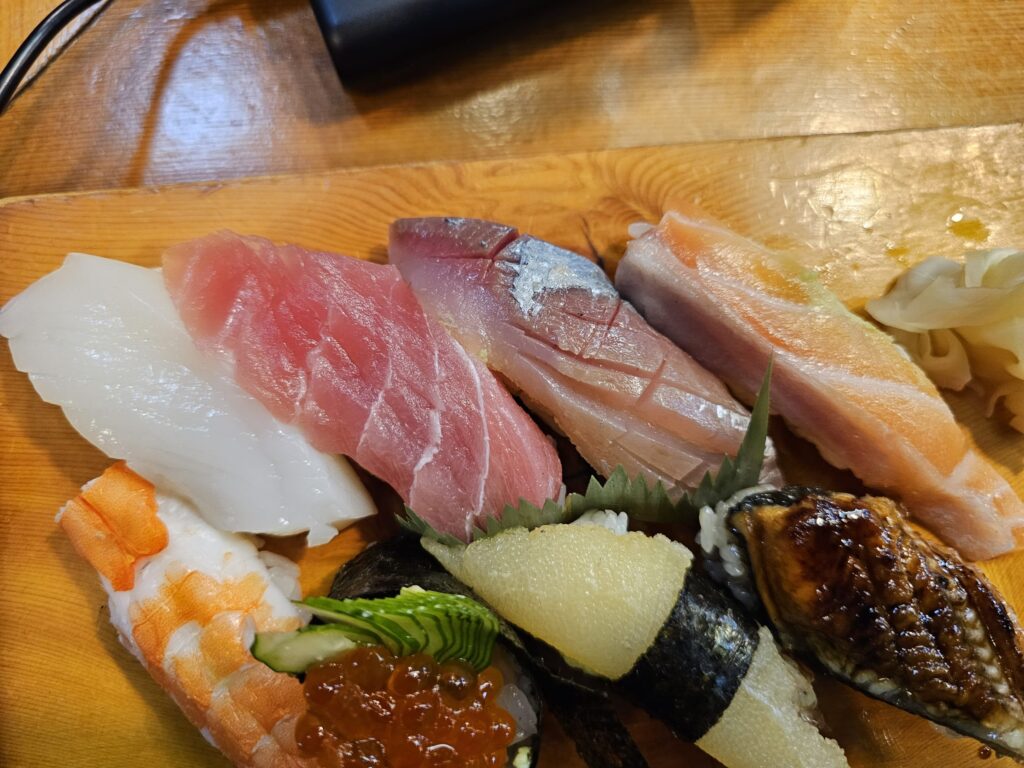
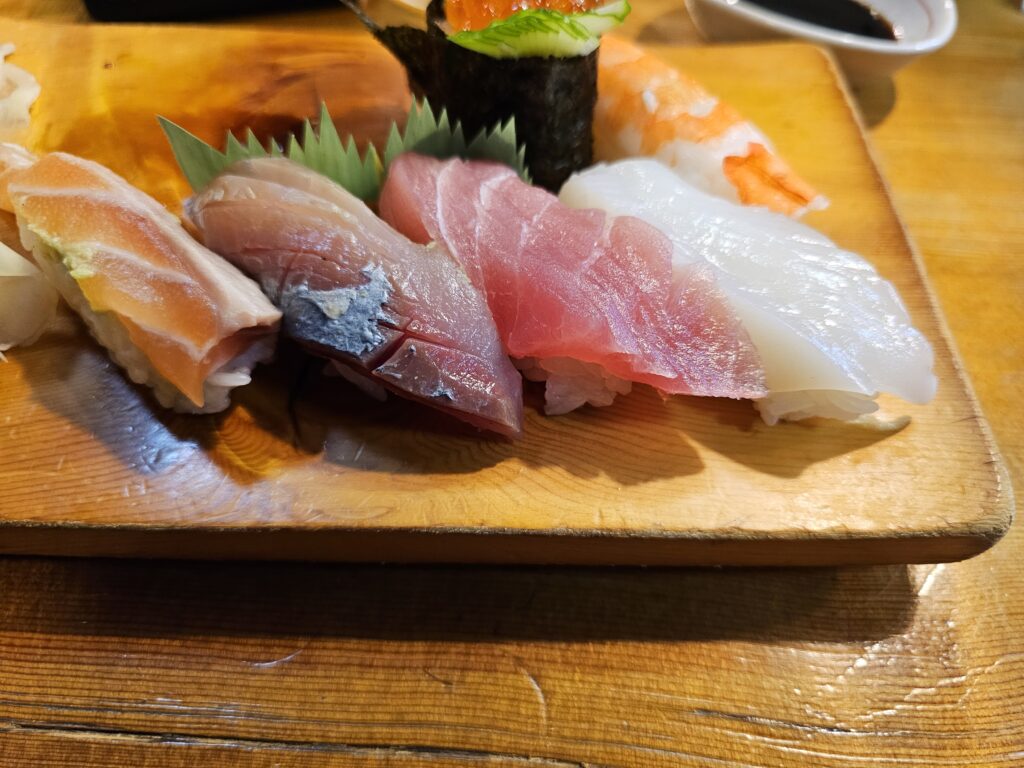
Something that immediately caught my attention was how the fish was extremely fresh and the sushi presentation was fantastic. It looked delicious when it was brought out!
Something else that was a little different was the wasabi was already spread on the rice, underneath the fish. I’d never seen it served like that, I’m generally accustomed to getting a glob of it on a side dish to mix it in with some soy sauce. I liked it!
The standouts to me was, of course, the melt in your mouth tuna and the shrimp which was very sweet. All of the pieces had their own type of texture, for better or for worse since I’m a big food texture eater.
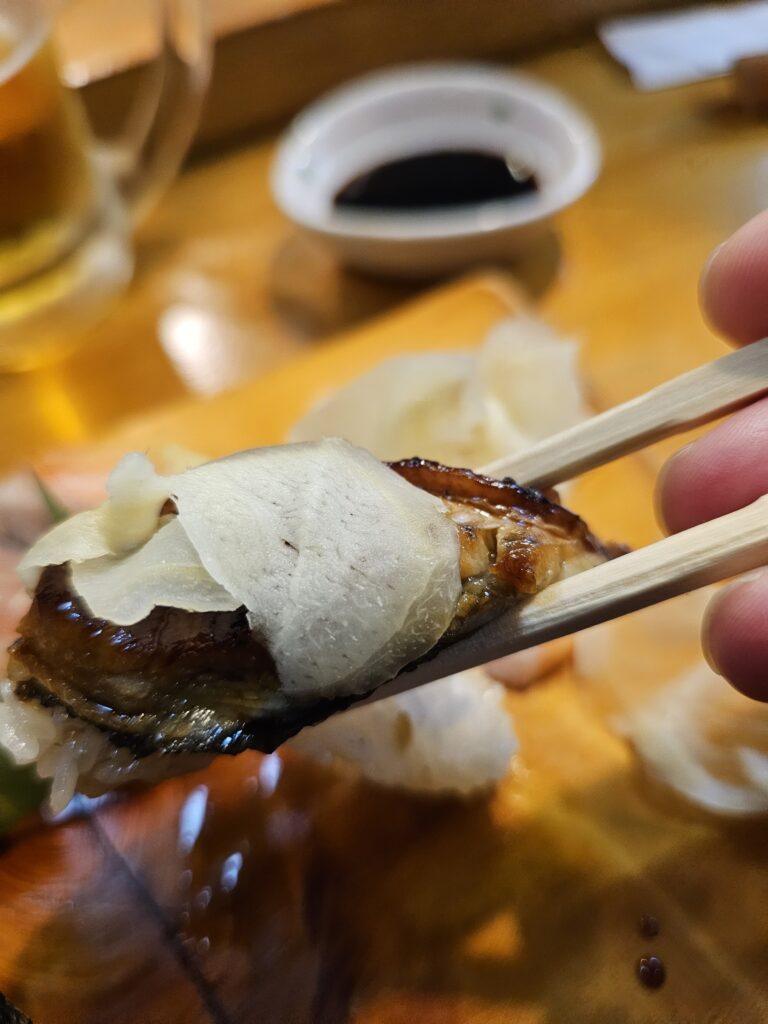
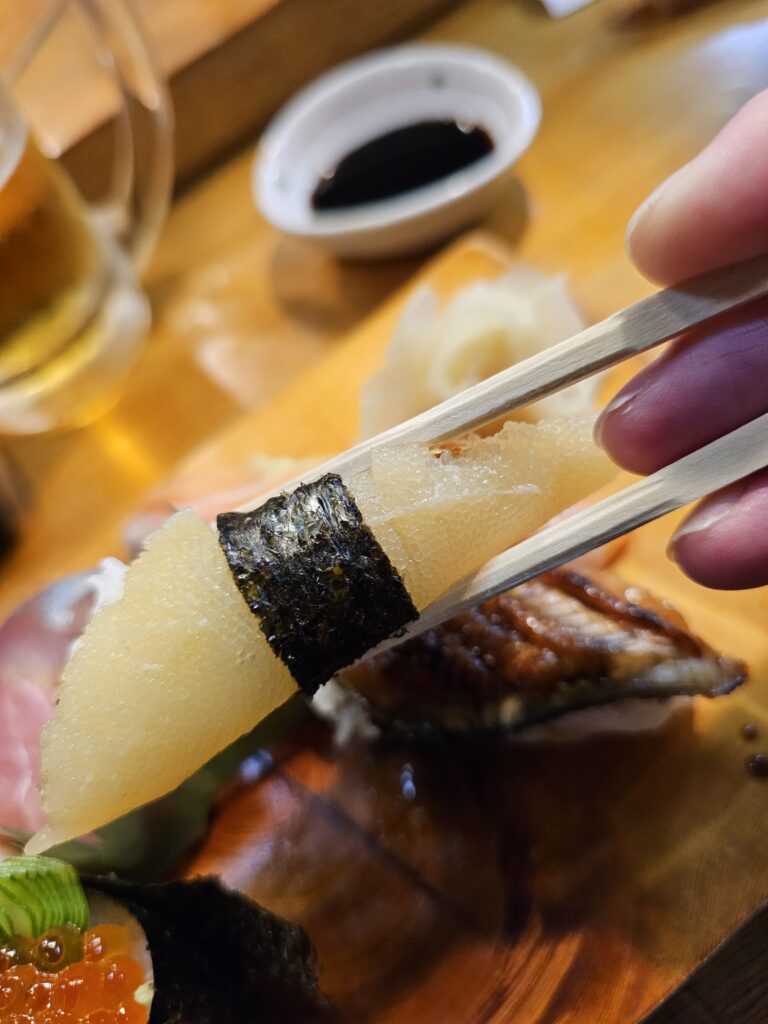
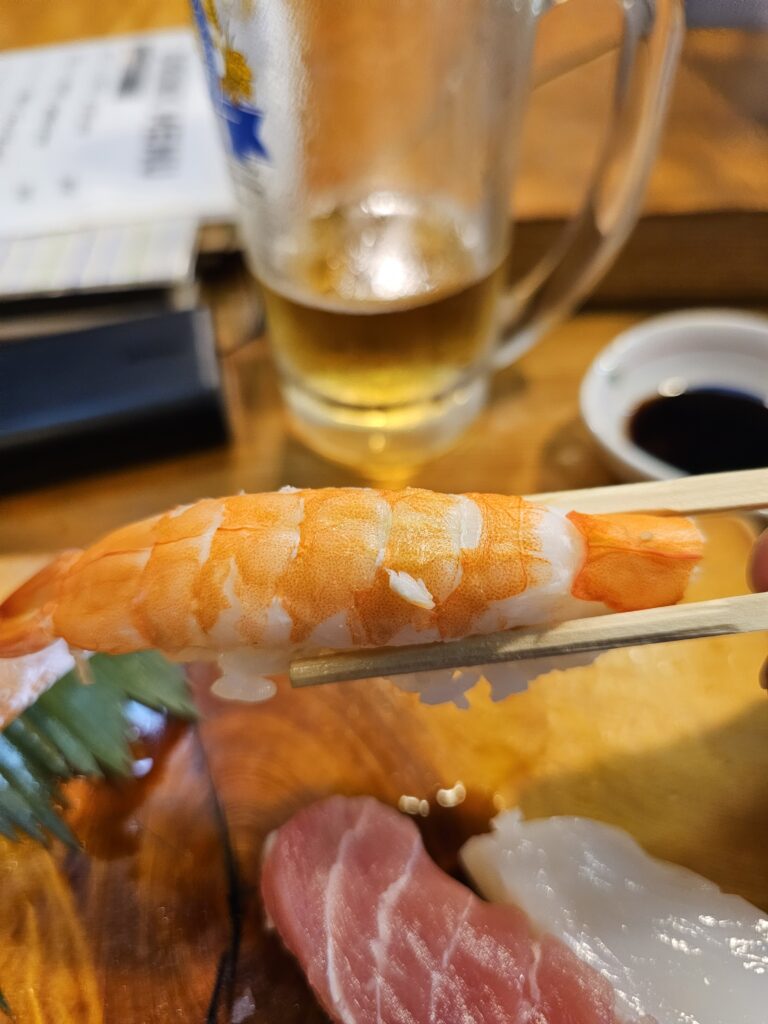
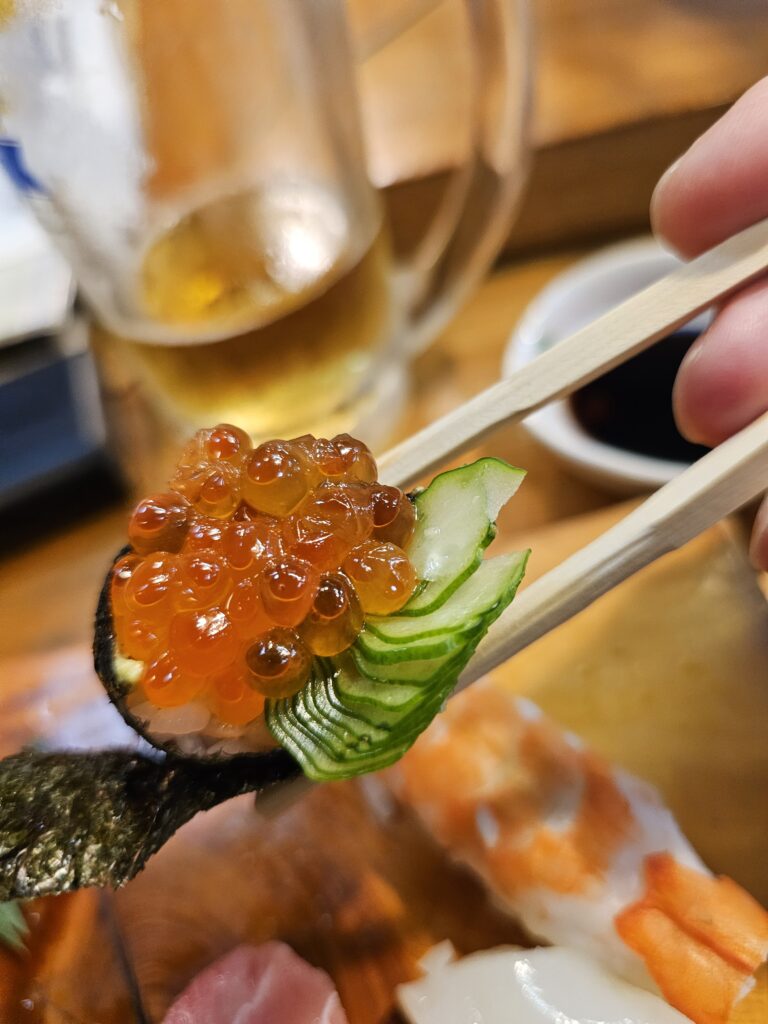
Some of the cuts of fish were a little too chewy or a little too firm for my liking, but it was a great sampler of what is offered in this little restaurant and again, the fish was good quality. I just didn’t know what it all was lol. I do wish I had tried ordering off the main menu to be able to open up all the different types of sushi they offered. I certainly would have ordered a lot more of the tuna but I suppose it will have to wait until my next visit!
Final Thoughts
Overall I really enjoyed eating at Senryo Sushi in Osaka. It was definitely a find. It’s a good spot if you’re looking for a place to eat after visiting the Osaka Aquarium Kaiyukan and are heading back to the subway station. Very affordable, and you can’t go wrong with a local restaurant serving good food. You really get a cool vibe from eating at places like this. I certainly recommend it!
-
Osaka Aquarium Kaiyukan: One Of The Best Aquariums In Japan
Located within the Minato ward near the Osaka bay area, Osaka Aquarium Kaiyukan is a major attraction within Japan’s third largest city.
Table of Contents
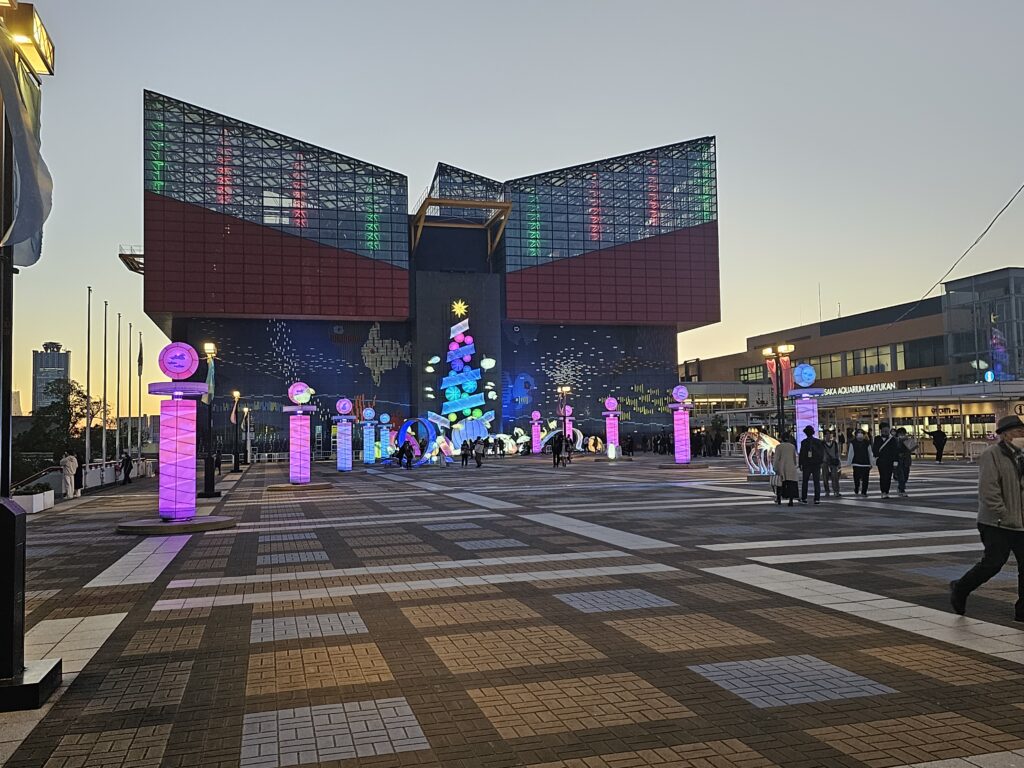
Osaka Aquarium Kaiyukan
Home to over 30,000 sea creatures and 620 species, this is a massive aquarium. With over 15 large tanks there’s a lot to see and take in at the facility. Each tank represents a different region of the Pacific Rim, traversing through the Pacific Ocean. You’ll see all manner of aquatic sea life here ranging from otters, sea lions, penguins, dolphins, whale sharks, rays, and jellyfish, just to name a few.
What’s great about the Osaka Aquarium Kaiyukan is the way these tanks are presented to you. You first enter and walk through the overhead aquarium tunnel. Then you make your way up to the 8th floor and spiral down floor by floor. Some of the tanks can be observed from multiple floors so you can see the animals at different depths. It’s a really cool experience.
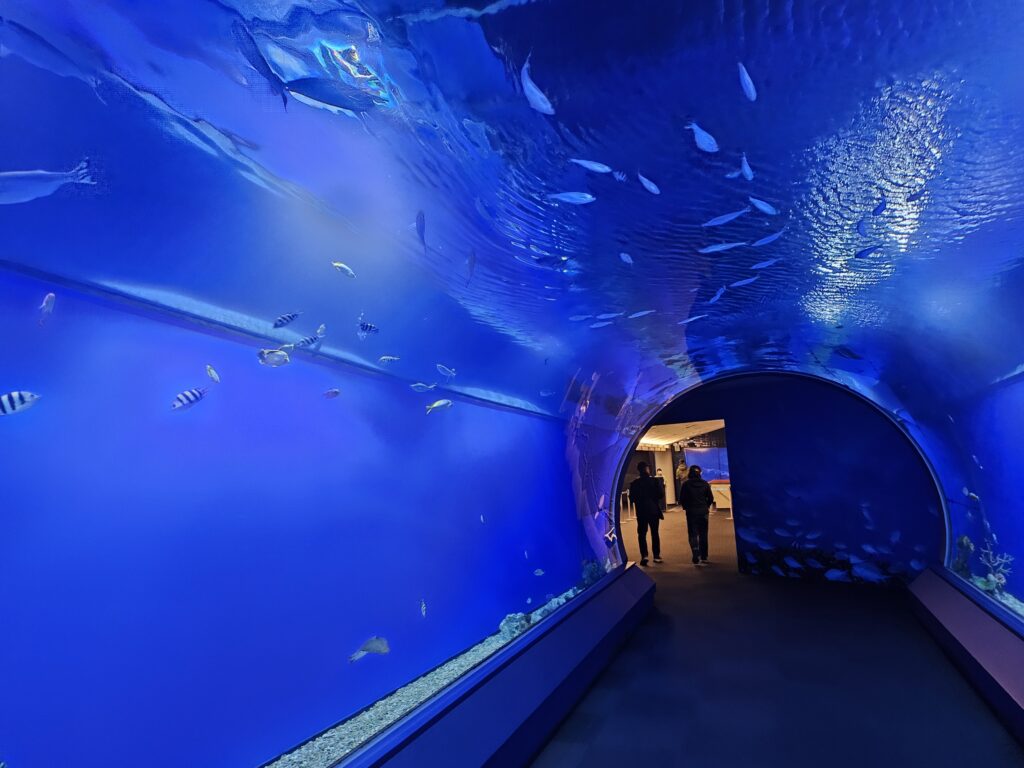
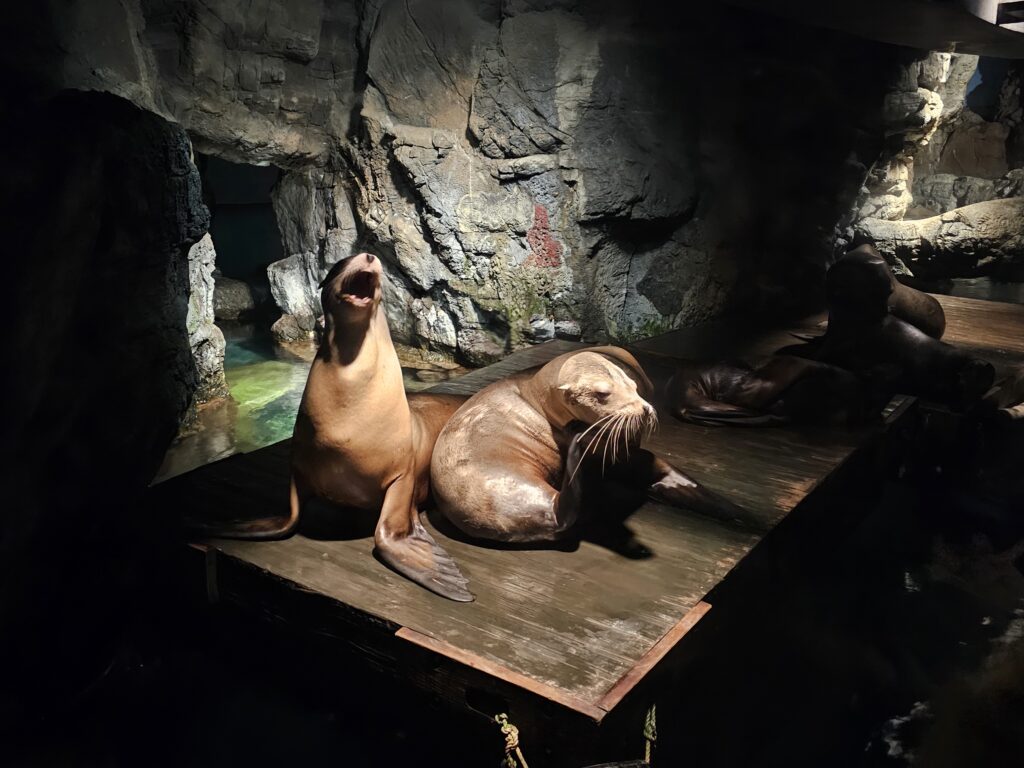
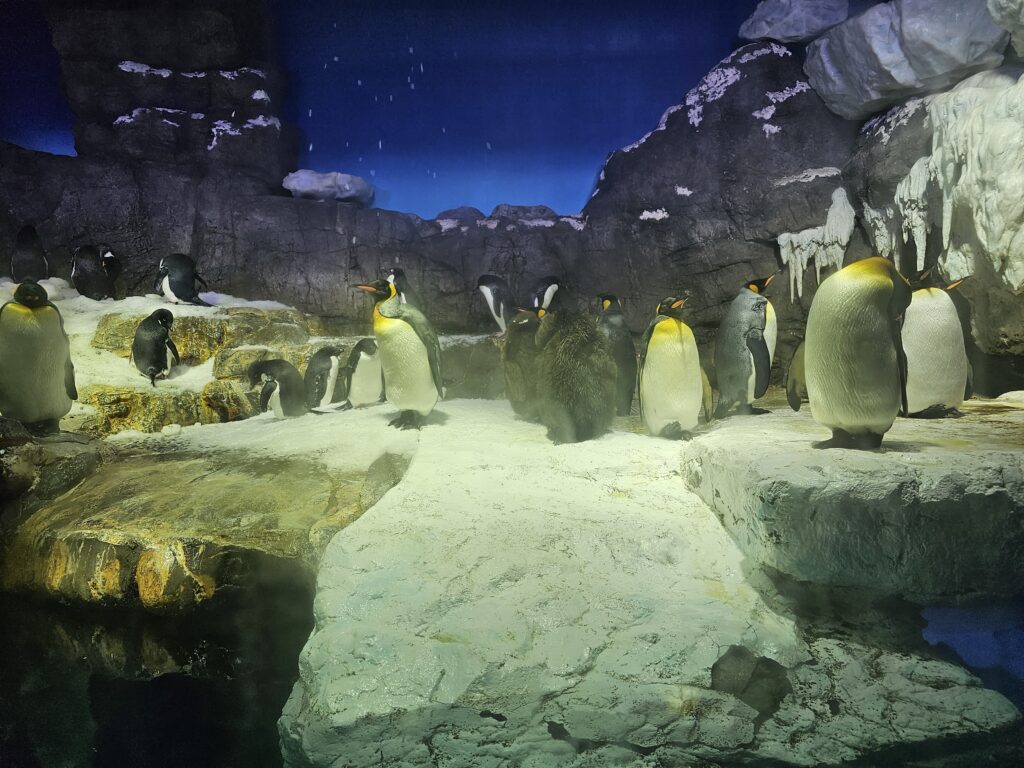
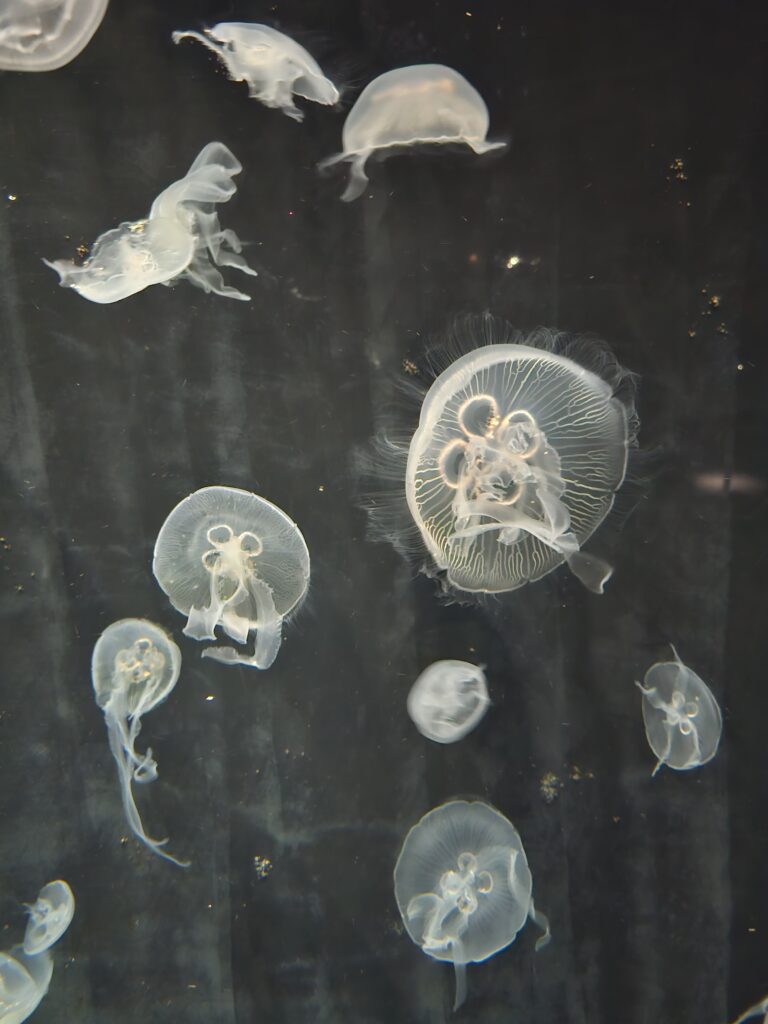
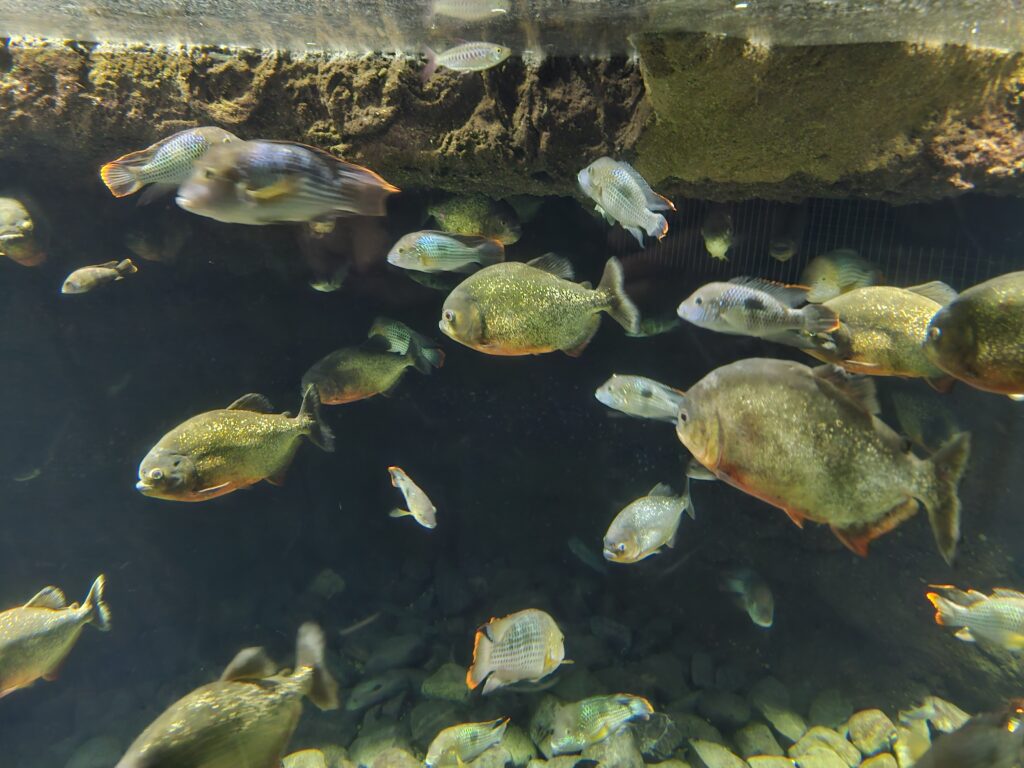
The Pacific Ocean tank
The highlight of all of these impressive tanks is the “Pacific Ocean”.
The tank is 9 meters deep, 34 meters long and contains 5,400 tons of water. This is a truly massive tank wihch can be viewed from multiple levels. There’s a TON of species swimming around within the tank. The main attractions being the massive whale sharks, the largest fish species in the world. There’s also some seating locations in some areas around the tank. It’s quite mesmerizing to watch if you’re able to find a seat and just chill and watch for a time.



The Overall Experience
If you enjoy aquariums than Osaka Aquarium Kaiyukan will be a must visit while in Osaka. It’s a world class level aquarium and is certainly worth the entrance fee (2700 yen, $17.33 USD). As you can imagine, this is a very popular attraction and you can expect big crowds here.
I went in the evening, about 3 hours before closing (it closes at 8 pm) which seemed to help with the crowds. There wasn’t any line to purchase a ticket at that time and the exhibits, while crowded, weren’t too bad. You can easily spend over 3 hours here so you will want to give yourself ample time to enjoy all the tanks and not feel like you have to speed run through it all.
-
Otaru, Hokkaido Is A Great Day Trip From Sapporo
Otaru is a port city located in Hokkaido, Japan, about a 30-40 minute train ride from Sapporo, it’s a popular day trip from the biggest city in Hokkaido with some notable sights to take in. Staying in Otaru is certainly an option but this post looks at making a day trip or half-day trip for those staying in Sapporo.
Table of Contents
The Otaru Canal
The most well-known feature in Otaru is the Otaru Canal. This canal was an integral part of transporting goods from the ships stationed in the main port in the 20th century. Smaller vessels would transport goods from these larger vessels down the canal and unload them at the warehouses lining the canal. The canal became obsolete as modern technology took hold and more efficient unloading methods developed.
The canal remained during this shift of goods transportation and a part of the canal was restored in the 1980s with the warehouses being renovated into various shops, restaurants, and museums.
It’s a beautiful area and makes for quite a nice stroll. You can spend the majority of your day in the area around the canal since there’s so much to see here.

The Otaru Canal 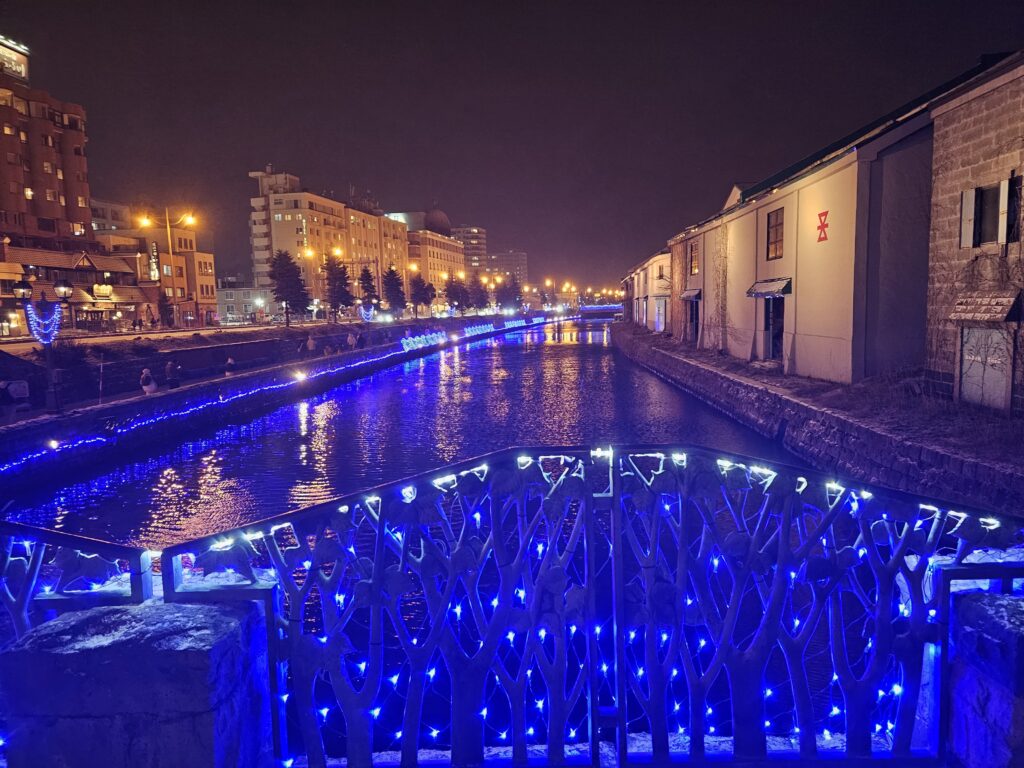
The Otaru
Canal at night, illuminated by lightsSakaimachi Street
Located near the Otaru Canal, Sakaimachi Street is a very popular tourist destination spot. It’s convenient location next to the town’s most popular attraction means you’ll most likely spend some time on this street. It’s home to several souvenir shops, museums, restaurants, and stores. The street is quite long so there’s a TON to see and eat here.
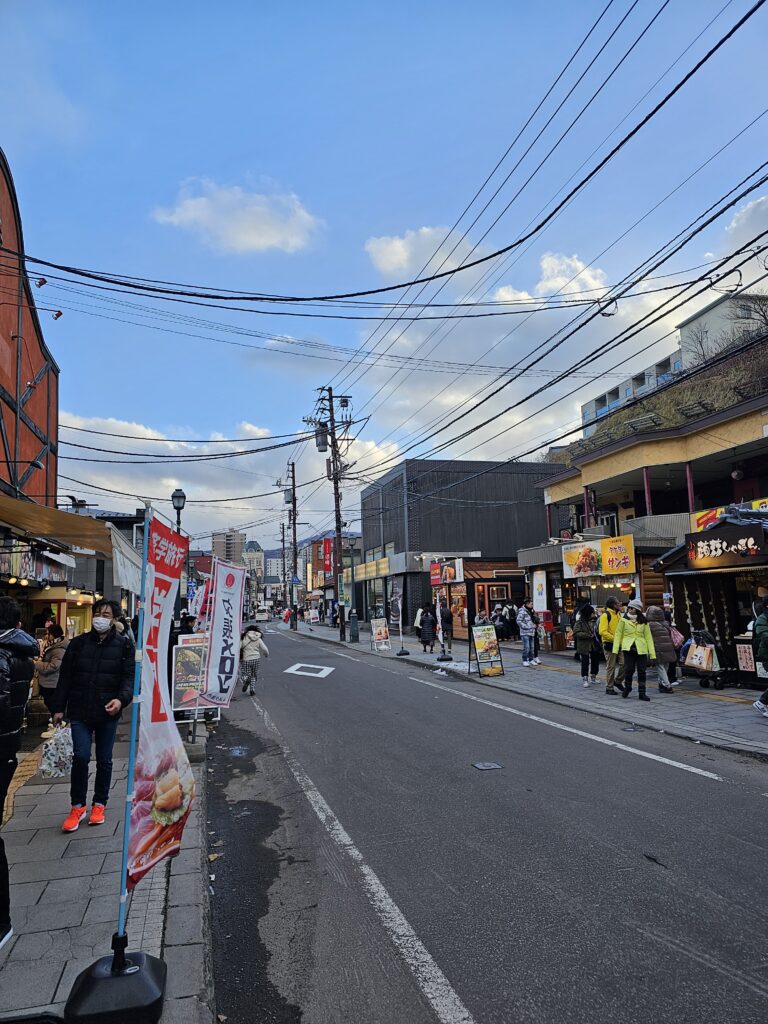
The Food
As mentioned above, Sakaimachi Street is jam-packed with all sorts of shops and stores. As one would imagine there’s a TON of different food options. Not only is there plenty of traditional Japanese food and seafood located on the street, there’s plenty of dessert options as well, not only on Sakaimachi Street but near the canal too.
A popular spot is Sawawa whose speciality are matcha and green tea products. Even though it was early December I had to try the the green tea ice cream with matcha mochi (670 yen, $4.28 USD). The ice cream was very rich with a heavy green flavor to it while the mochi was quite soft and chewy. It was quite jelly like.


Popura Farm was another stop. It’s not on Sakaimachi Street but is quite close to it. Popura Farm offers half cut or quarter cut melons piled with ice cream. I got the quarter melon (1900 yen, $12.13 USD). Even in December, the honeydew melon I got was sweet and juicy, while the vanilla ice cream makes it that much tastier!
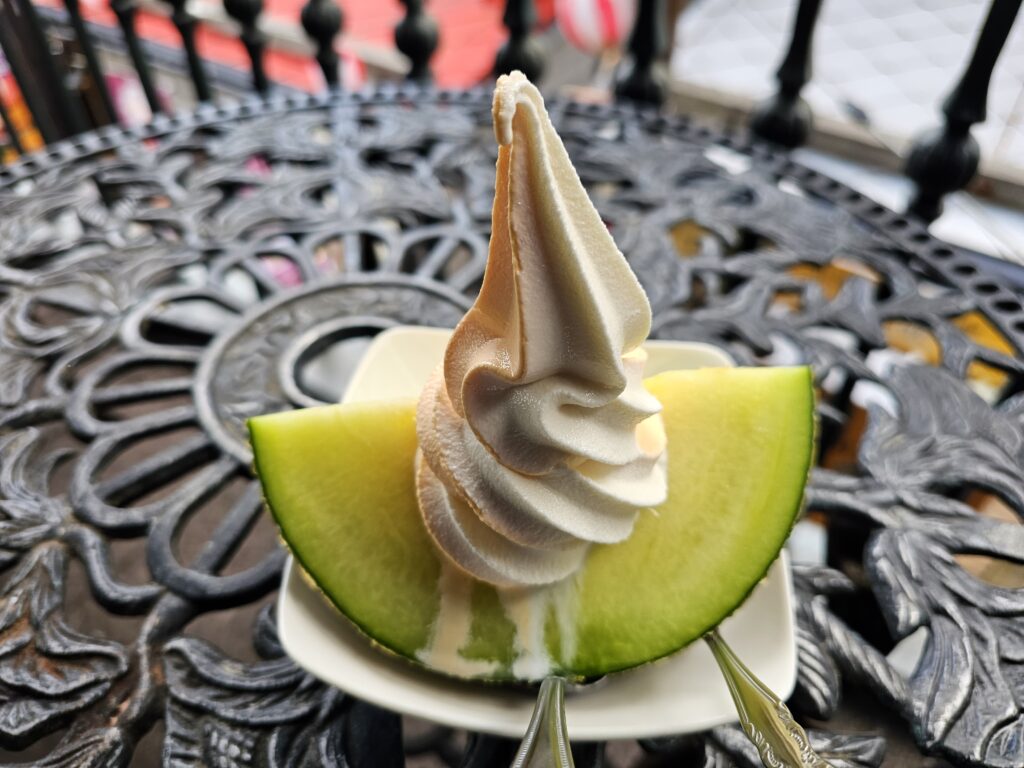
Naruto Honten Fried Chicken is a famous fried chicken restaurant that’s located in Otaru. About a 10 minute walk from the Otaru Canal, it’s a large two-story restaurant with a waiting room, so you know the place is quite popular.
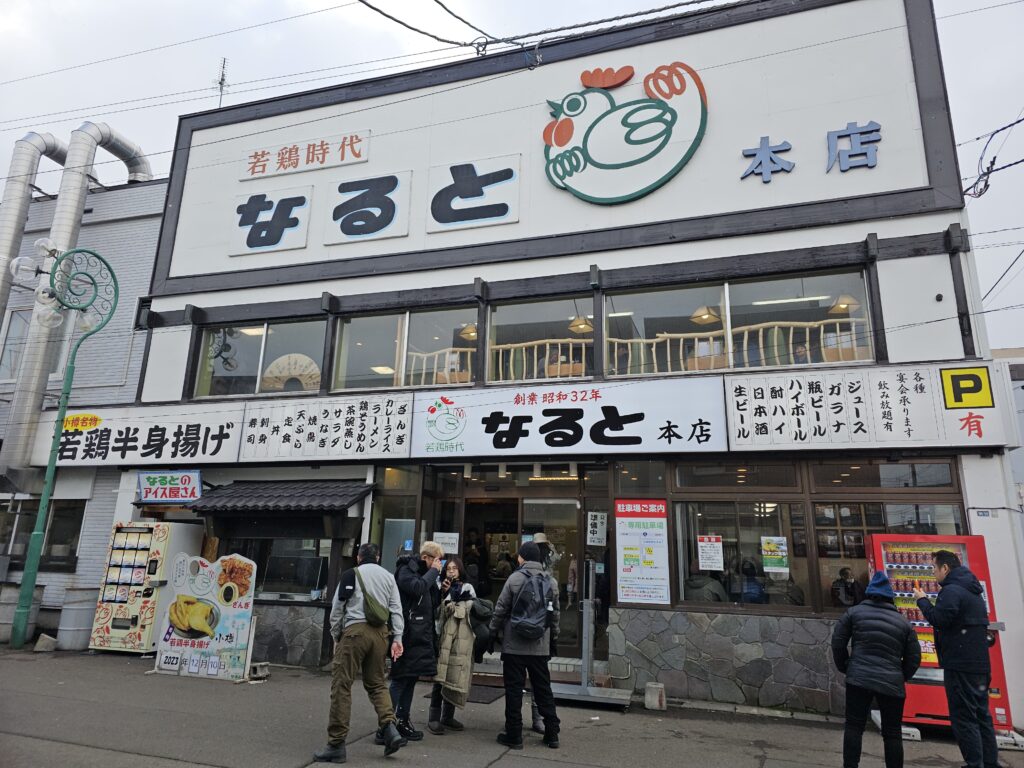
The menu is quite large, with many options besides just fried chicken, but the restaurant is known for its chicken so it was a must try for me. I got a half chicken combo meal and a beer for 1850 yen, $12.02 USD. Quite a good deal for the amount of food you get. The fried chicken is quite good. The skin is exceptionally crispy while the meat maintains its juiciness. It really is some tasty fried chicken.

LaTao is a famous dessert company not only in Japan but in other countries throughout the world. The orignal location is found in Otaru on Sakaimachi Street. It’s easily recognizable due to the tower that’s connected to the store. The tower was the original location of LaTao and you can walk to the very top and get a nice view of the surrounding area.
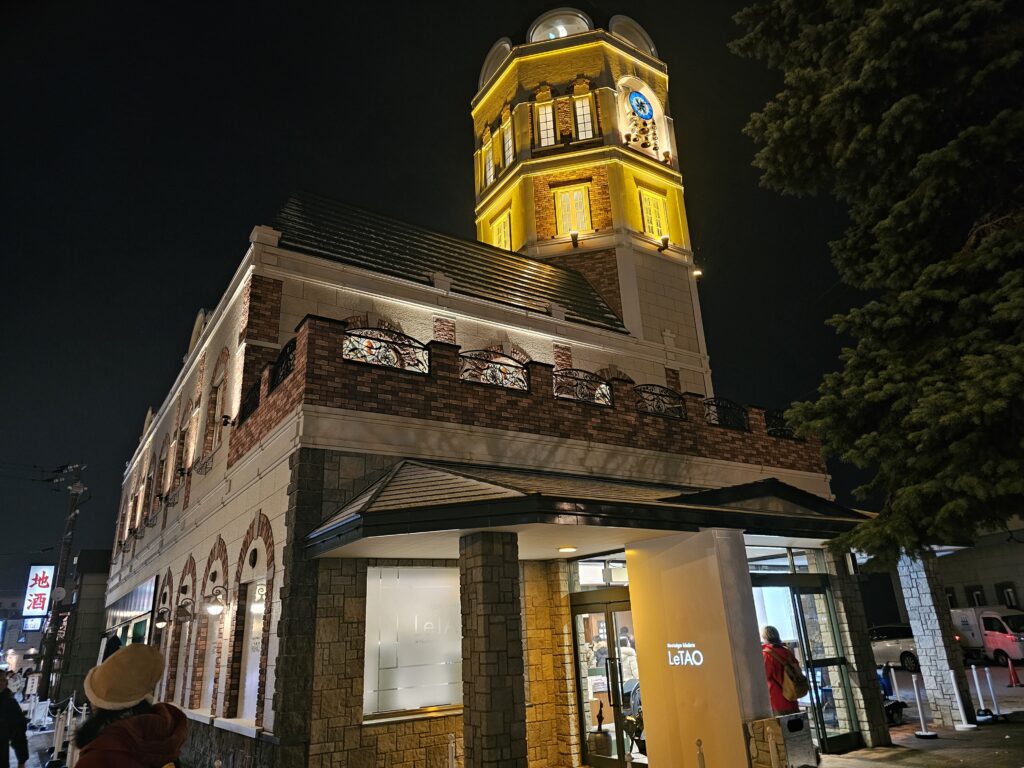
LaTao made its name based off its famous Double Fromage cheesecakes, so it’s certainly an item that deserves attention. Within the store, upstairs, there’s a restaurant where you can order and enjoy the many desserts that LaTao has to offer. I got a combo that included a slice of the original cheesecake (I believe) and a slice of lemon cheesecake, and a cup of tea (1500 yen, $9.60 USD).
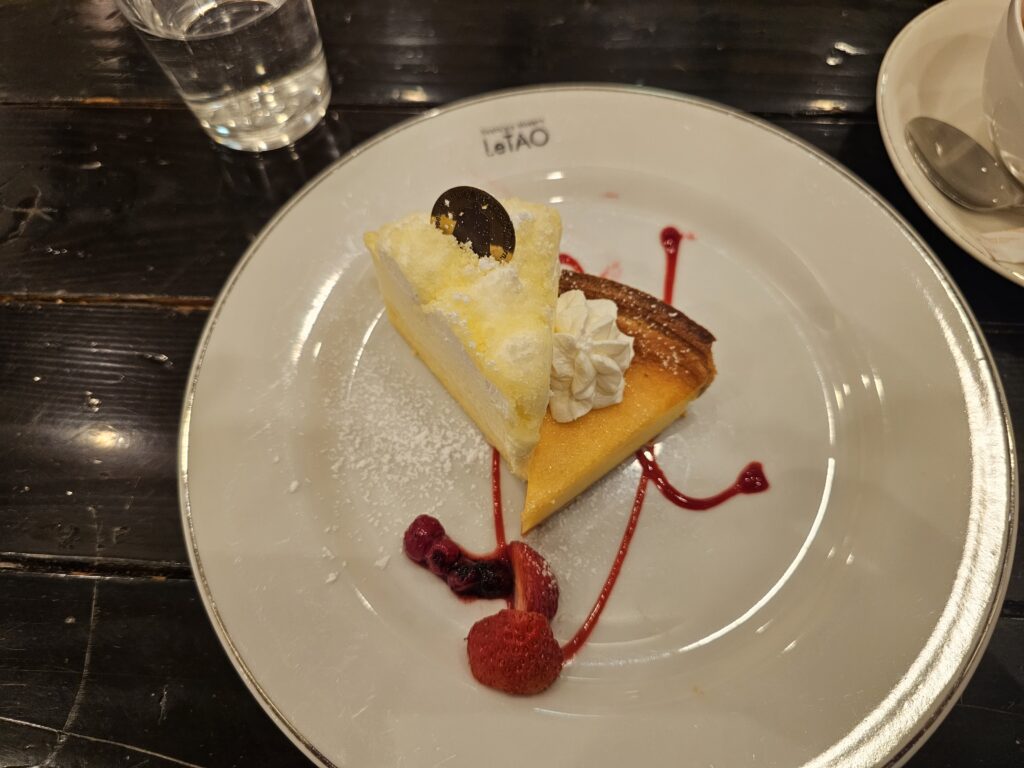
Both slices of cheesecake are incredibly light. With a subtle sweetness, they are not overpowering or overly sweet at all. Both maintain great flavor and are extremely tasty!
Otaru Music Box Museum
At the end Sakaimachi Street is the Otaru Music Museum. A solid stone building, this is the main building that was constructed in 1915 and used as an office for a wealthy merchant. It was converted to a music box museum in 1989 and now houses over 80,000 music boxes.
As one might imagine with a place with so many music boxes, the air is filled with music as you walk around which is quite pleasant. There are so many different types and variations of music boxes housed here. It really is amazing. The wooden interior really adds to the unique feel and it’s just a really cool place to walk around and purchase a unique music box if you’re so inclined.
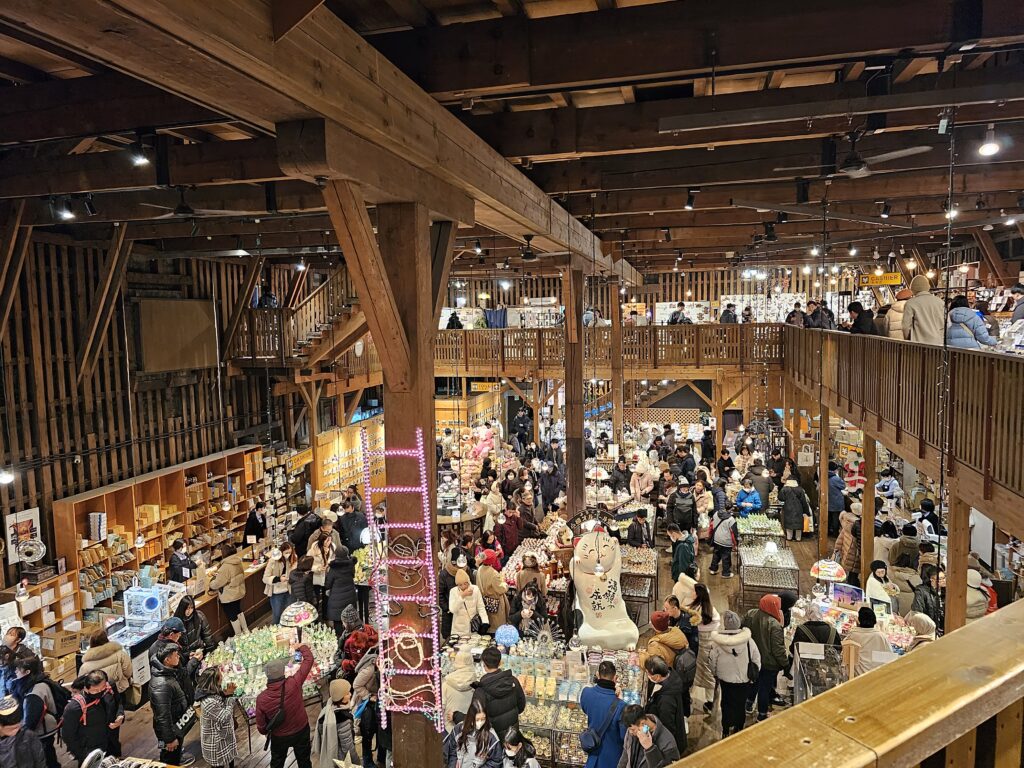
In the front of the museum is the world’s largest steam clock. Every 15 minutes, the steam whistles at the top of the clock produces a melody, which is really cool to both see and hear!
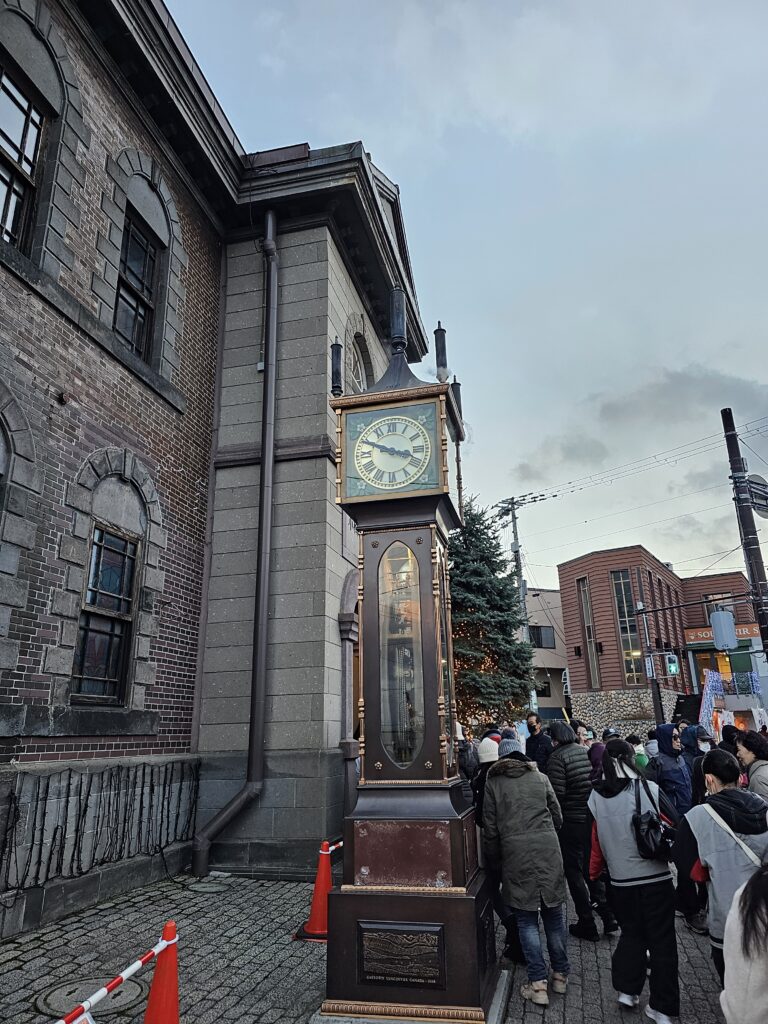
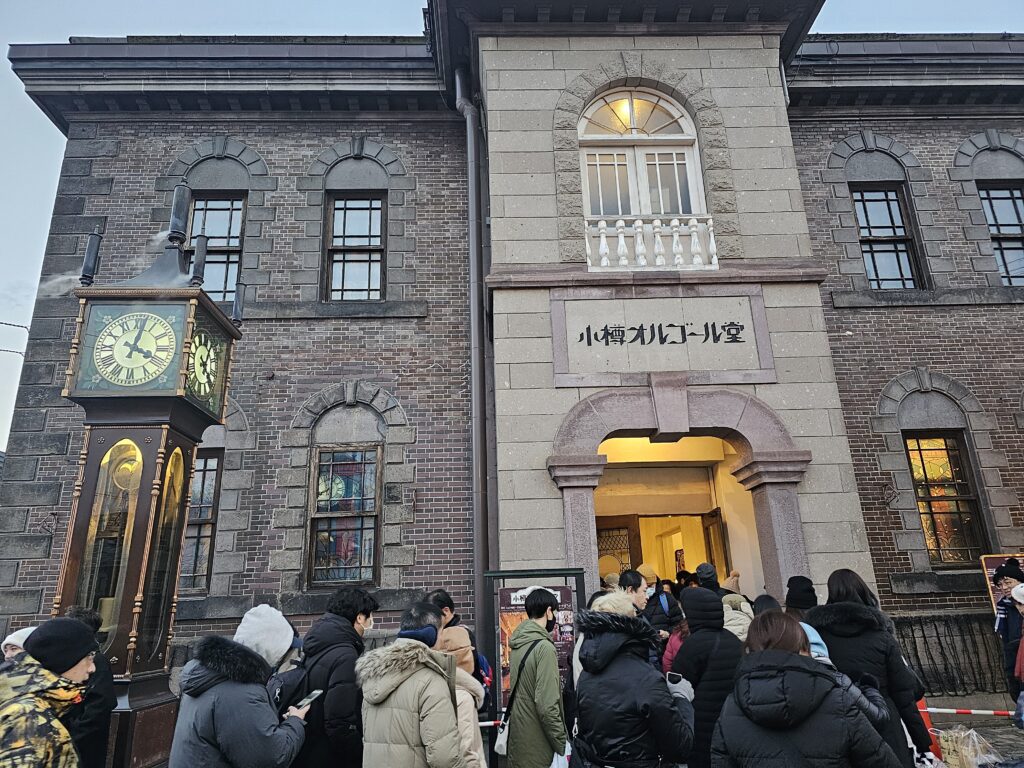
The Railway Museum
The Railway Museum is a little bit outside of Otaru Canal tourist area, about a 20 minute walk. It’s located at the site of Hokkaido’s first railway line. In the old trainyard outside there are several full size trains from various eras which are on display.

The inside of the museum has several exhibits detailing the history of trains in the Otaru area. If you have an interest in trains and museums this will be a place of interest for you!
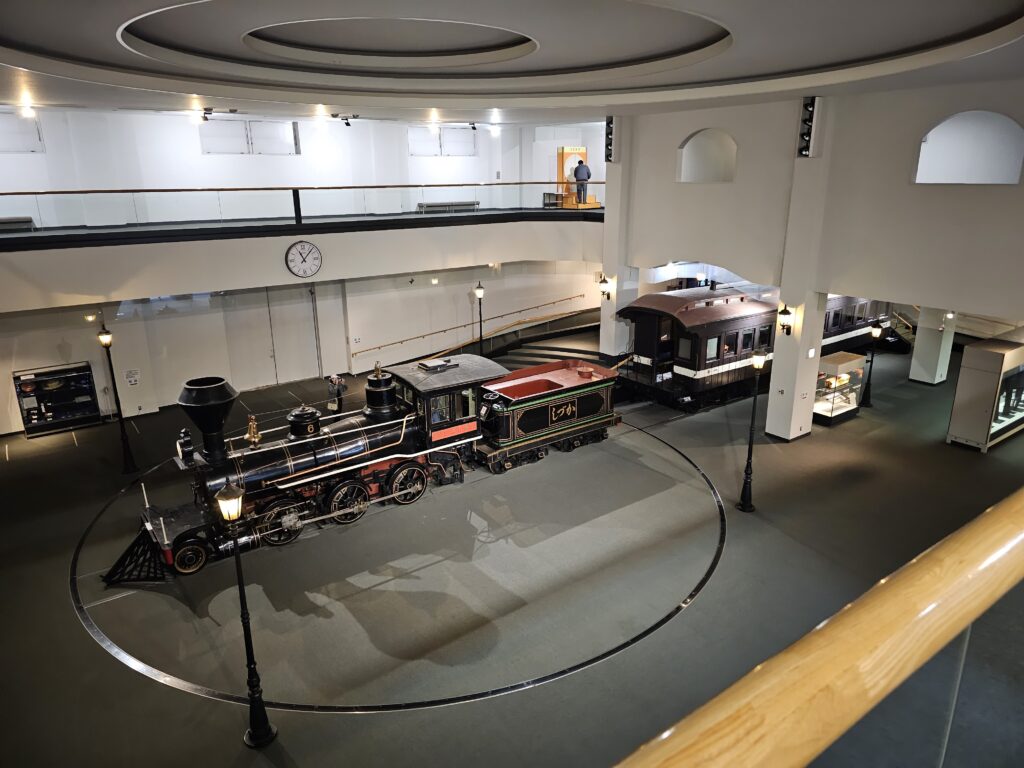
Conclusion
There’s a lot more to see and do in Otaru but if you only have a day or half-day this is a good starting point. The Otaru Canal and its surrounding area, namely Sakaimachi Street, will undoubtedly be the biggest draw and there’s a lot to explore, especially if you enjoy shopping. You can’t really go wrong just walking around the area and exploring. It’s a charming place with lots to see and especially EAT!
Related Links
Is The Famed Naruto Honten Fried Chicken In Otaru Fulfill It’s Hype?
Does The Famous Japanese Bakery LeTAO Live Up To The Hype?
10 Popular Things To Do In Sapporo, Hokkaido
Stunning Osaka Castle Is One Of The Most Popular Places To Visit In Osaka
-
Stunning Osaka Castle Is One Of The Most Popular Places To Visit In Osaka
Table of Contents
Osaka Castle History
Osaka Castle has over a 450 year history dating back to 1583 when the feudal lord Hideyoshi Toyotomi built the first iteration of the castle. The castle has been destroyed numerous times mainly due to war and fire but has been re-built afterwards each and every time during its exisitence. The last re-build occurred in 1931 when the castle tower was re-built. Although damaged during World War II, the main structure remained intact and was recognized as a historic site by the Japanese government in the 1950s.
Today’s Osaka Castle
Today, Osaka Castle is one of the most popular tourist attractions in not only Osaka, but all of Japan. When you get to the castle park and walk around, you have a great view of the castle towering over the premises, you can understand why it’s a tourist favorite. I was lucky to go on a clear, beautiful day, and the tower sitting on high was really a magnificent sight.
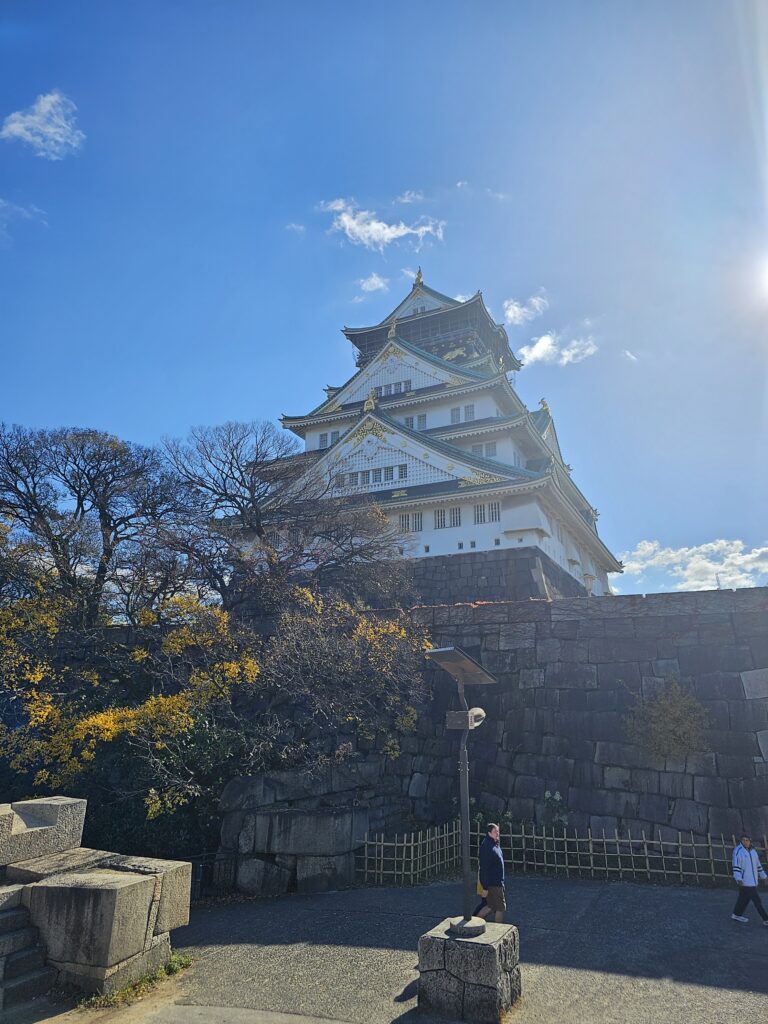
The area within the castle grounds contains citadels, gates, turrets, massive stone walls, and huge moats. It’s a great area to walk around to appreciate all of the impressive architecture. The stone walls are comprised of an estimated 500,000 – 1 million stones. The moat walls stand over 65 ft and are 295 ft wide. They’re certainly an impressive sight as you walk amongst them.
There’s two separate moats which encircle the castle and the castle park. Both are huge and provide a nice walk if you have the time and really want to take in views of the entire premises and see the castle from all angles.
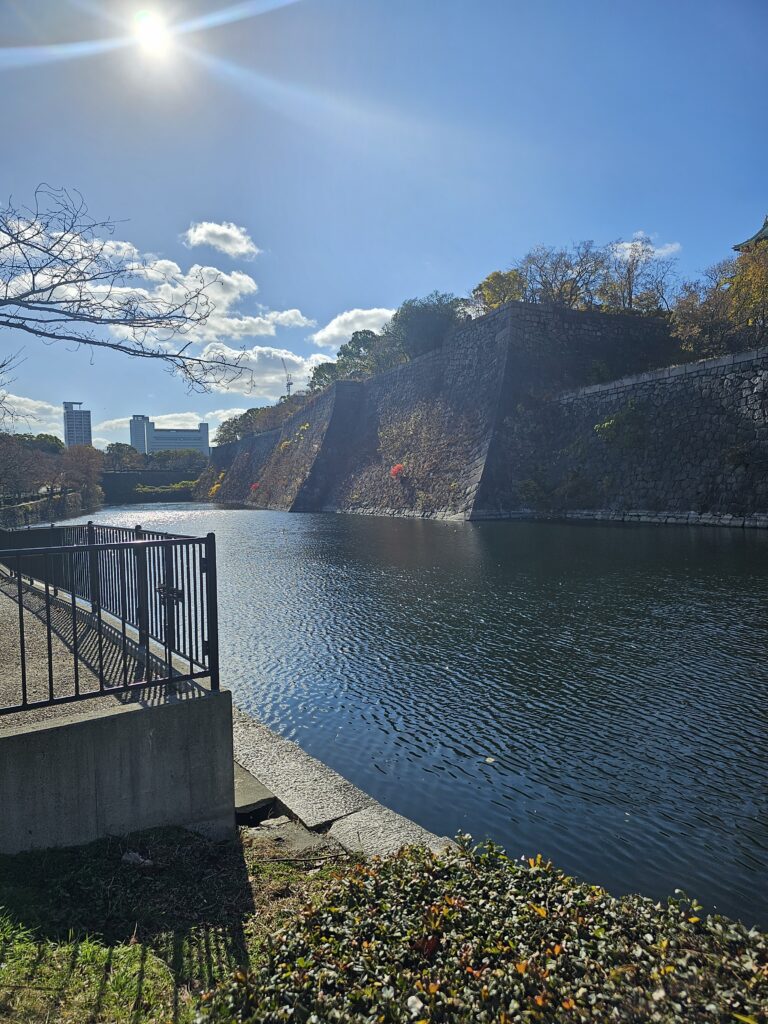
The inside of the castle is completely modern and is a museum that provides the history of both Hideyoshi Toyotomi and the castle. The very top of the museum provides a great view of the castle grounds and of the surrounding Osaka area. You do have to pay a small entrance fee in order to enter the museum. The museum is interesting, especially if you’re a museum fan or history buff, but it would have been great if they had tried to re-construct how the castle may have once looked at the height of its powers. Wishful thinking.
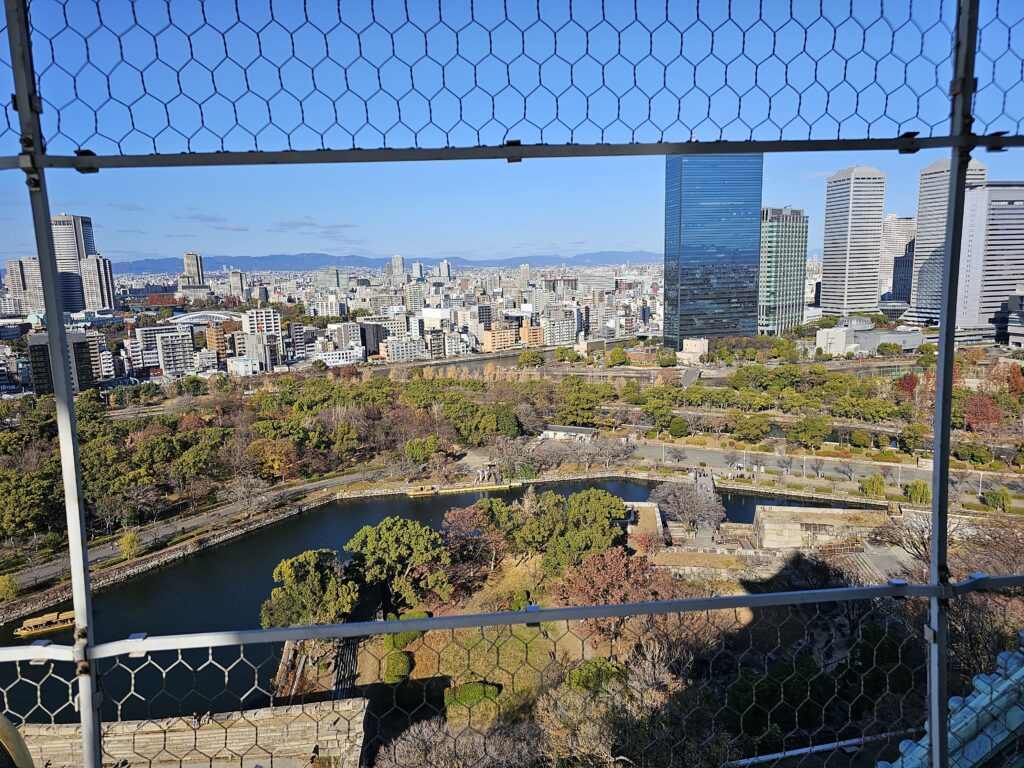
While the castle itself is the highlight, the surrounding Osaka Castle Park is very large as well. It’s about 2 square km with lots of green space. It’s really a green oasis within Osaka. It really is a nice area to just take a stroll through. You can easily bring some snacks and drinks and just hangout in this area for a nice little break from all the sight-seeing.
The park gets very popular during cherry blossom season due to its abundance of cherry blossom trees in the area, which I imagine would be quite stunning. The fall colors within the Osaka Castle Park would be sight to behold as well.
Is Osaka Castle Worth Visiting?
If you’re visiting Osaka, the Osaka Castle is most likely one of the bigger attractions you’re looking to visit. If it’s not, it should be. It really is one of the bigger attractions in all of Japan and one of its most famous castles. Once you get there and start walking around the Osaka Castle Park, cross over the moat bridge into the inner Osaka Castle grounds, you’ll understand why the castle is such a popular destination.
In a sense, you feel like you’ve been transported back in time once you’re walking around the enormous stone walls and stand up on them and look out over the moat. It’s really a spectacle that needs to be experienced if you’re in Osaka!
-
Does The Famous Japanese Bakery LeTAO Live Up To The Hype?
LeTAO is a Japanese dessert company that was founded in Otaru, Hokkaido in 1998. The first shop was opened in a tower right in the center of Otaru, which the founder, Kawagoe, taking inspiration from his travels in France, named La Tour Amitie Otaru – LeTAO – or The Amiable Tower of Otaru. In a creative twist to the name, the name is also comprised of a combination of the syllables of the city it was founded in.
The bread of butter of LeTAO is its cheesecake, most notably the Double Fromage. Each year LaTAO bakers churn out a whopping 25 million Double Fromage cheesecakes. Not only is that a staggering number, but it shows how popular the brand and its cheesecake is worldwide.
Table of Contents
The Original LeTAO in Otaru
The orginal LeTAO shop may have been small enough to fit within a tower but it has now expanded to include a massive store filled with baked goods attached to that original tower. When I went, it was extremely busy. I’m guessing that’s the norm here since LeTAO is now a worldwide brand and clearly extremely popular. Upstairs is where the restaurant is located. I went in the late afternoon, around 4pm, and it was packed. They have a number system so I grabbed a ticket and periodically would come back and check to see where I was in line. It was about a 45 minute wait.
The orginal tower is still there and you can continue going up the stairs from the restaurant floor to get to the top of it. You can enjoy the views it provides of Otaru while you wait for your table. It’s right across from the Otaru Music Box Museum.

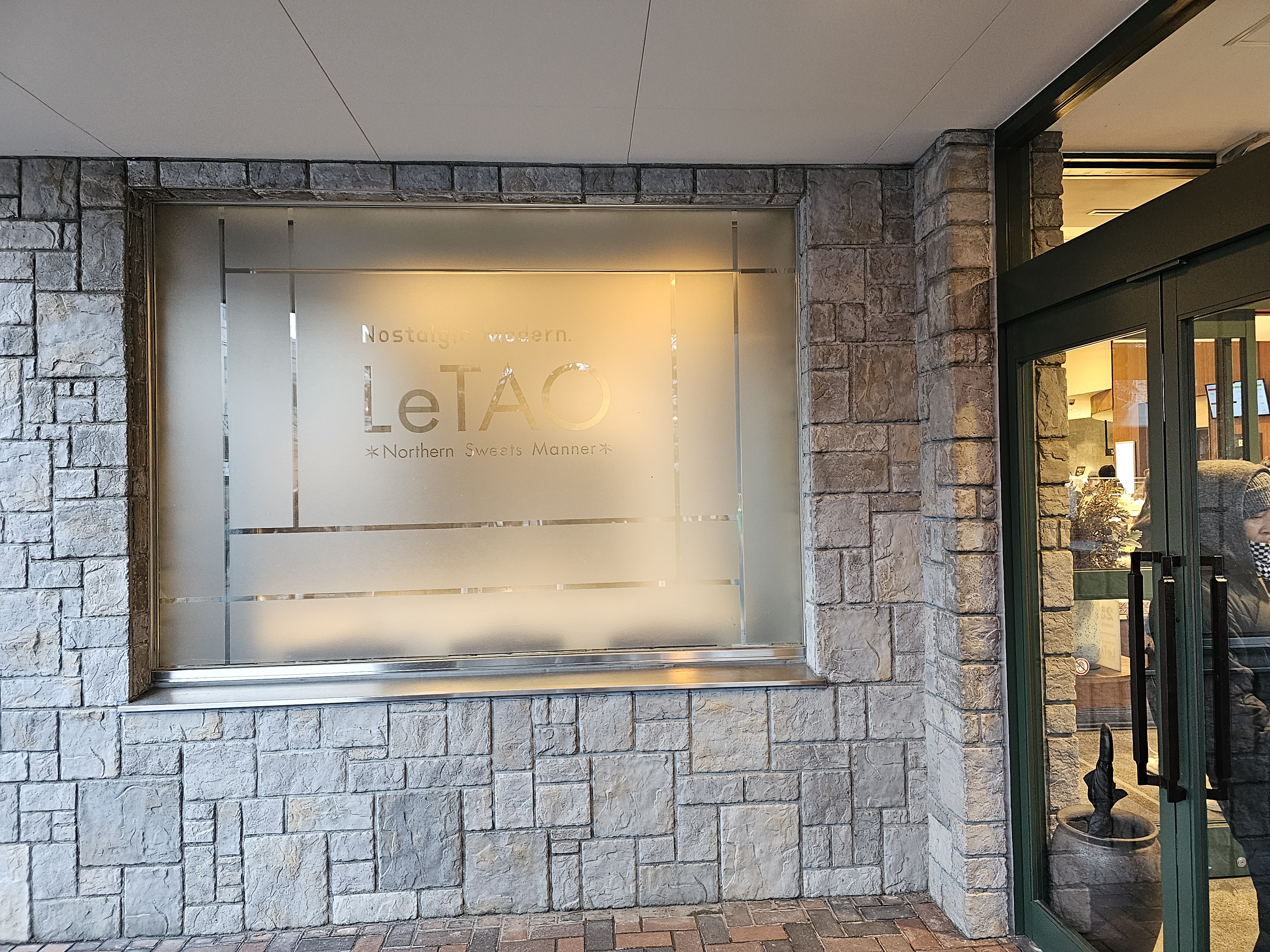
The Cheesecake
With LaTAO being known for their cheesecake, I obviously HAD to try it. There are many many cheesecake and pastry options and different combos to choose from, all of which came with a cup of tea as well. Some of the combos were already sold out for the day, but there were some yummy looking options still on the table to choose from.
I ended up with a slice of the original cheesecake (I believe) and a slice of lemon cheesecake (1500 yen, $9.60 USD).

It’s a very simple, clean presentation. Slices are quite tiny, just big enough to get a nice sample taste. With this being cheesecake it’s probably a good thing the slices are on the smaller side!
I started with the original slice. It was very light with a subtle taste to it. It has the clear cheesecake taste to it but the flavor is not overbearing or super rich at all. Crust is incredibly light as well. Definitely quite tasty.

Next up was the lemon cheesecake. It had two layers on it, with the top layer being whip cream than the bottom layer being the lemon flavored cheesecake. Again, the flavors here are very subtle. With this having a couple layers I expected this to be a lot more rich in flavor. It wasn’t. It’s still very, very, light with a subtle taste to it. I really enjoyed this as well, even more so than the other slice!
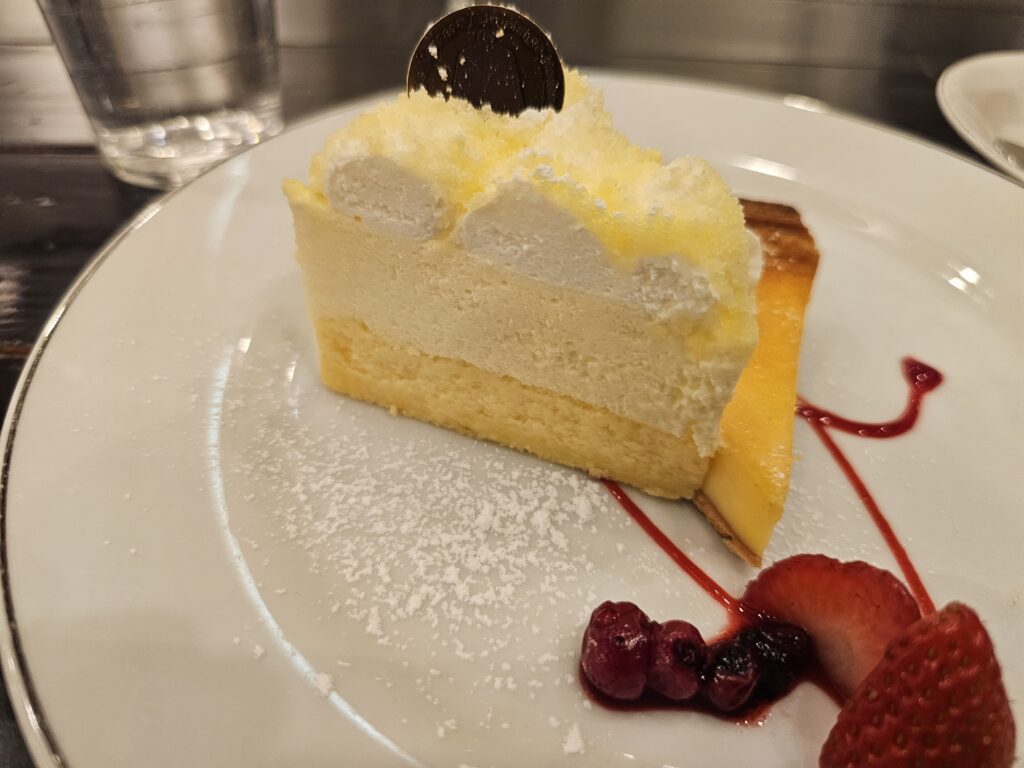
Is It Worth A Visit?
If you’re a fan of pastries and cheesecake LaTAO is certainly worth visiting and stopping by to sample some slices of cake. With so many excellent sounding options, it can be slightly daunting to choose just one or two to sample, but that’s a fun (and hopefully delicious) decision to make.
I was very satisfied with the combo that I bought. Getting two slices of cheesecaske with a cup of tea for sub-$10 USD is an excellent price for such a well-known bakery like LaTAO.
The cheesecake itself is certainly unique. These were by far the lightest slices of cheesecake I’ve ever had, which is a good thing. Even though the flavors were subtle, they were still very flavorful. I actually prefer this subtle falvor where the cheesecake is not overly rich and sweet. I didn’t feel all heavy after eating a couple slices and honestly probably could have sampled another slice or two (don’t judge, lol).
-
Is The Famed Naruto Honten Fried Chicken In Otaru Fulfill It’s Hype?
Otaru is a port city located in Hokkaido, Japan, about a 30-40 minute train ride from Sapporo, it’s a popular day trip from the biggest city in Hokkaido. Of course it has a number of outstanding restaurants to choose from. Depending on how long your stay is you may only get one or two meals here so it can certainly be a tough choice deciding on what to get!
I had seen a video on Naruto Honten and hadn’t had fried chicken up to this point on my trip so I definitely had a hankering for it. I decided to make this my meal in Otaru so I certainly had high expectations and even higher hopes (that I made the right decision lol).
Table of Contents
The Experience
I walked over to the restaurant around noon, so peak lunch time. It’s about a 10 minute walk from the famous Otaru Canal. You know the place is popular and expecting crowds when there’s a ticket machine where you pull a number with a waiting room where you can sit until your turn is called. With it being lunch time it was fairly busy, not overly so though. It took about 15 minutes or so to get my number called.
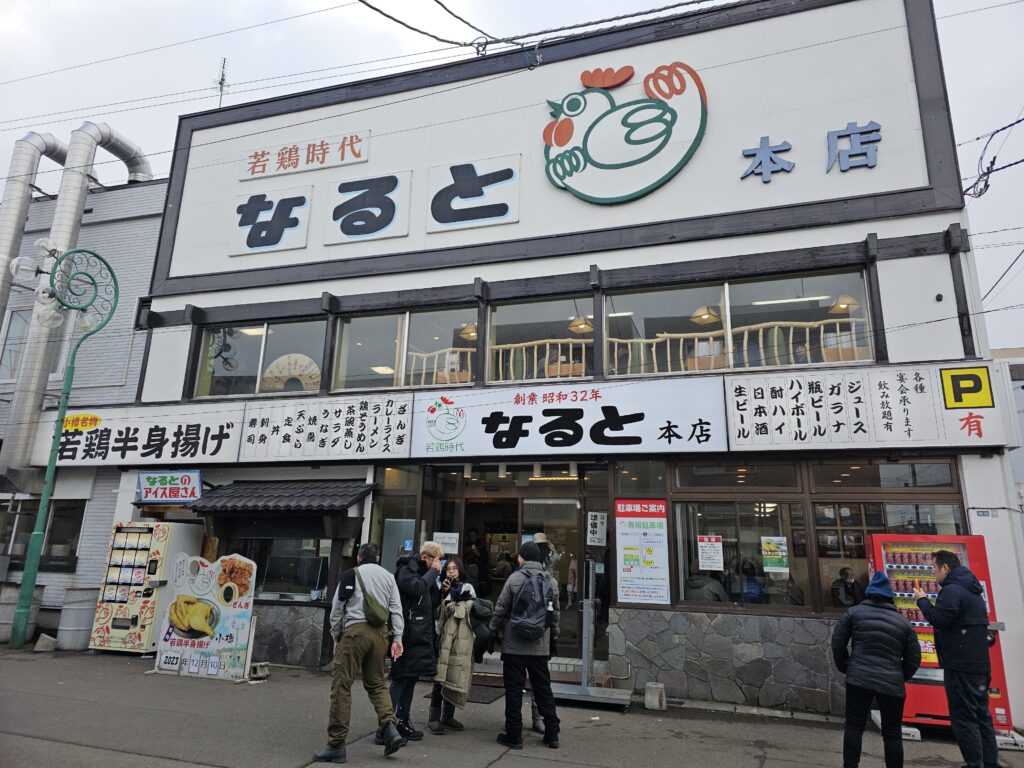
The front of Naruto Honken in Otaru There’s a lot of options to choose from on the menu. They have much more to offer than just the fried chicken they’re known for.
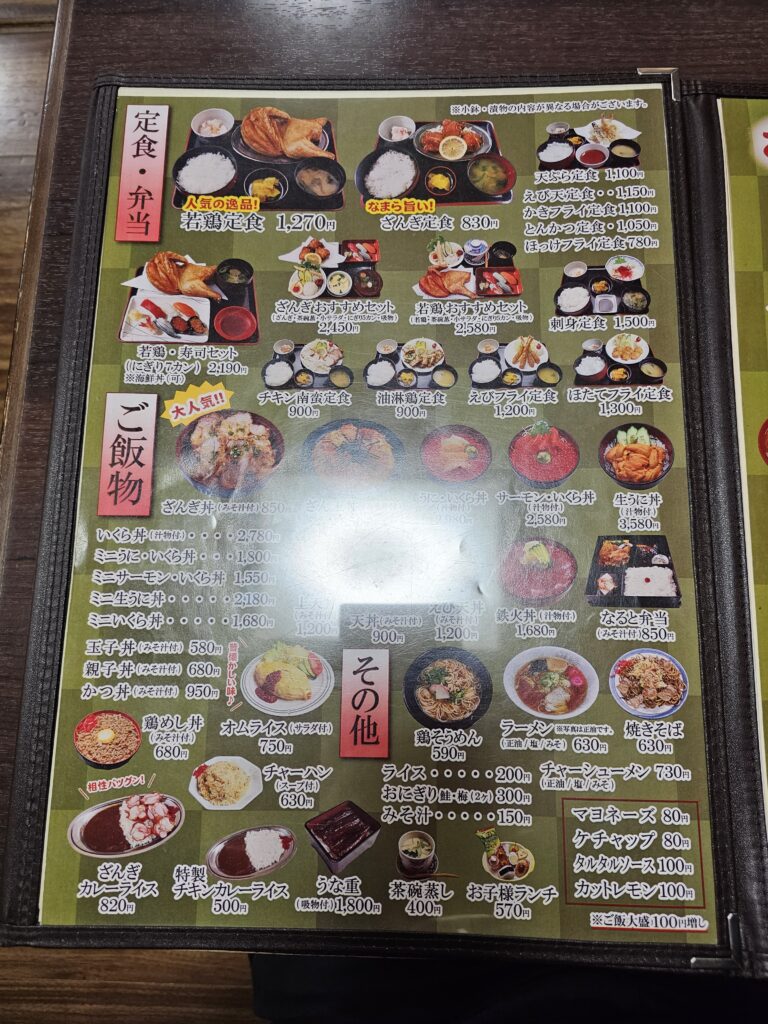
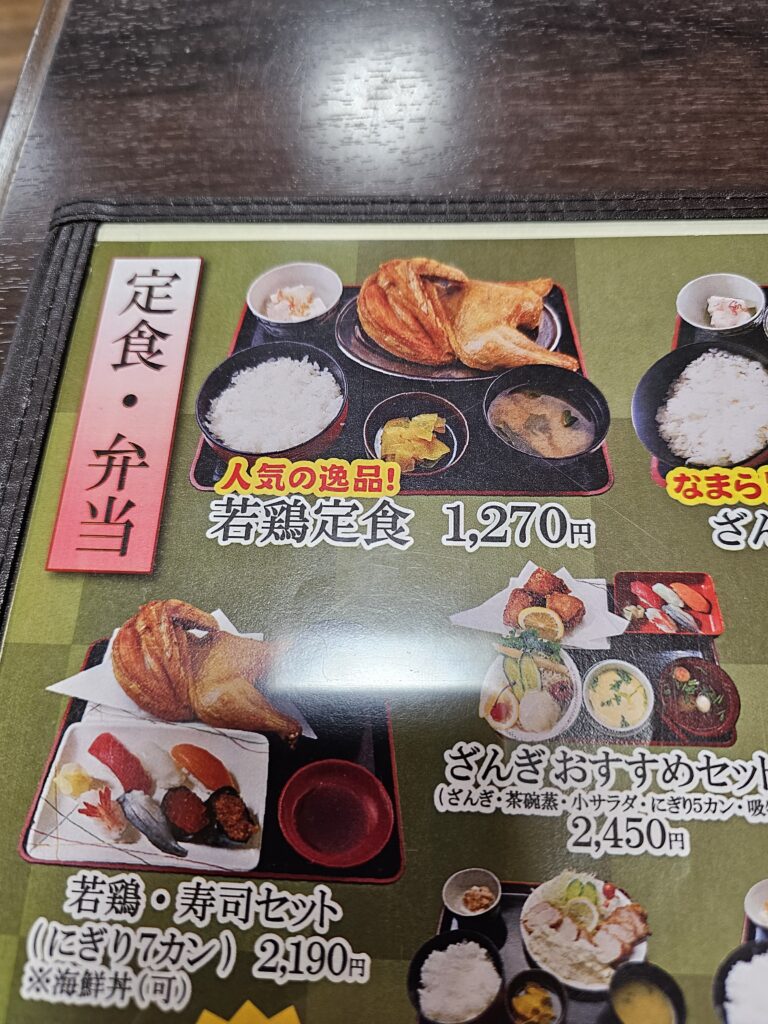
But I came here specifically for the fried chicken. That half-chicken combo meal was just calling my name and that’s what I went with along with a beer (1850 yen, $12.02 USD)
The Fried Chicken
The first thing you notice about the fried chicken is how crisp the skin is. Exceptionally crispy and seasoned well, it really is delicious. Digging into the meat, it’s tender and extremely juicy. With fried chicken you can sometimes run into places where the meat is a little dry, but it wasn’t the case here. The fried chicken was done perfectly and juicy throughout.
The seasoning is mild which I enjoyed. It’s not overly salty at all. For my taste preference it was perfect. The fried chicken isn’t very greasy either, another positive!
The combo meal also came with a bowl of rice, miso soup, tofu, and radish. Quite a filling meal for $12!

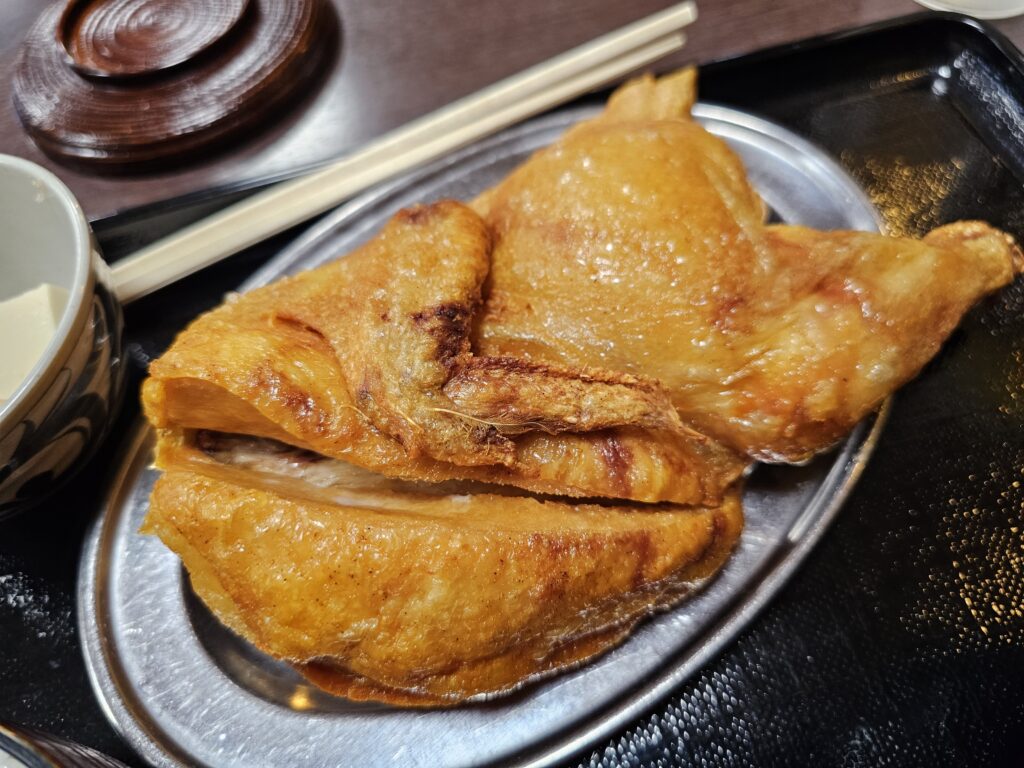
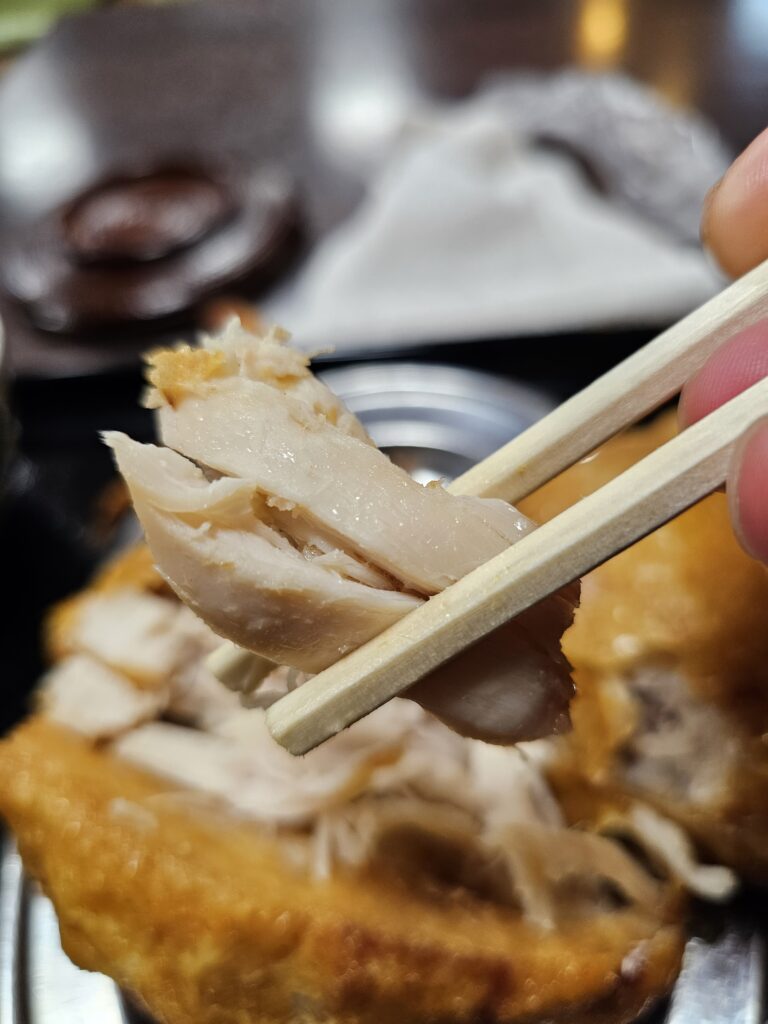
Is Naruto Honten worth visiting?
If you’re in the mood for fried chicken and have had your fill of sushi (which Otaru is also known for) then Naruto Honten is certainly worth the trip. It’s an iconic, well-known establishment in Otaru and the fried chicken is quite good! You get quite a bit of food for only $8.25 as well.
-
The Popular Okonomiyaki Is A Must Have While Visiting Osaka
Okonomiyaki is a popular, savory pancake dish that is found throughout Japan. Consisting of a flour batter and cooked on a teppan, common ingredients include cabbage, meat, and seafood, with toppings including a thicker worcestershire type sauce, dried seaweed flakes (aonori), bonito flakes, Japanese mayonnaise, and ginger.
It’s prepared much like a pancake with the batter and ingredients pan-fried on both sides of the teppan.
Originally created in Osaka in the 1930s, it quickly spread throughout the Kansai region (Nara, Wakayama, Kyoto, Osaka, Hyogo, and Shiga). This version of okonomiyaki is what is generally found throughout Japan. In Hiroshima they have their own distinct take on the popular dish, where the ingredients are layered instead of mixed and there is about 3-4x more cabbage used with noodles and a fried egg topping it off.
I didn’t get to visit Hiroshima this trip, but was in Osaka to have their style of okonomiyaki.
Table of Contents
Okonomi Yukari
While out and about in Osaka, I ran into Okonomi Yukari which is a okonomiyaki restaurant that has been around since 1953. There’s a few of these restaurants throughout Osaka. The one I went to in the Kita Ward is the flagship location. With it being my first night in Osaka I thought it was a great time to get my okonomiyaki for the trip!

They had many different variations of okonomiyaki here, with a large selection of toppings you could add as well. I went with the most popular choice – the Special Mix Yaki (1450 yen, $9.25 USD). This particular mix included pork, cuttlefish, and shrimp.
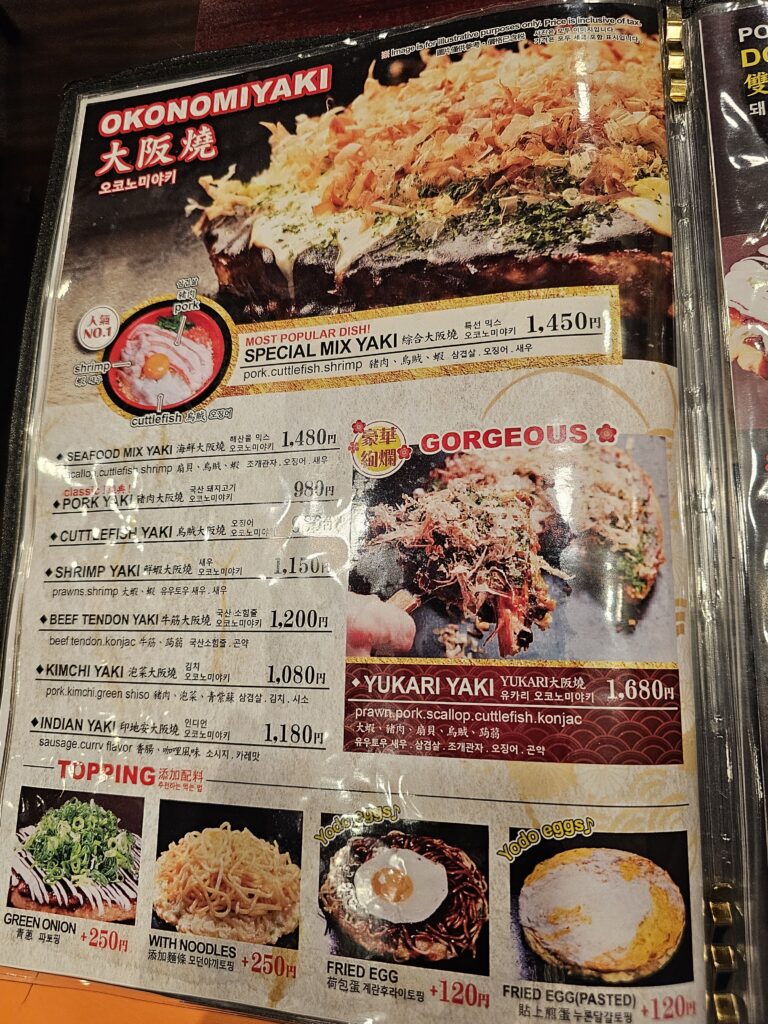
The table you sit at has its own teppan and once you order your server comes by with a bowl with all the ingredients and an egg which gets cracked into the mixture and you stir it all up. You can either make it yourself or they will make it for you. Since I had zero idea of how to actually cook the okonomiyaki, I let the pro handle it.

Just like a big ol’ pancake chalk full of ingredients with pork laid on top, this is what the okonomiyaki looked like when it was first placed on the teppan.
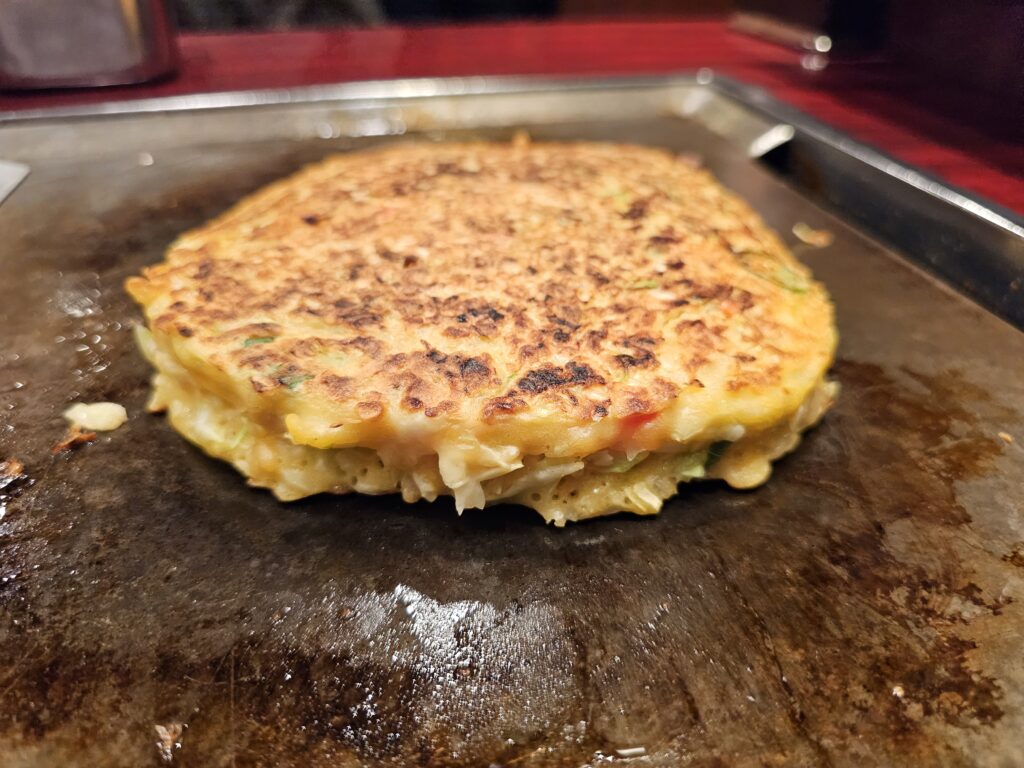
It takes some time to get it nice and cooked (at least when you’re hungry and have food cooking right in front of you) but it started coming along. The outside was getting nice and crisp and the inside was starting to cook as well. It gets flipped a few times before it’s ready to be served.
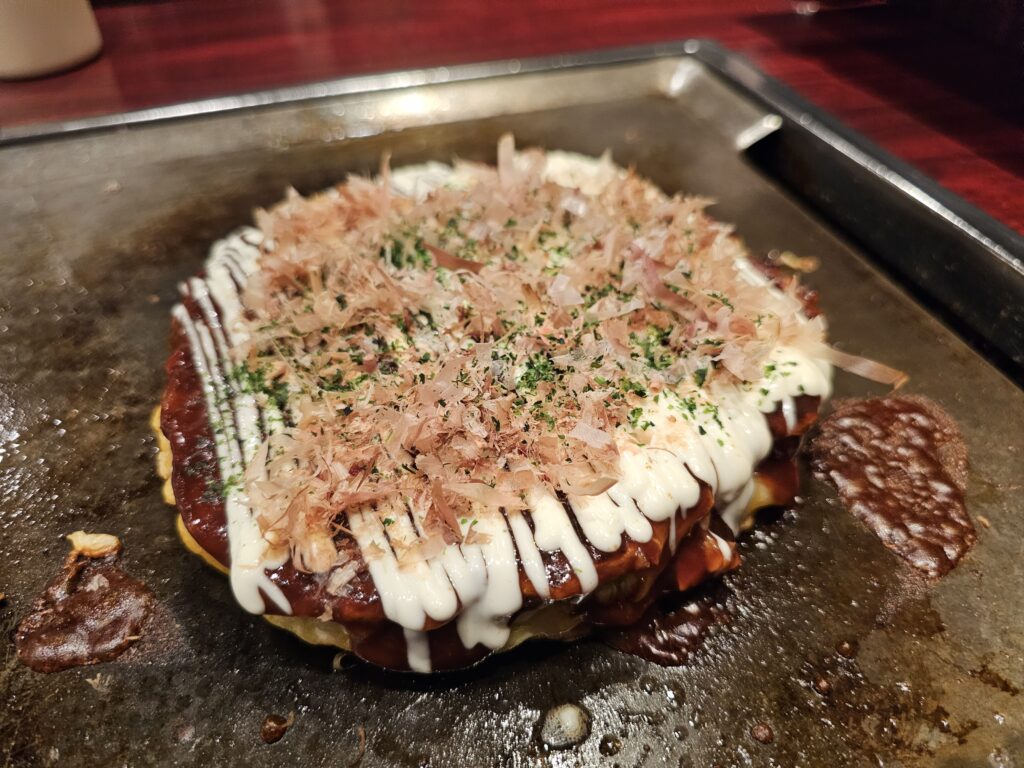
Once fully cooked through the thicker worcestershire type sauce, dried seaweed flakes (aonori), bonito flakes, Japanese mayonnaise all get added. The pictures don’t quite do this justice. This is a large, dense, pancake! There’s a spatula that you use to cut the okonomiyaki into smaller pieces so you don’t need to dig into the whole thing.
The Okonomiyaki
After watching this cook before my very eyes I was ready to dig in! I gave myself a nice chunk of the pancake and dug in.
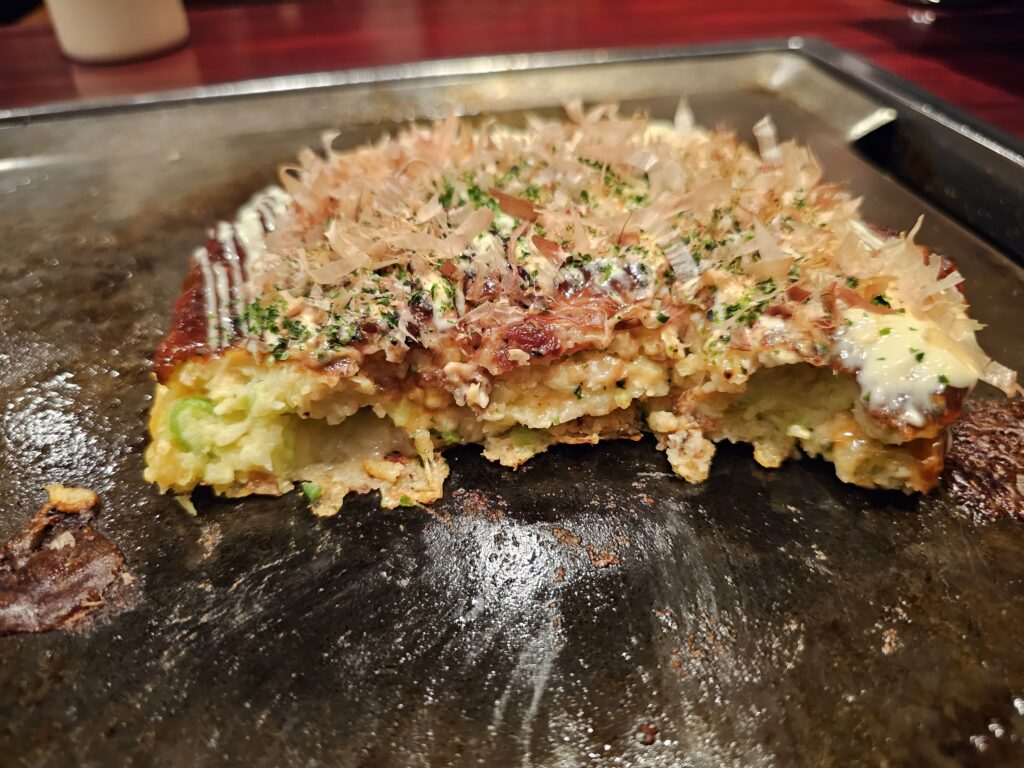
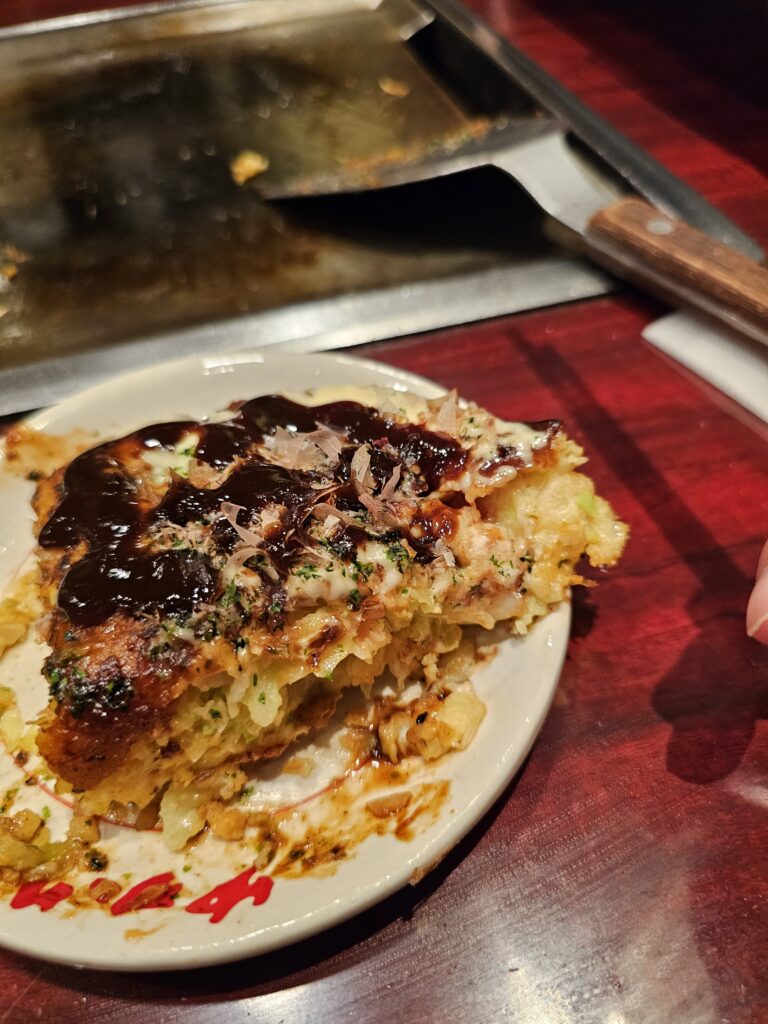
The outside had a nice char to it with a slight crunch. The inside is fairly packed with all the goodies. The cuttlefish was really tender and well done. It wasn’t dried out at all. The shrimp was sweet and the pork was a nice tasty surprise when you got a bite of it. There was also some green onion and carrot mixed into this as well which went great with the mixture.
The combination of the worcestershire type sauce and Japanese mayonnaise adds a little sweet and savory to the pancake. They gel well together and are really the perfect complement topping for this dish.
Overall, it was a satisfying, very filling meal! For under $10 USD it was a great value and it’s just one of those meals that you must have if you’rve visiting Osaka!
-
10 Popular Things To Do In Sapporo, Hokkaido
Sapporo, the capital of Japan’s northern most island, Hokkaido, is a fantastic city that offers many sights and things to do. It’s a fairly spread out city and while there is a subway, it isn’t nearly as extensive as the subway systems found in Tokyo or Osaka so some of the locations may take a little longer to get to. But certainly it’s worth the extra effort to explore this wonderful city.
So what are some of the top things to do in Sapporo? Here’s a list of 10 Popular Things To Do In Sapporo, Hokkaido.
Table of Contents
10 Popular Things To Do In Sapporo, Hokkaido:
Visit Ramen Alley
If you’re a ramen fan a visit to Sapporo’s Ramen Alley is a must. With 17 ramen shops within the alley there are plenty of places to try here each with their own unique twist on the beloved food. It’s a unique experience since it’s a narrow alleyway that is packed with ramen restaurants. You won’t this many ramen spots in such a small area anywhere else.
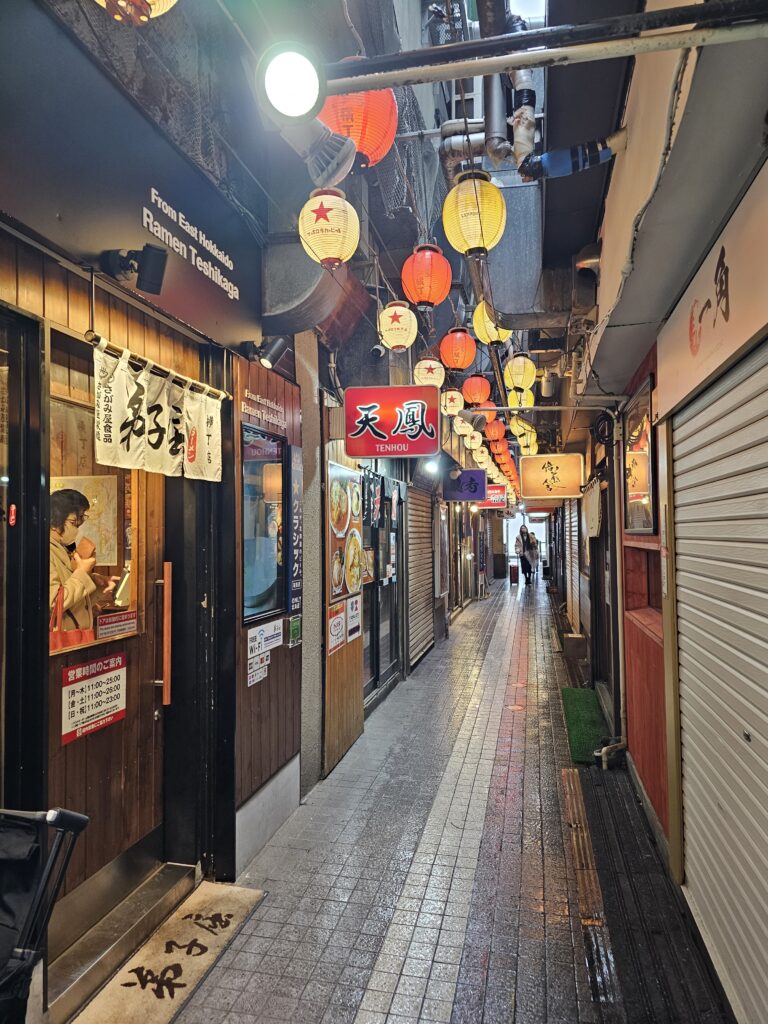
Take A Stroll Through Odori Park
One of the top things to do in Sapporo is to visit its famous Odori Park. Located right in the middle of the city, it’s nearly impossible to miss. This overly large strip of a park, over a mile long, that has major streets running along side of it. The Sapporo TV Tower is also located here and can be seen throughout the park.
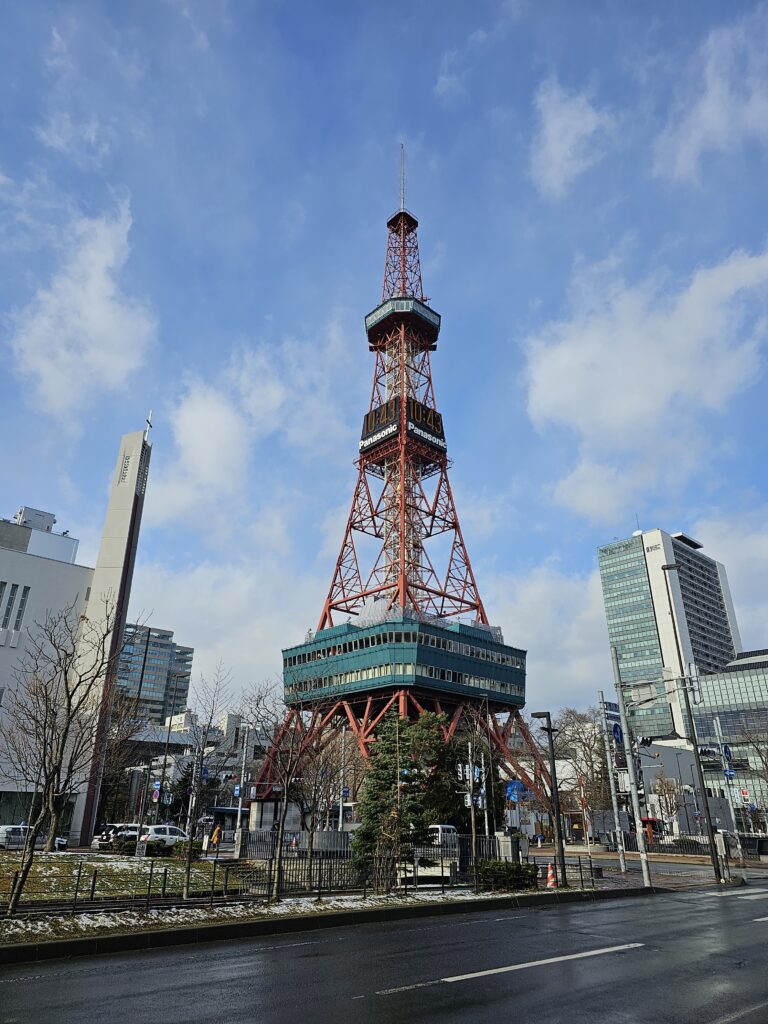
There are several festivals held throughout the year at the park including the Snow Festival, Lilac Festival, Soran Festival, and Beer Garden.
In December Odori Park gets a Christmas makeover with several exhibits with lights and a German Village that has stalls selling Christmas decorations and food. It’s a good time!

It’s definitely worth visiting to see what’s going on even outside of the popular festivals. It’s certainly a nice stroll through a unique park which is why it lands on my popular things to do in Sapporo list.
Check Out Maruyama Park and Everything Within It
Maruyama Park is a large sprawing park in Sapporo housing over 300+ different types of trees and plants with over a hundred different types of birds. It’s a huge park that offers a lot when visiting and is certainly one of the top things to do in Sapporo.
One of the most famous shrines in Hokkaido, Hokkaido Jingu Shrine, is located right next to it.
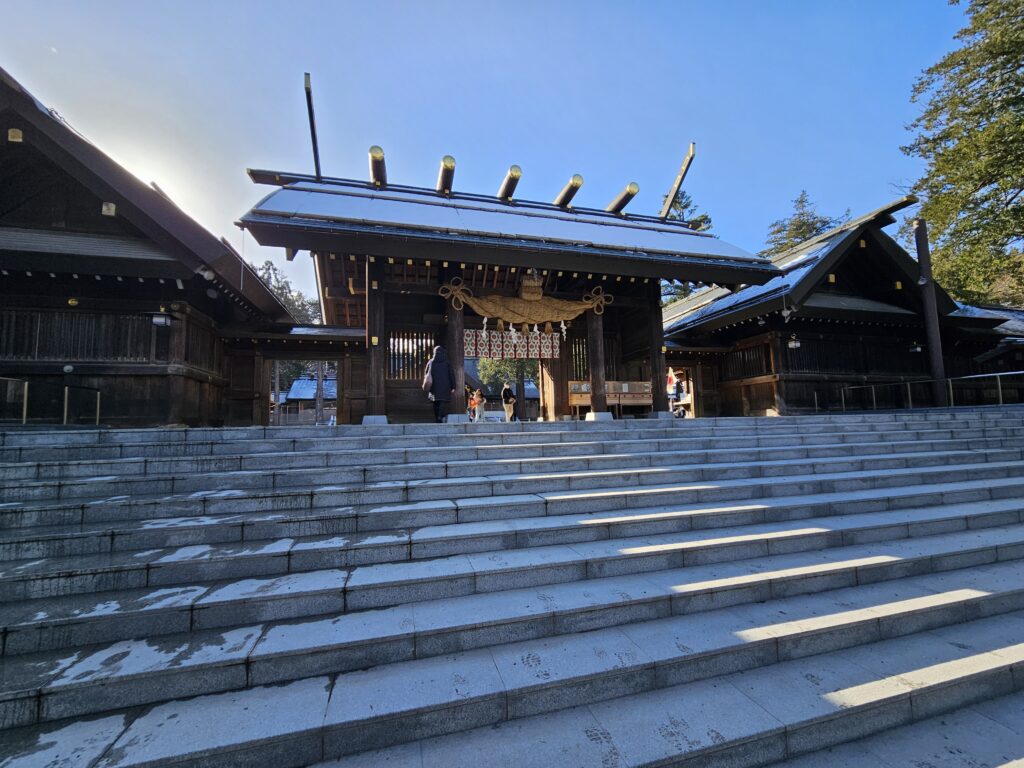
The Maruyama Zoo has been housed within the park since 1951. It has over 170 different species including polar bears, wolves, deer, elephants, giraffes, hippos, chimpanzees, and brown bears, just to name a few.
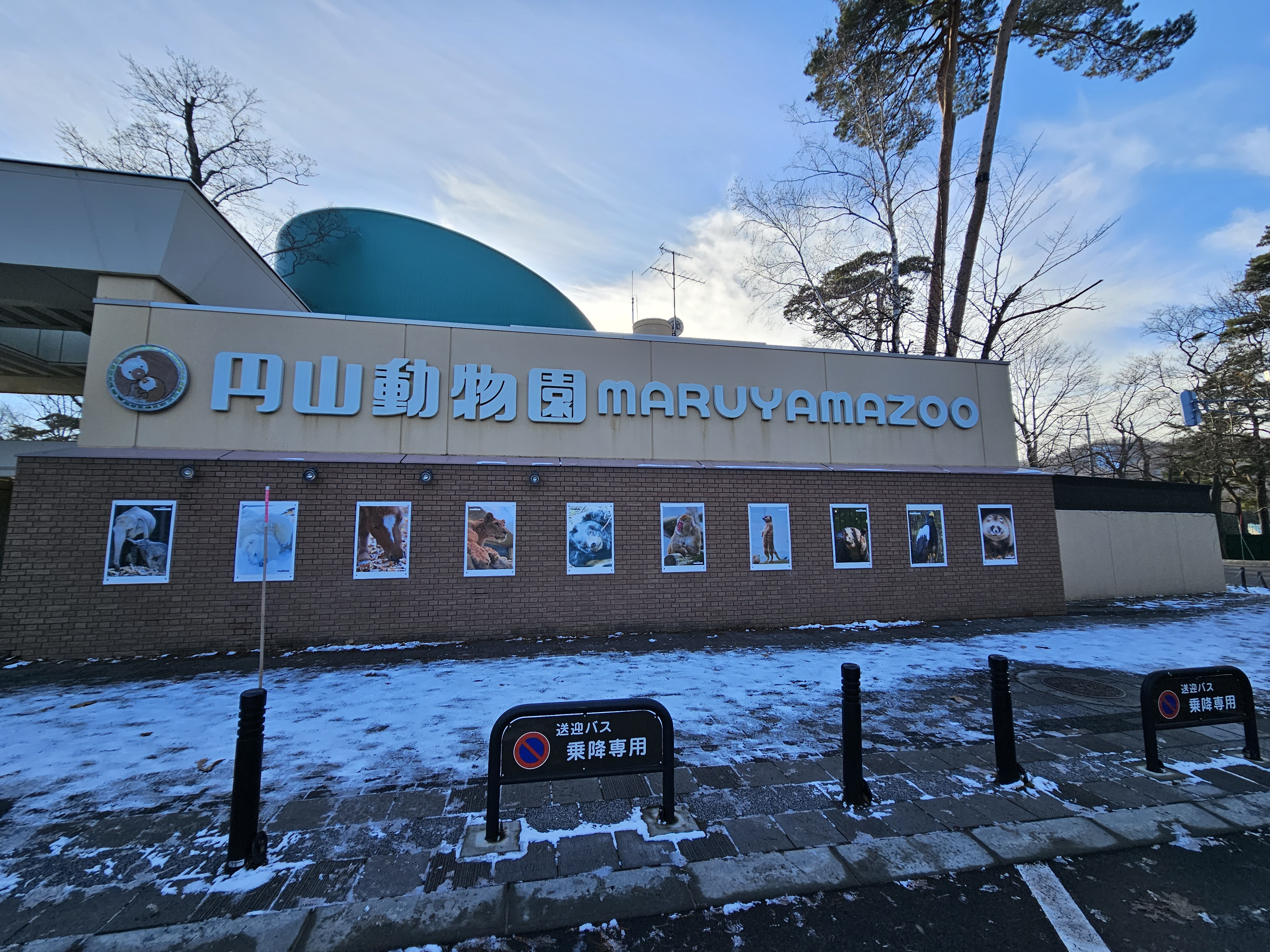
The Maruyama-Hachijuhakkasho Trail offers a nice little hike within the park that takes you up to a point that has a spectacular view of Sapporo. It’s a short hike which will take you uphill for that view but isn’t overly strenous. A visit to Maruyama Park is definitely one of the more popular things to do in Sapporo and is well worth the visit.

Go To The Sapporo Beer Museum
The oldest beer in Japan, Sapporo, was founded in 1876 and has a long history not only within Sapporo but Japan itself. It remains one of the country’s most popular beers and is quite popular around the world. The Sapporo Beer Museum is the only museum in Japan that’s dedicated to beer. This attraction is one of the most popular things to do in Sapporo.
The museum itself is free. It’s pretty tiny and will only take about 20-30 minutes to walk through. There’s a paid tour as well which provides more detail about the history of the legendary beer. On premises as well is a beer garden, a couple of stores with merchandise, and some restaurants, including a Genghis Khan restaurant.


Eat Famous Hokkaido Dishes
Hokkaido has a few signature dishes that originate from the area and are trying some of these dishes is certainly one of the most popular things to do in Sapporo. Genghis Khan, Soup Curry, and Miso Ramen, all originate from Hokkaido. You will find these dishes in other parts of Japan, but the number of places you can purchase these from are more plentiful in Hokkaido and are certainlty worth trying!
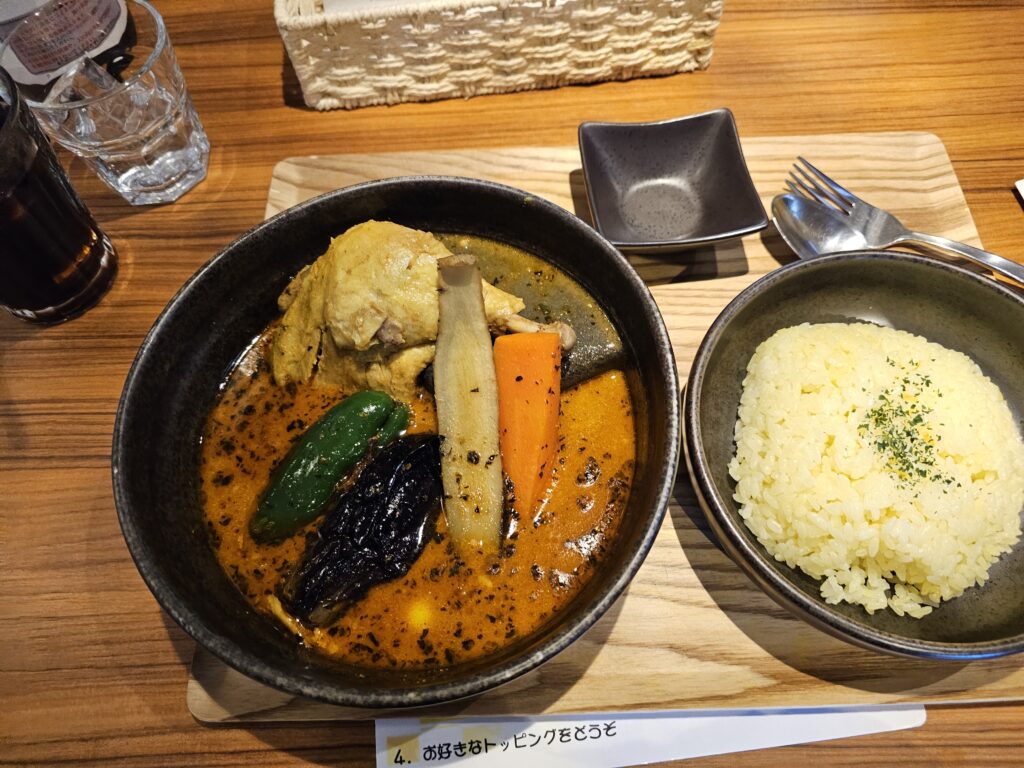
Soup Curry 
Genghis Khan 
Miso Ramen Enjoy The View Of Sapporo On The Mt. Moiwa Ropeway
Mount Moiwa is a small mountain southwest of central Sapporo. At the base of the mountain you’ll find the Mount Moiwa Ropeway. There’s a transfer station about three quarters up where you get into another cablecar that takes you to the very top of the mountain. This is where the observation deck is located along with a restaurant. The observation deck offers some stunning views of the city. It’s especially nice at night when the city is lit up! The ropeway and view are what makes this one of the most popular things to do in Sapporo.
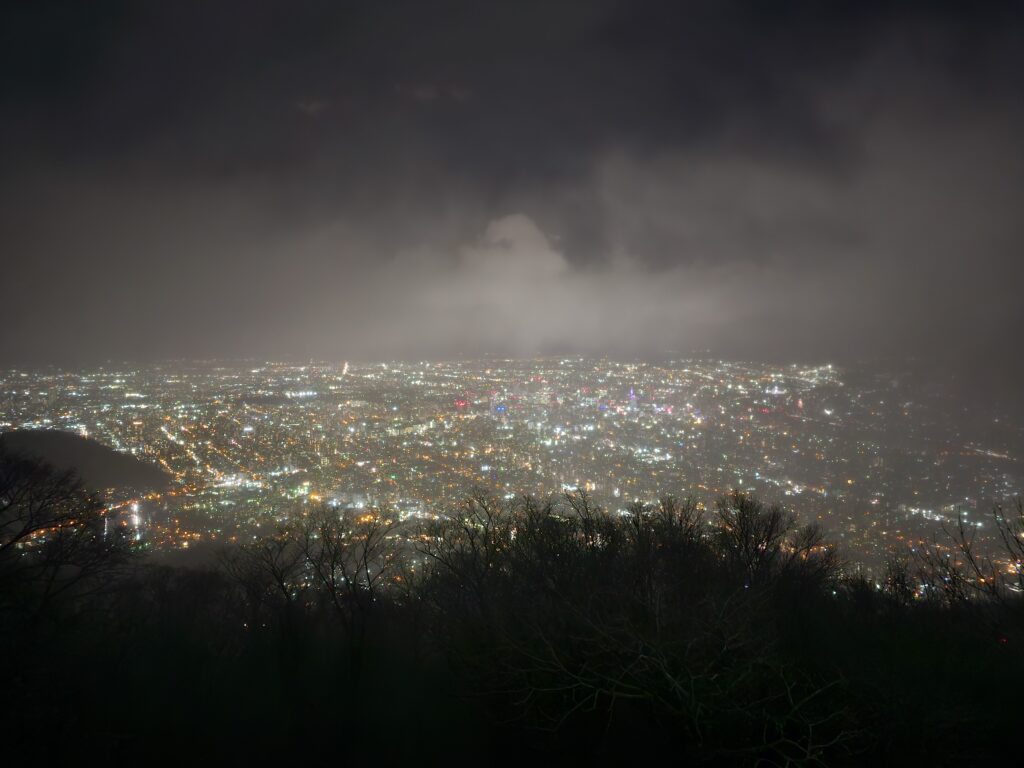
Visit The Hokkaido University Museum
If you enjoy museums then the Hokkaido University Museum is worth a visit. This free admission museum is located on the Hokkaido University campus and is one of the more popular things to do in Sapporo. The three floor museum houses over four million specimens and documents. It educates visitors on all the different types of research that has occurred on campus. The museum also has a small cafe. The museum itself is fairly small, this is afterall on the campus of a college, but it’s fascinating to see, especially for museum buffs. Also, the ice cream in the cafe is top notch!
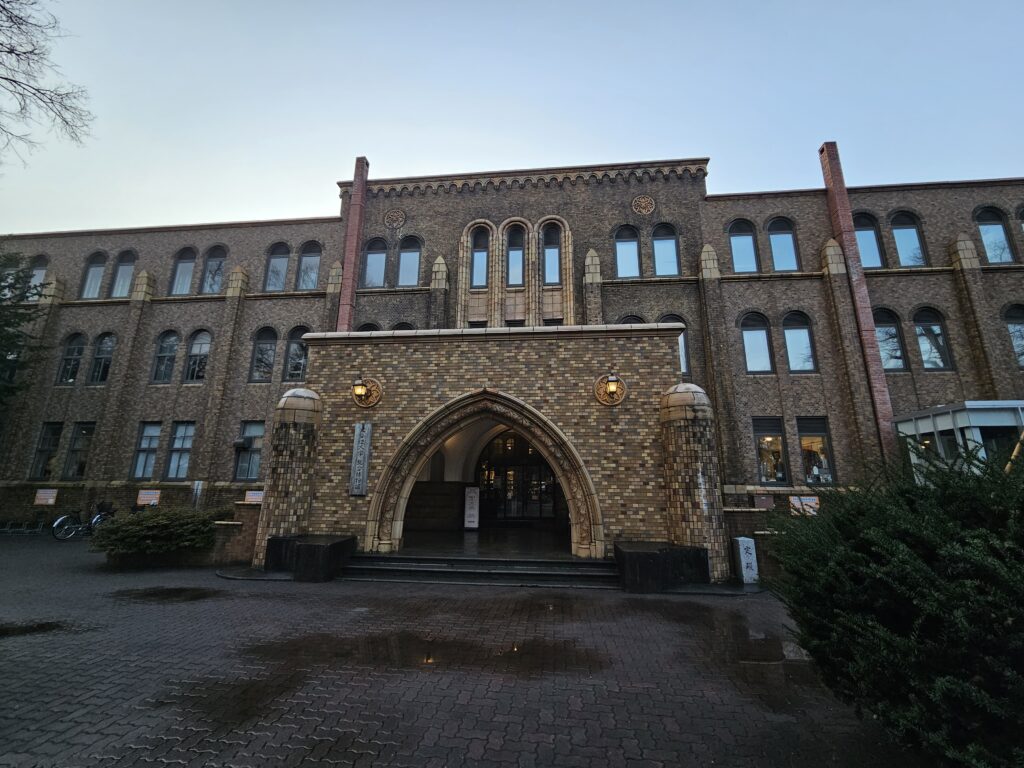
Do Some Shopping At Tanukikoji Shopping Street
Undoubtedly, one the of most popular things to do in Sapporo is shopping. One of the more popular areas is the Tanukikoji Shopping Street. This pedestrian only shopping street is HUGE. It runs for seven blocks and is about 900 meters. It’s home to over 200 shops, restaurants, and other stores. You can find essentially everything here be it souvenirs, clothing, food, dessert, entertainment. If you’re a shopper you’ll no doubt be spending some time here. It’s very close to Sapporo Station as well, just a 10-minute walk.
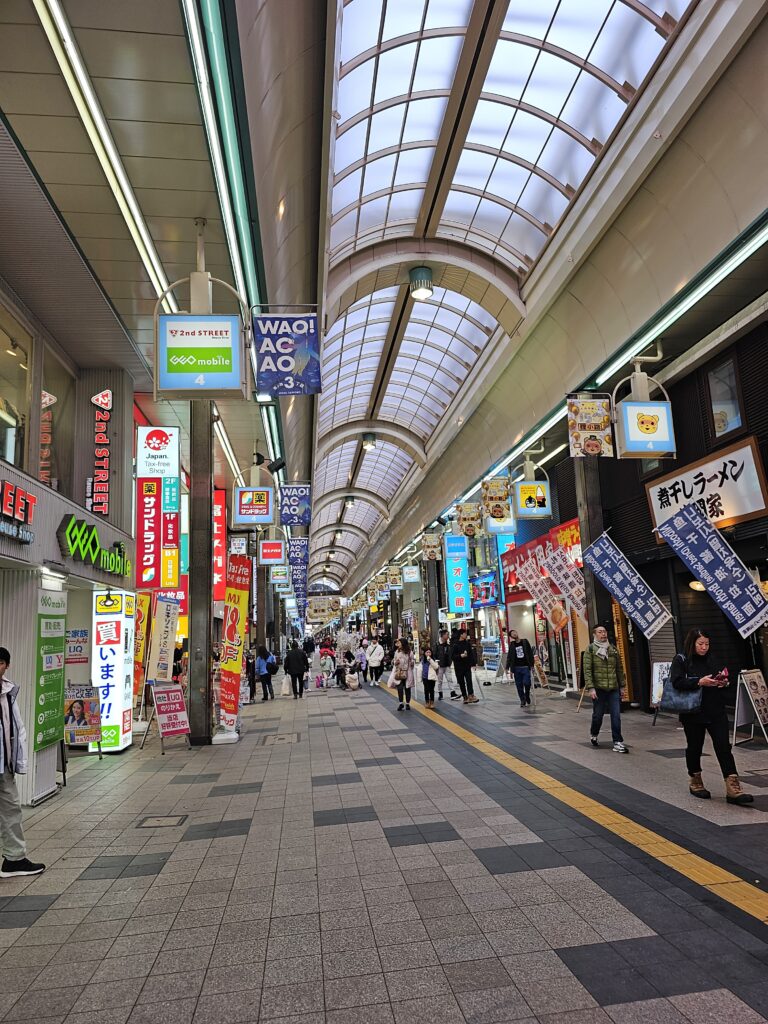
Check Out Es Con Field Hokkaido
The impressive stadium to the only baseball team in Hokkaido – the Nippon Ham Fighters – Es Con Field Hokkaido field opened in 2023 and seats 35k people. This is a beautiful stadium with a retractable roof, natural grass, and massive glass wall in the outfield which provides excellent natural lighting. The field is open to visit during the off-season as well. The food court, brewery, stadium tour, and massive team store were all open in the middle of December. It’s a little further out from Sapporo and is a 20 minute walk from the train station to the stadium but it’s certainly worth it. If you visit during the season, seeing a game here should certainly be high on the list for any baseball fan.
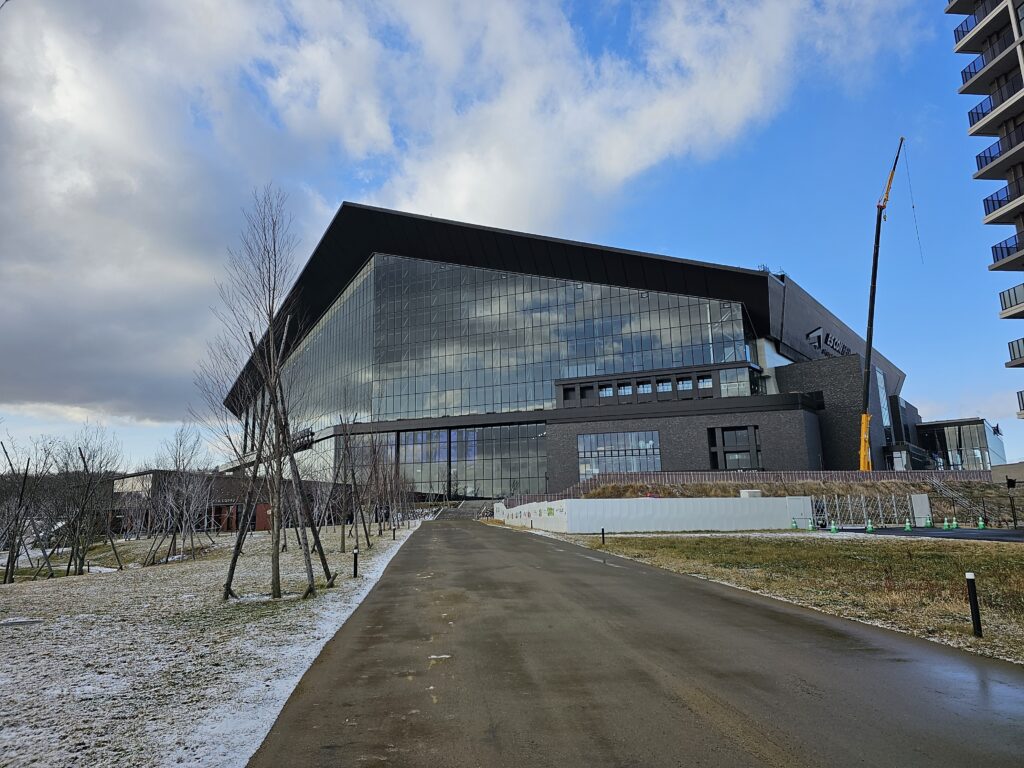

Sapporo Hitsujigaoka Observation Hill
This attraction is a bit of a trek if using public transit as you will need to take the bus. The pros: The scenic view of the famous bronze statue of Dr. William S. Clark. Clark was a famous American professor who came over to Hokkaido in 1876 and established the Sapporo Agricultural College, which is now Hokkaido College. His parting words “Boys, be ambitious” are immortalized on the statue as well. It’s a fantastic view with a wide open field in the background with the Sapporo Dome visible.
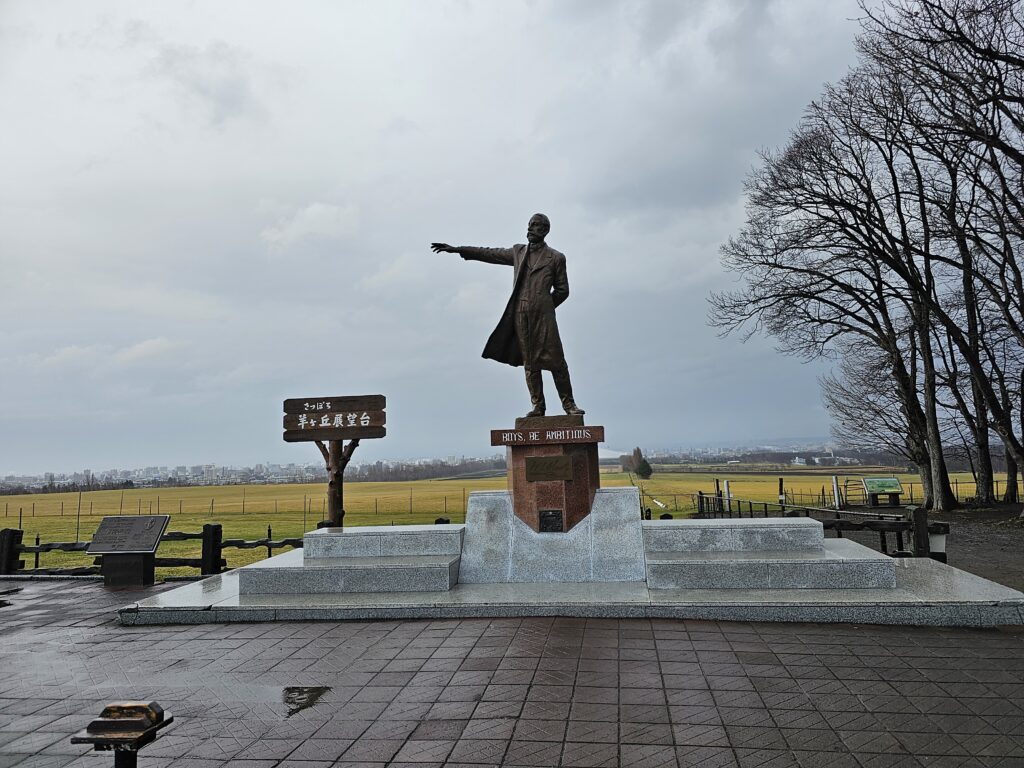
The cons: There’s not much else here. There’s some additional smaller buildings that serve as mini museums, and a restaurant and a place to grab some ice cream, but outside of that there’s not a ton here. It also costs yen to enter the parking lot. With the amount of time it takes to get here and how little is actually here, I wouldn’t place this at the top of the list of things to do in Sapporo.
Related Posts
The Ramen Alley in Sapporo Hits The Spot For Ramen Lovers
Lively Odori Park in Sapporo Is Well Worth A Stroll Through
Maruyama Park Sapporo Has A Lot To See And Do
Soup Curry In Hokkaido, Japan Is Simply A Must Try
Genghis Khan BBQ Is A MUST TRY If Visiting Hokkaido Japan
Things Get SPICY At This Miso Ramen Joint in Sapporo
Es Con Field Hokkaido Home To The Nippon Ham Fighters Is A Must Visit



